 |
||
|
HOME
|
US Navy -
ships
|
US Navy - air
units
|
USMC - air
units
|
International
Navies
|
Weapon Systems
|
Special Reports |
||
|
US Navy - Guided Missile Destroyer DDG 99 - USS Farragut |
||
|
||
| 07/24 | ||
|
Type, class:
Guided Missile Destroyer - DDG; Arleigh Burke class, Flight IIA Builder: General Dynamics Bath Iron Works, Bath, Maine, USA STATUS: Awarded: March 6, 1998 Laid down: January 9, 2004 Launched: July 23, 2005 Commissioned: June 10, 2006 IN SERVICE Homeport: Naval Station Mayport, Florida Namesake: Admiral David Glasgow Farragut (1801-1870) Ships Motto: PREPARED FOR BATTLE Technical Data: see: INFO > Arleigh Burke class Guided Missile Destroyer - DDG |
||
| images | ||
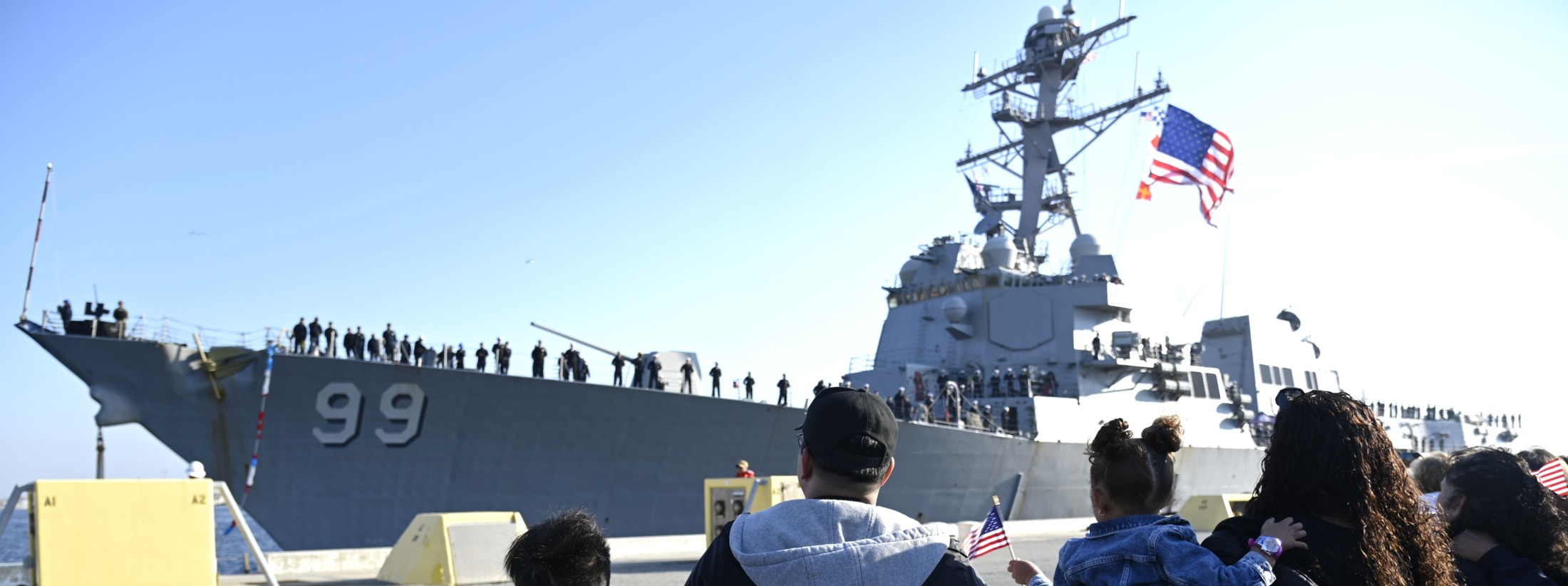 returning to Naval Station Mayport, Florida - February 3, 2024 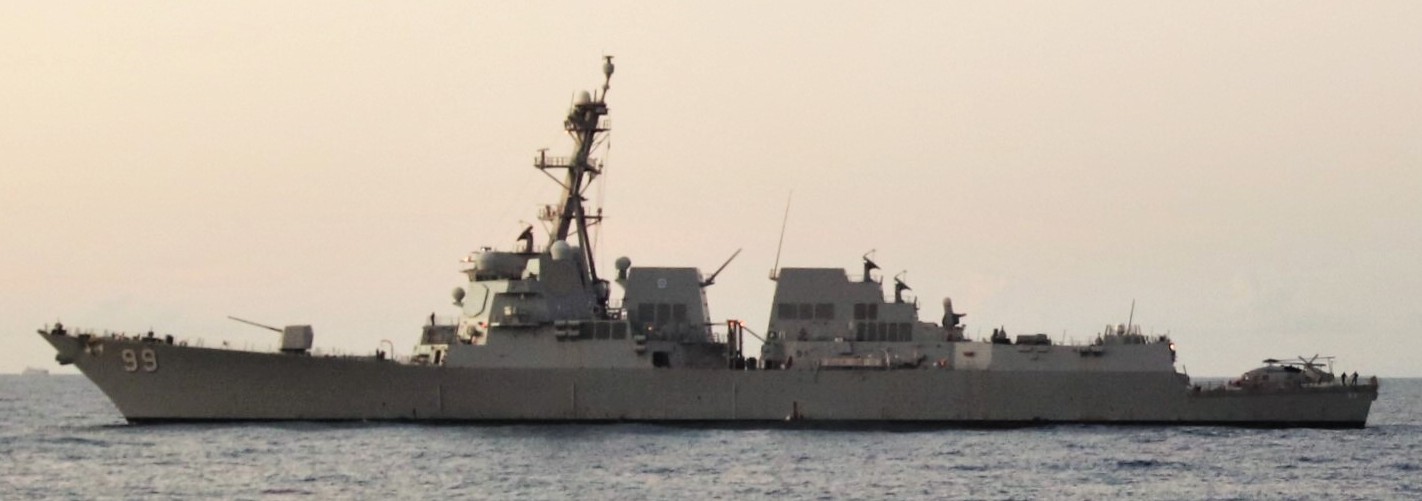 Caribbean Sea - October 2023 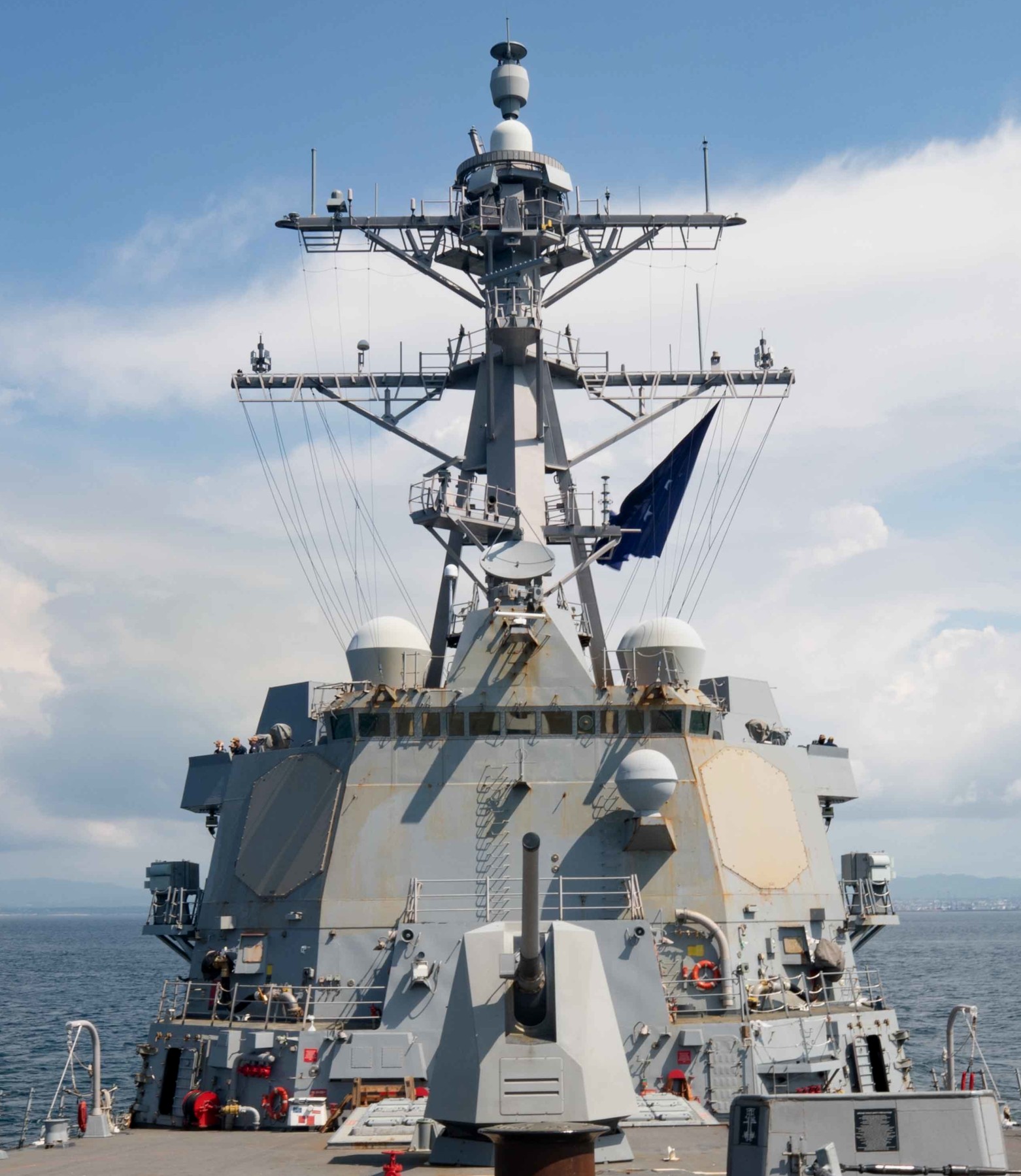 Manta, Ecuador - February 2023 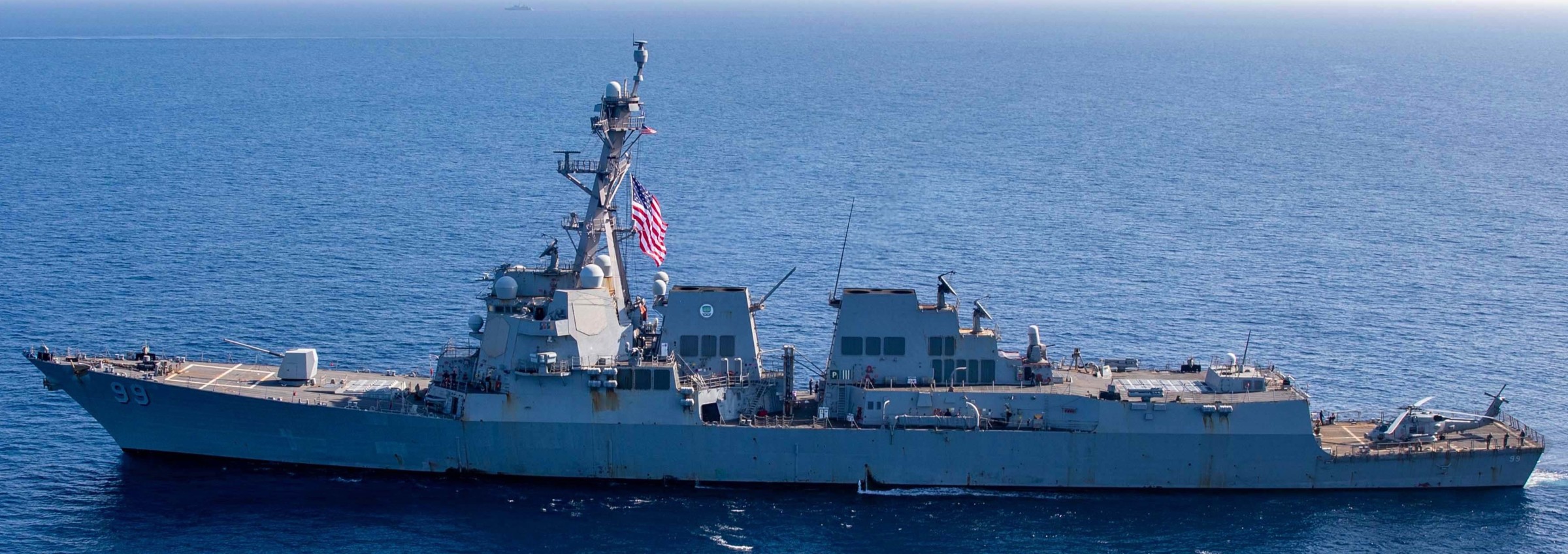 Ionian Sea - October 2022 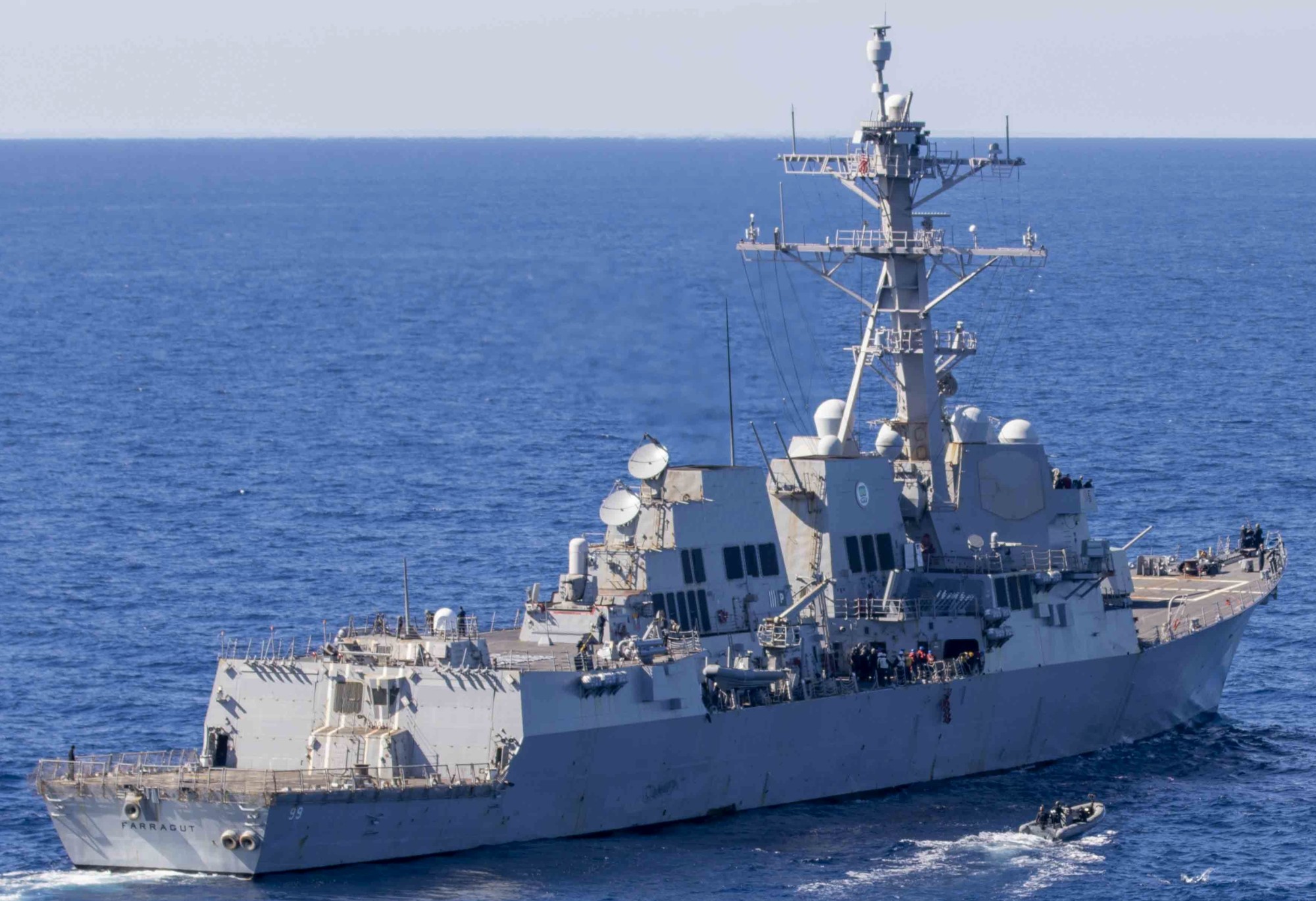 Ionian Sea - October 2022 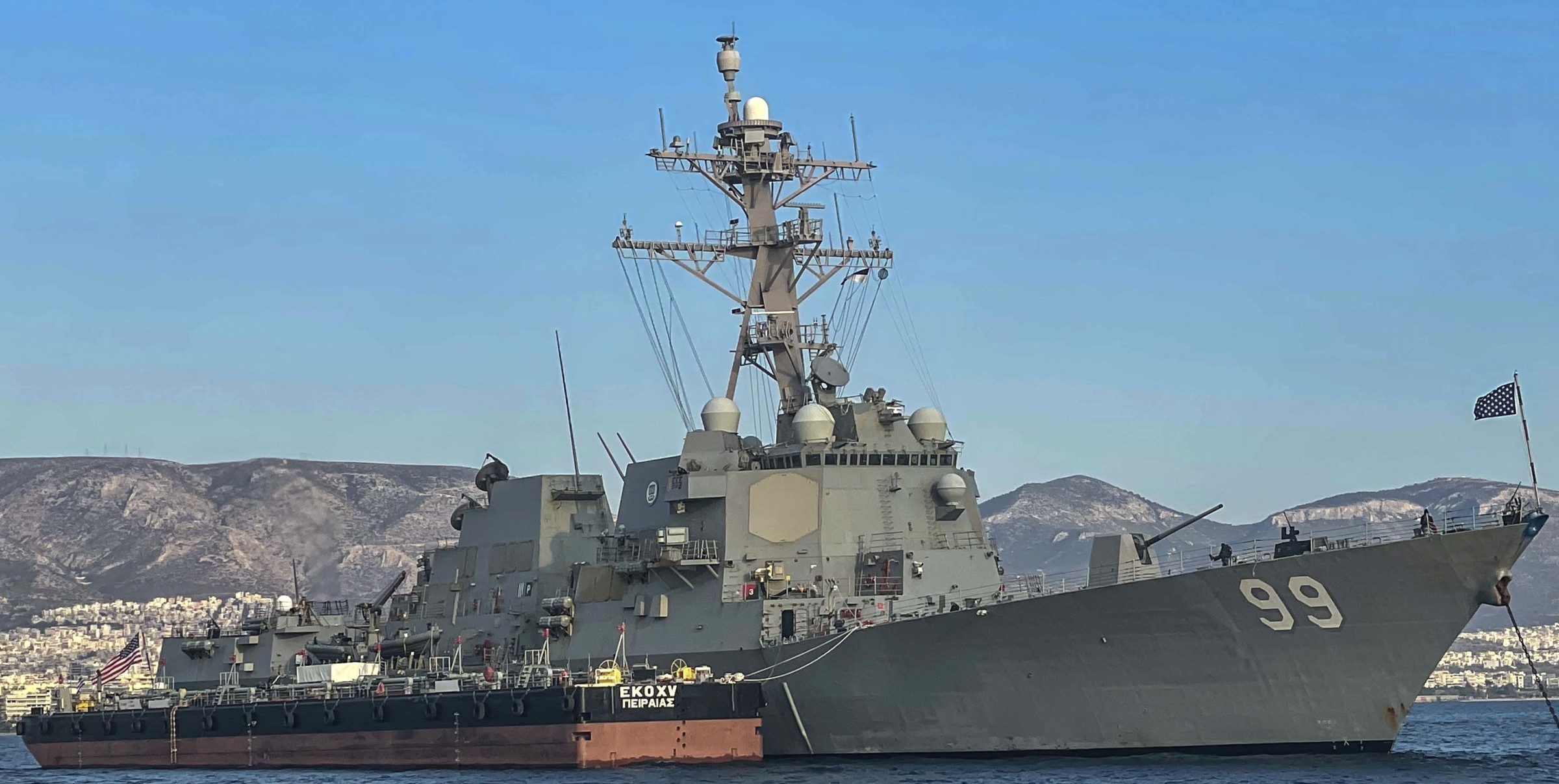 Piraeus, Greece - October 2022  Jijel, Algeria - September 2022 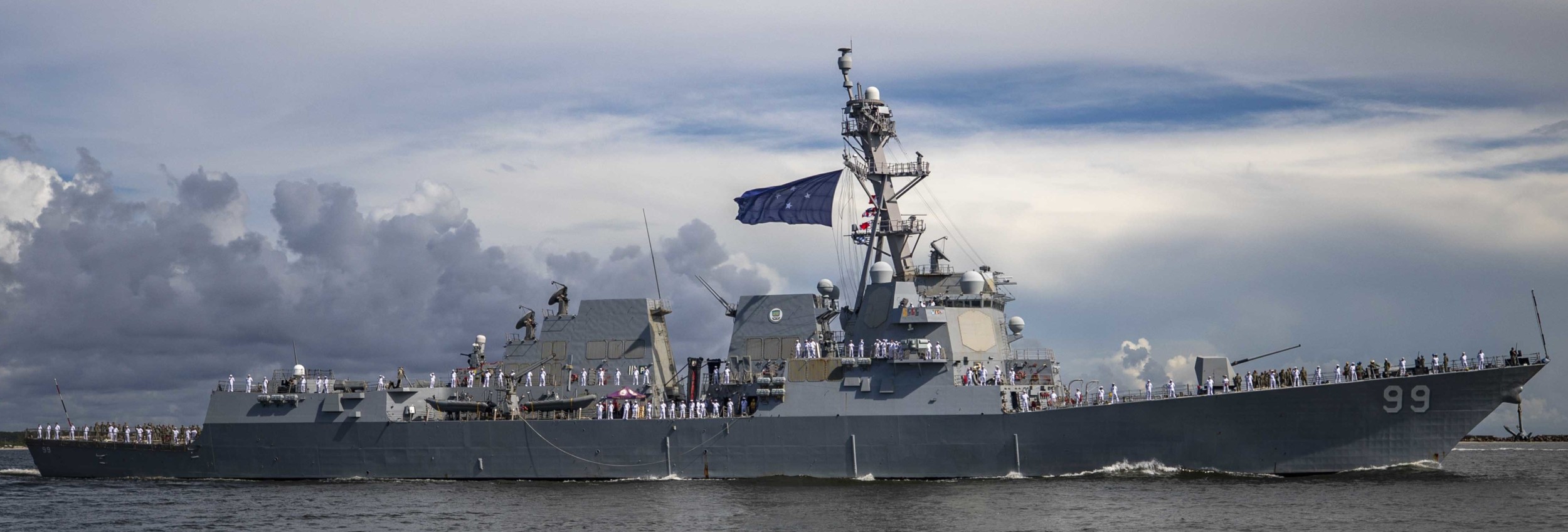 departing Naval Station Mayport, Florida - August 6, 2022 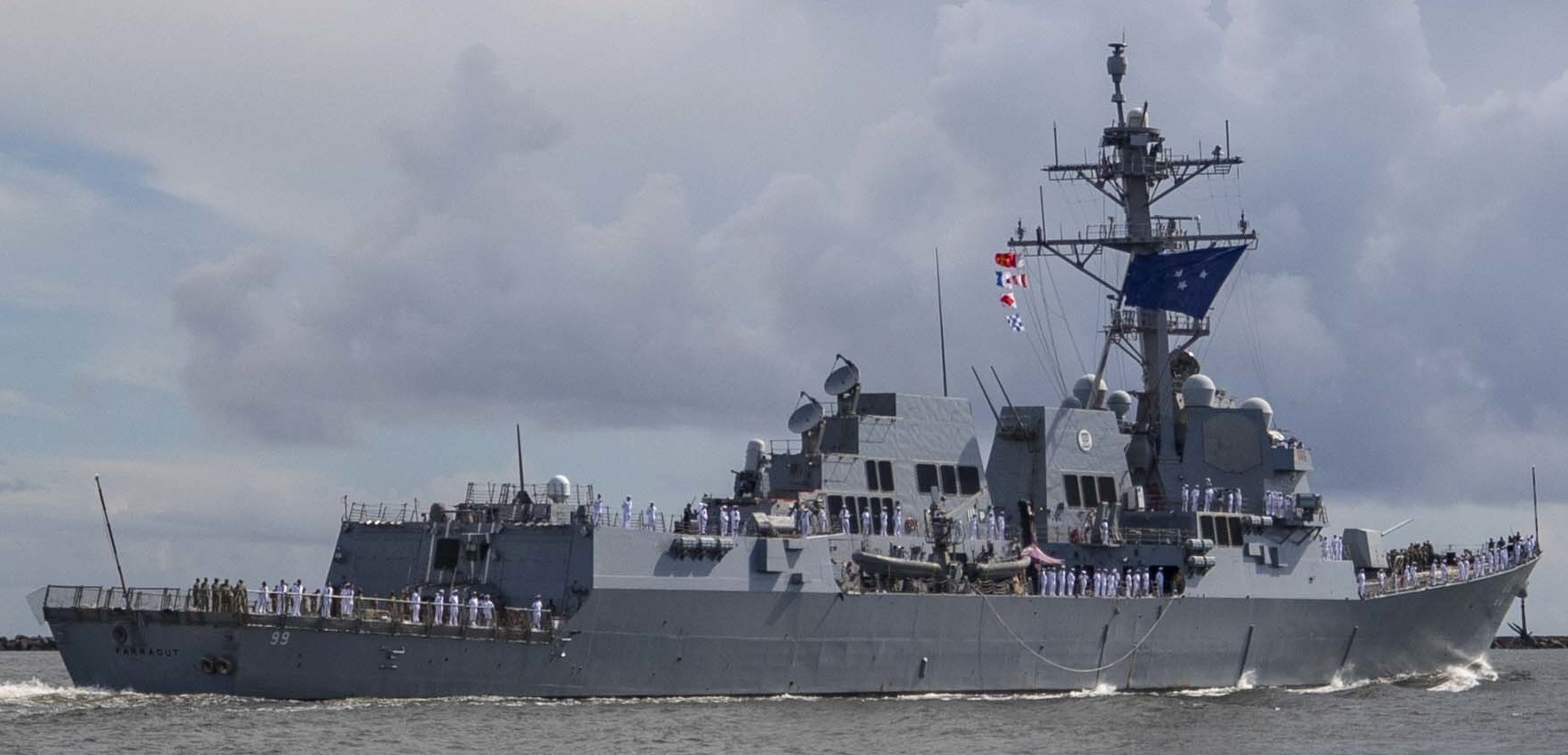 departing Naval Station Mayport, Florida - August 6, 2022 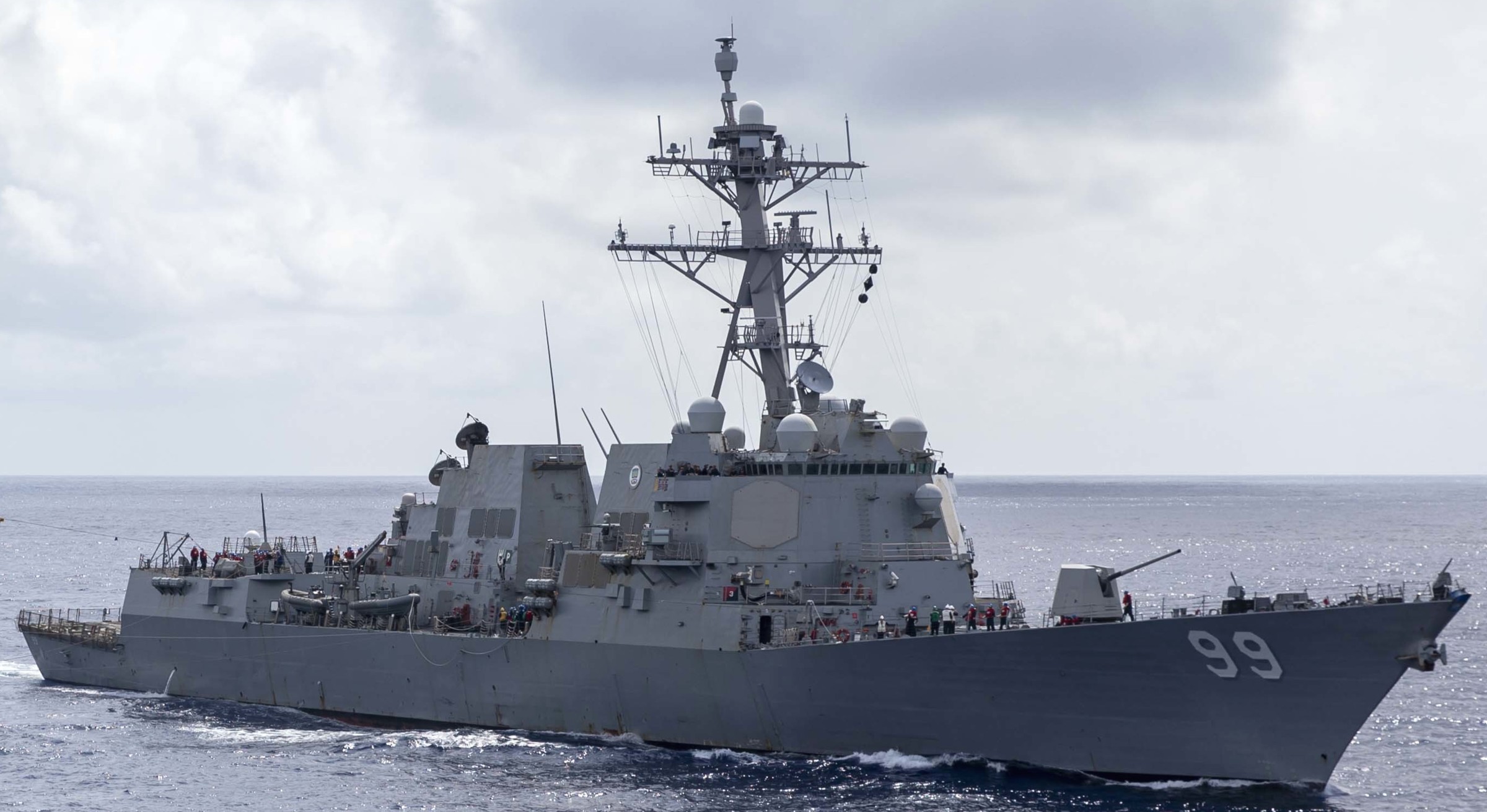 COMPTUEX - Atlantic Ocean - June 2022 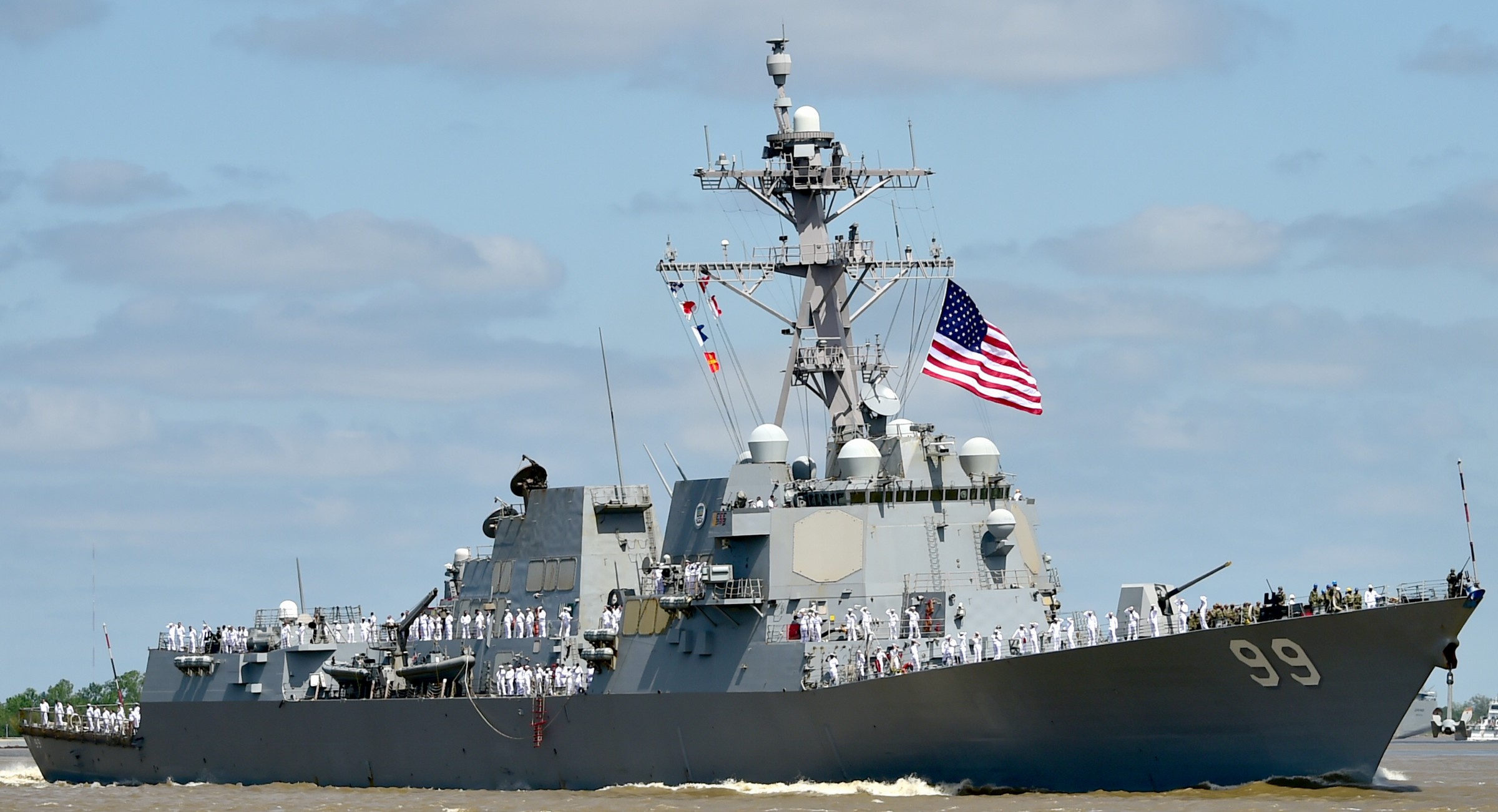 Navy Week New Orleans, Louisiana - April 2022 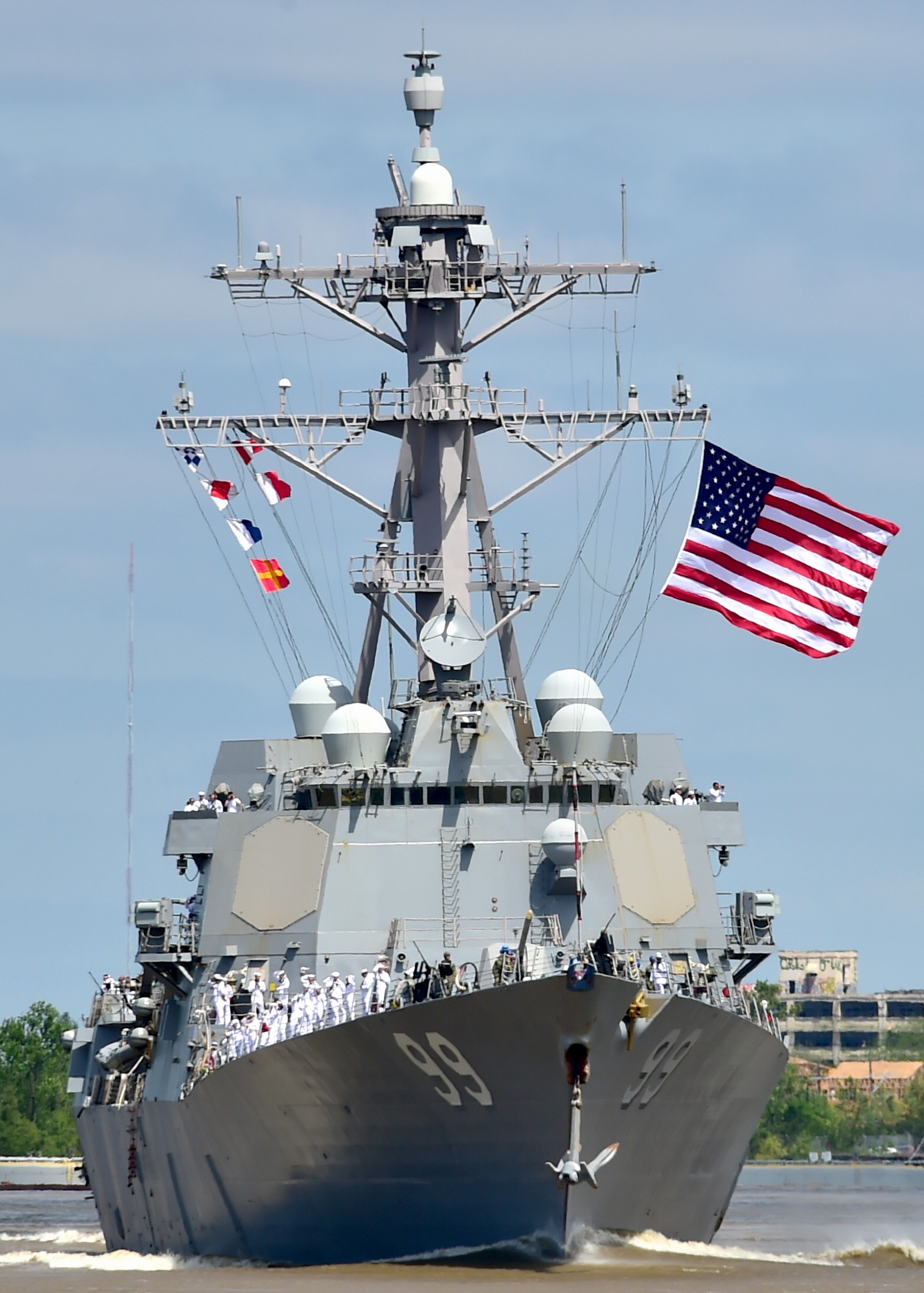 Navy Week New Orleans, Louisiana - April 2022 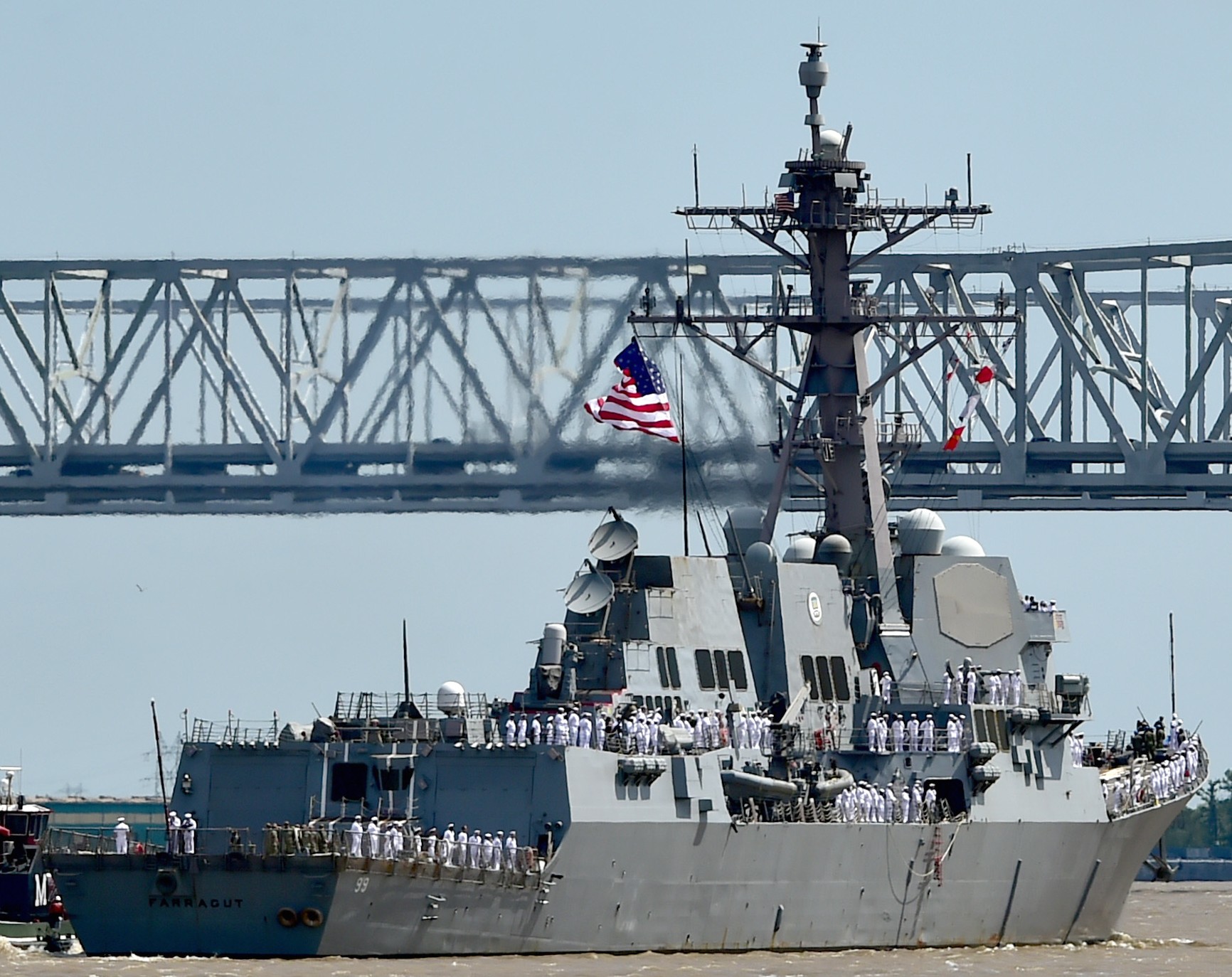 Navy Week New Orleans, Louisiana - April 2022 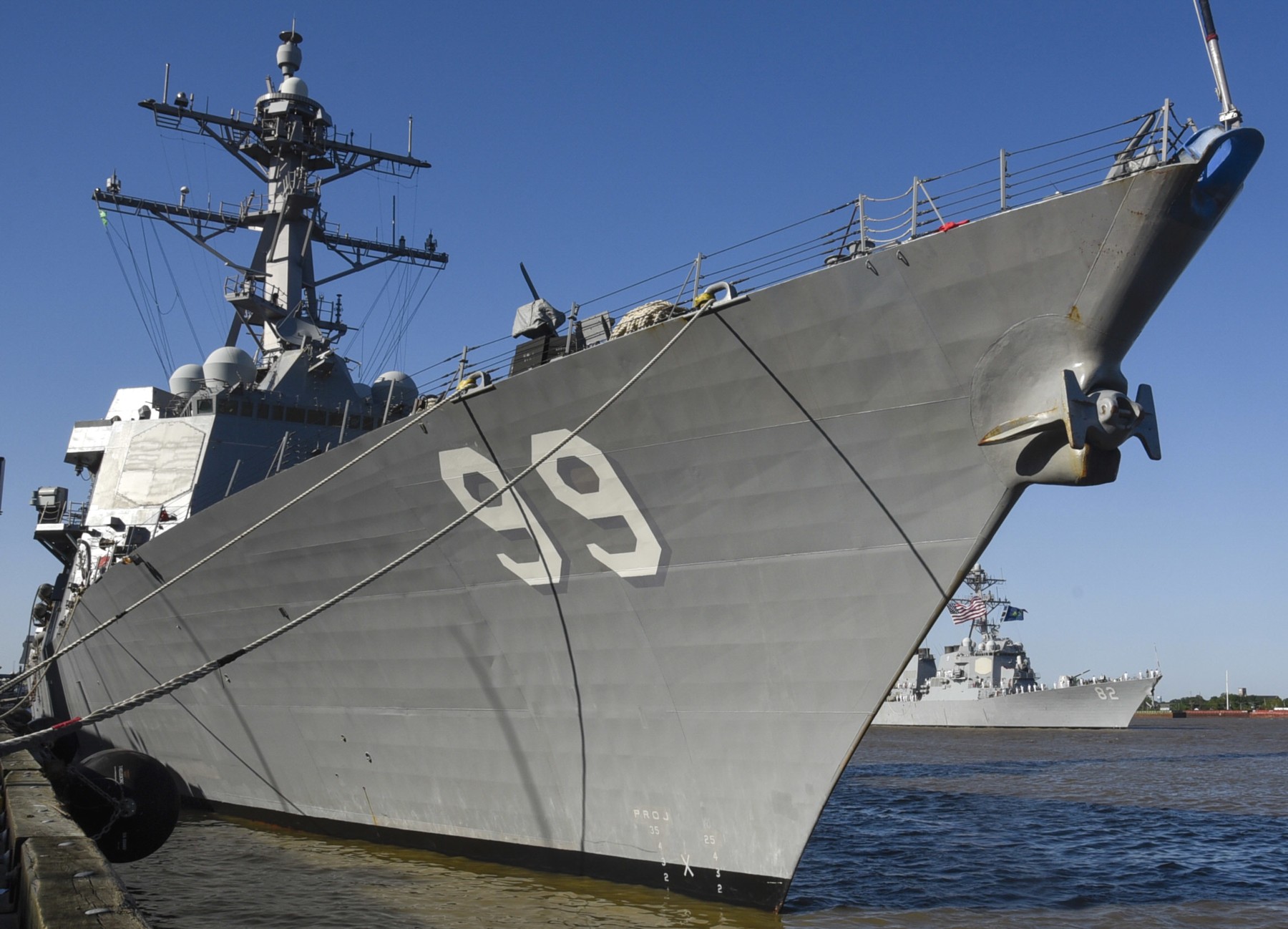 Navy Week New Orleans, Louisiana - April 2022 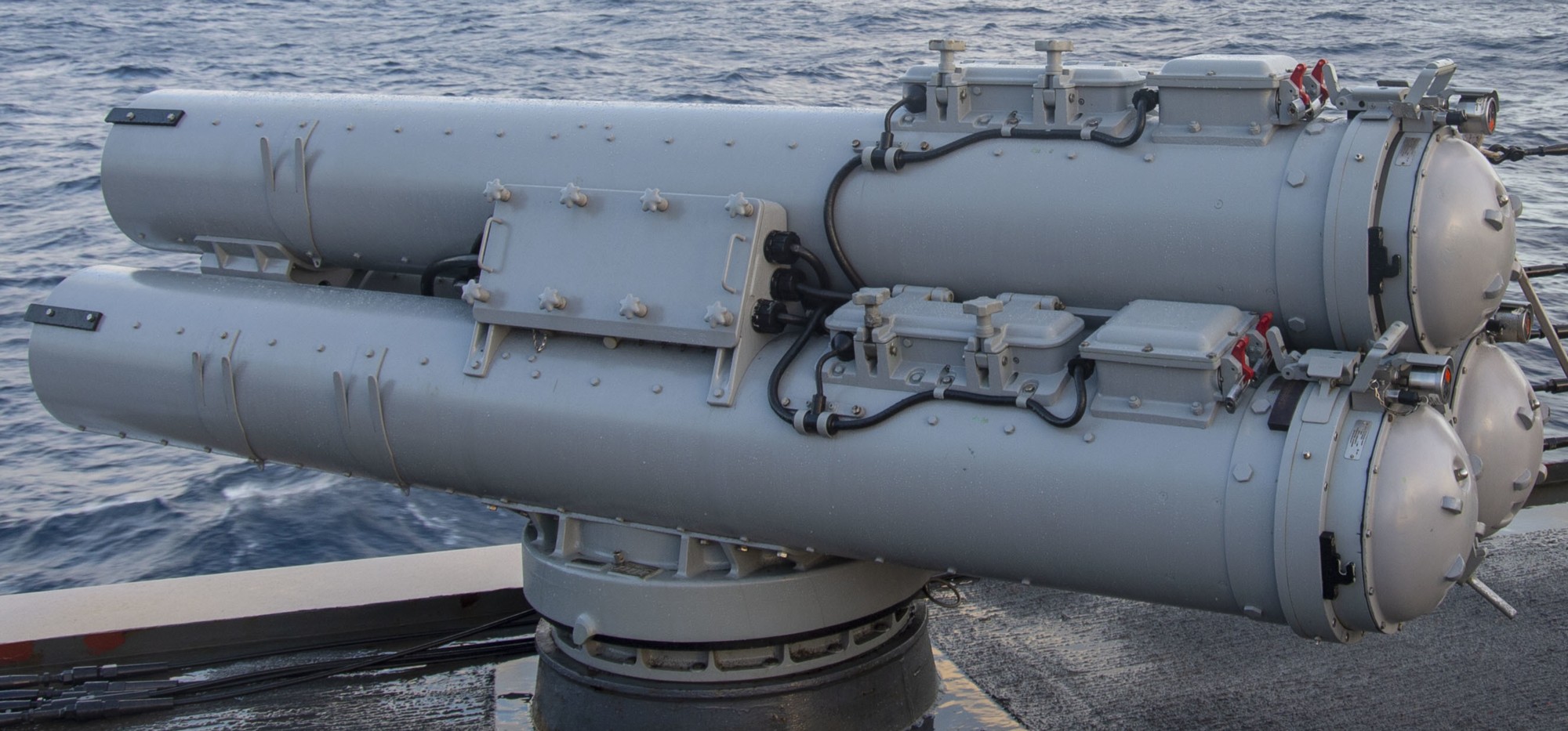 Mk.32 triple torpedo tubes - Atlantic Ocean - February 2022 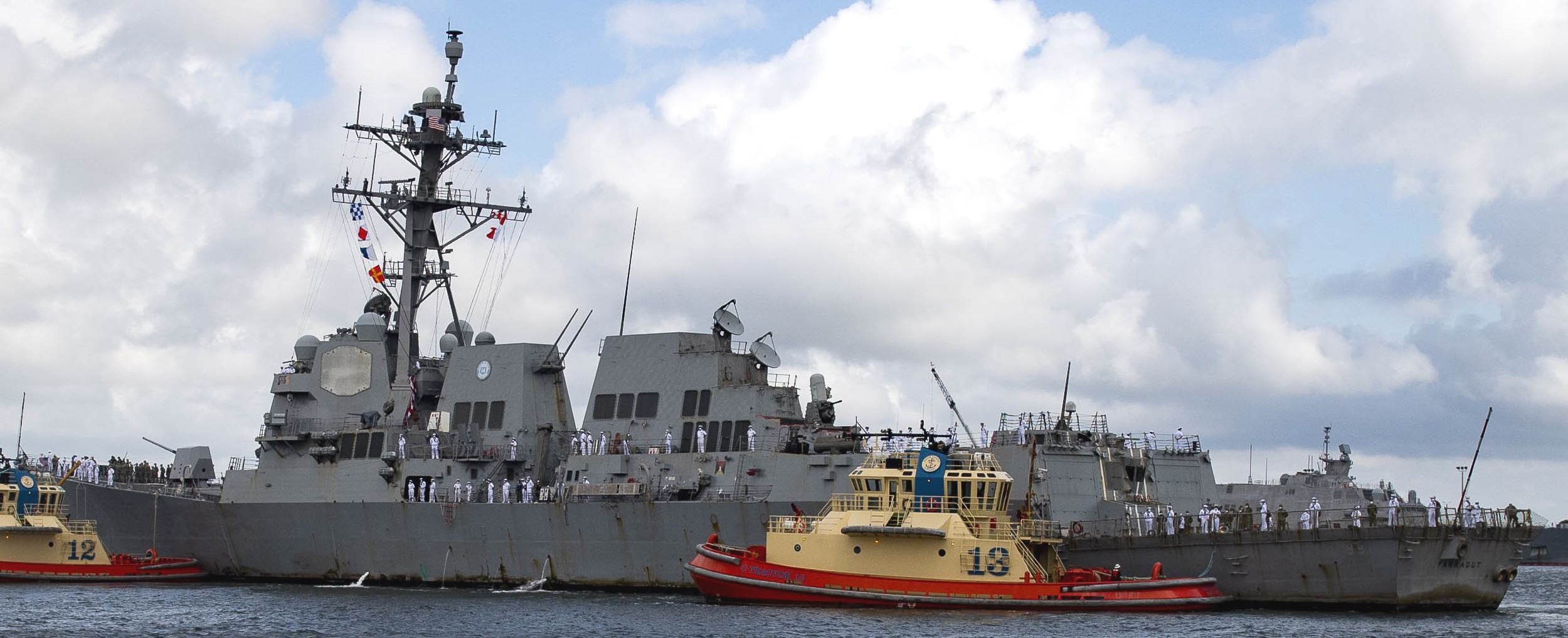 returning to Naval Station Mayport, Florida - June 14, 2020 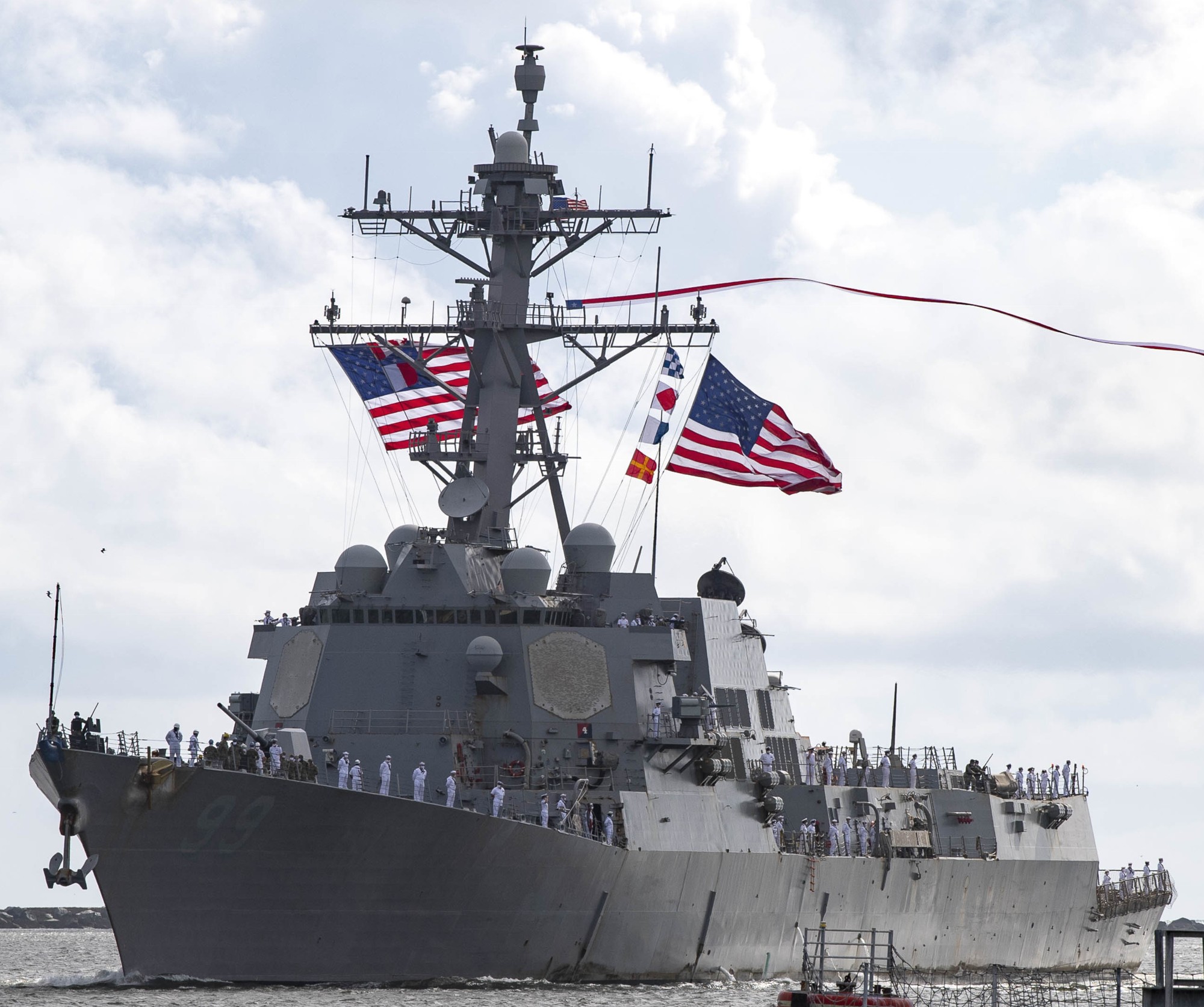 returning to Naval Station Mayport, Florida - June 14, 2020  with MH-60R Seahawk helicopter from HSM-72 - Caribbean Sea - May 2020 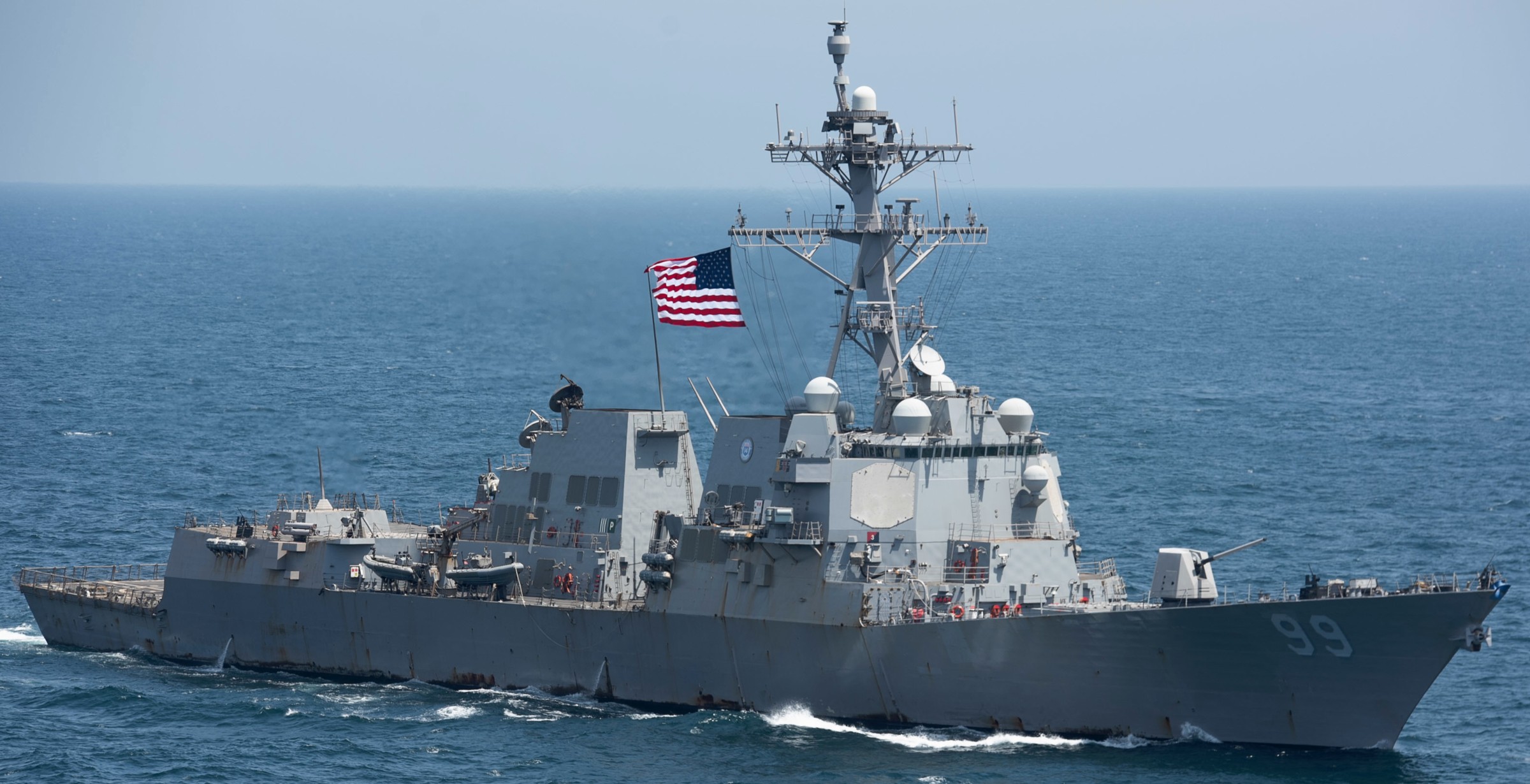 Arabian Sea - March 2020 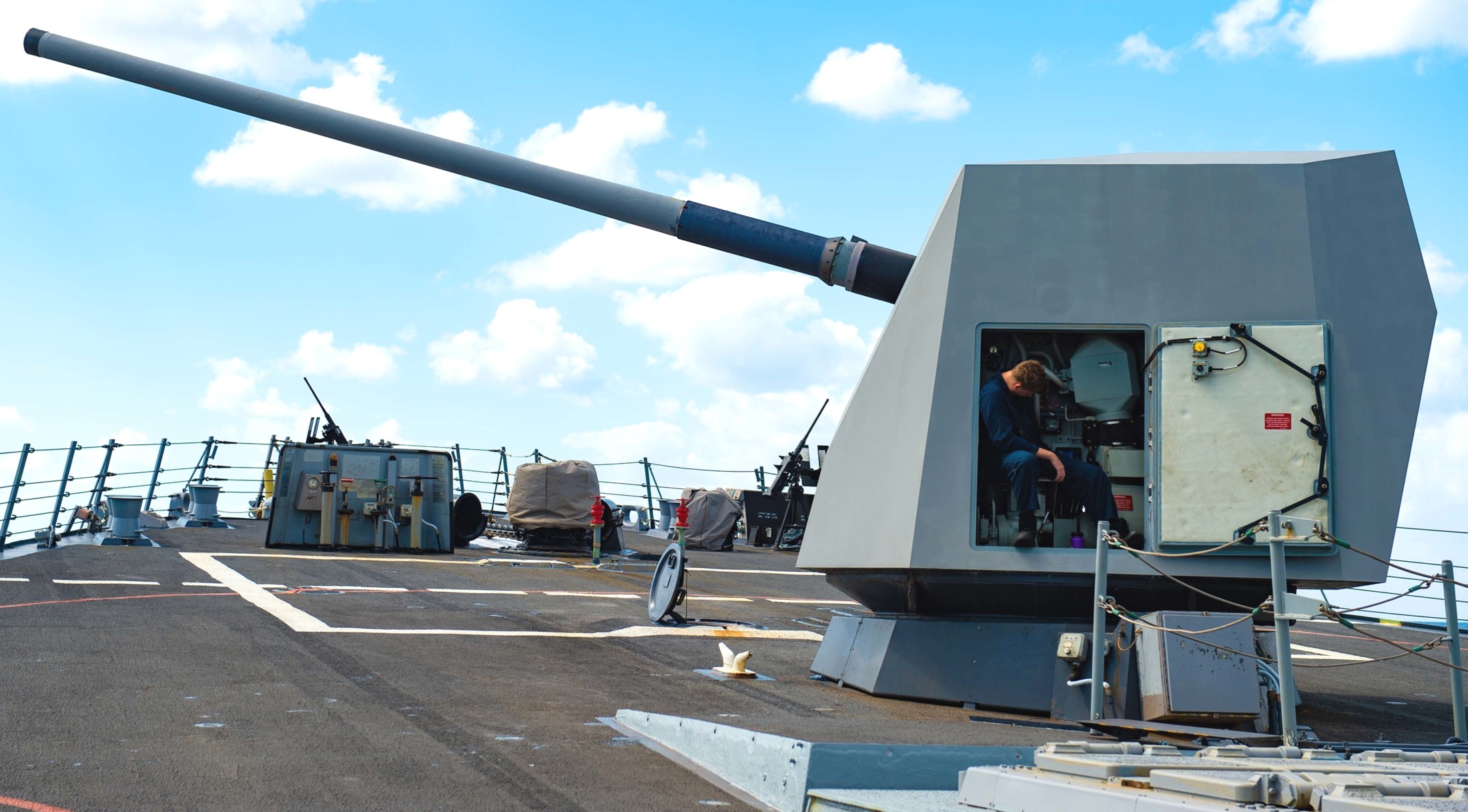 Mk.45 Mod.4 gun maintenance - Gulf of Oman - January 2020 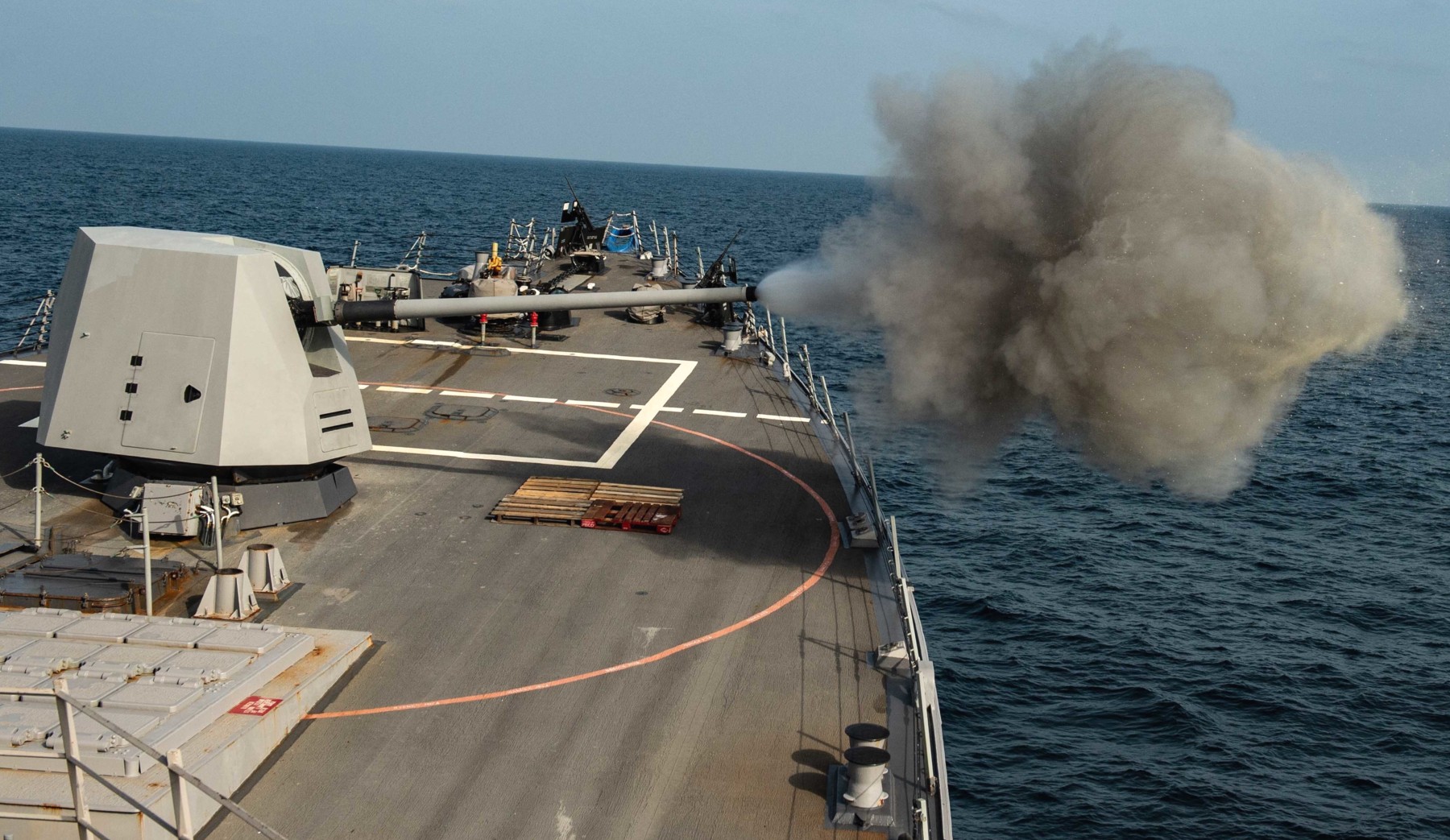 Mk.45 Mod.4 gun fire - Gulf of Oman - December 2019 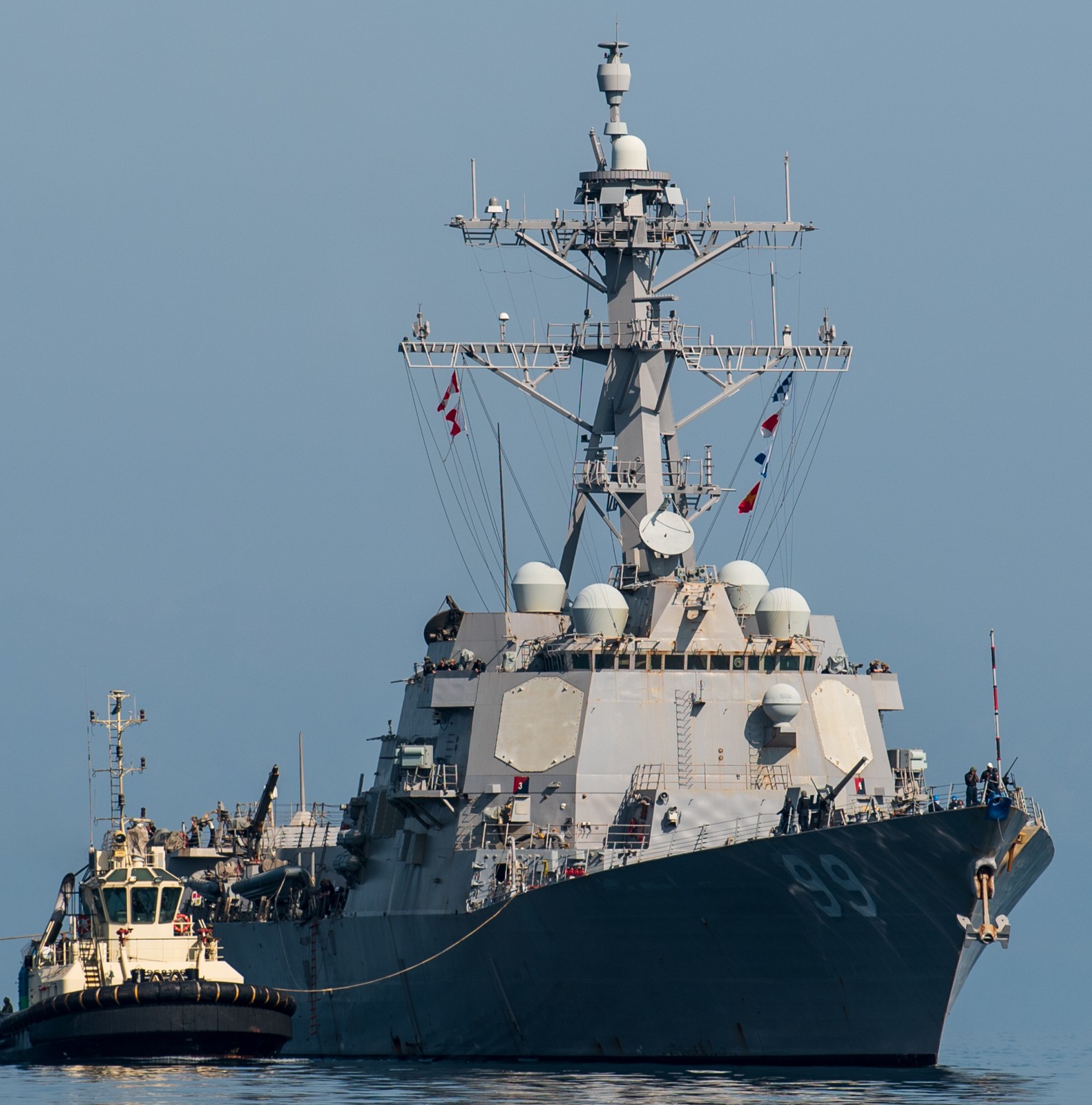 Djibouti - November 2019 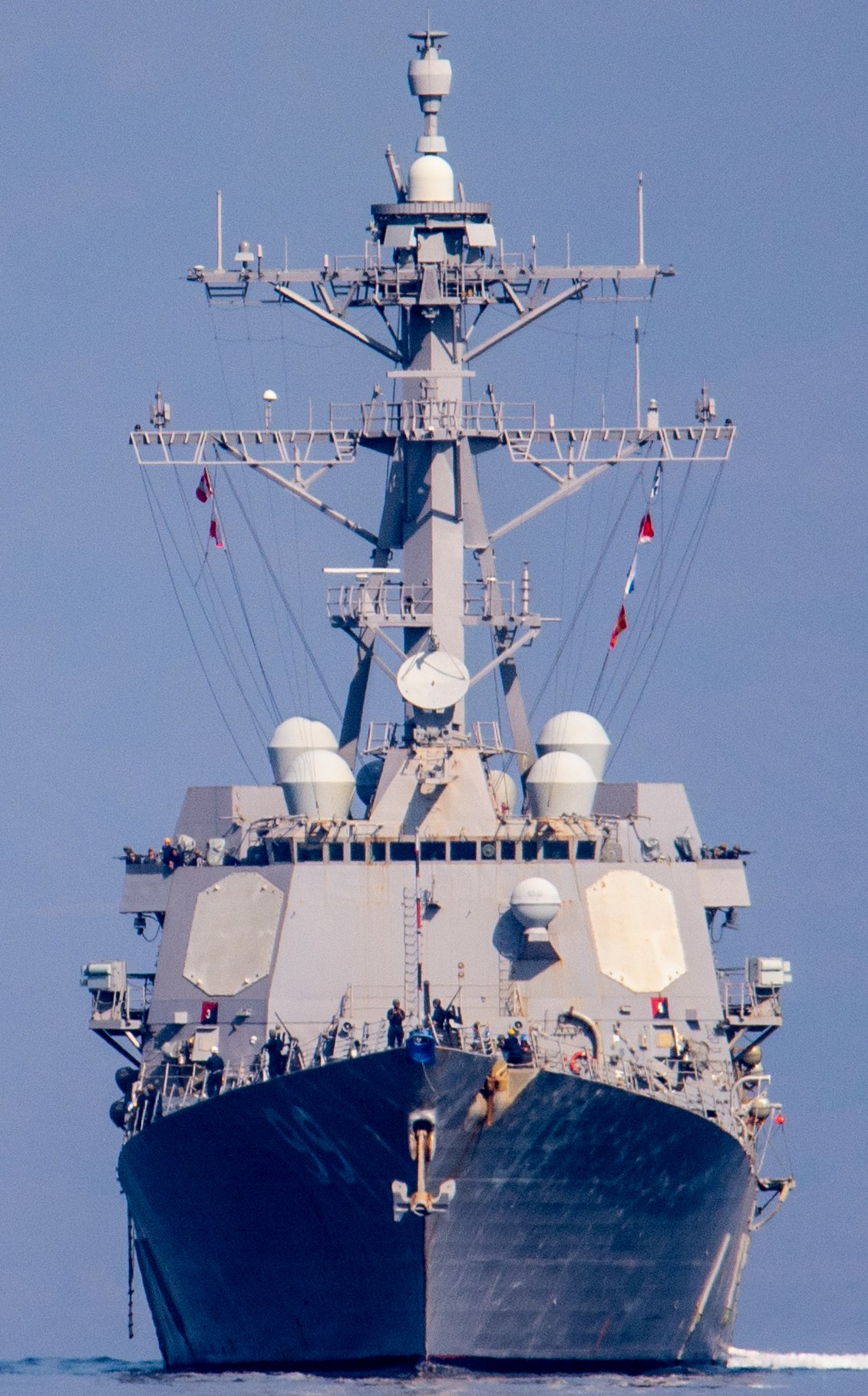 Djibouti - November 2019 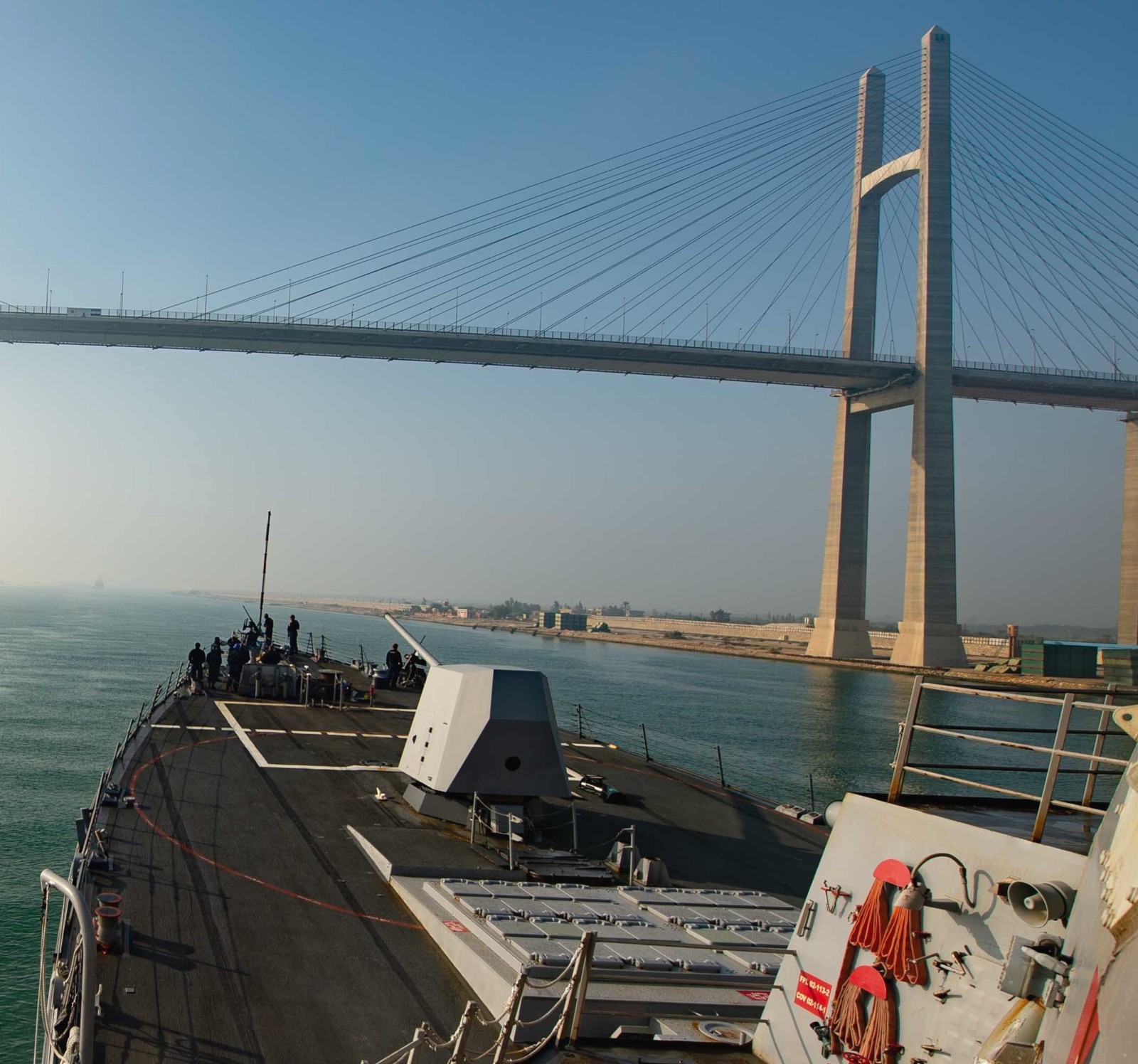 Suez Canal - October 2019 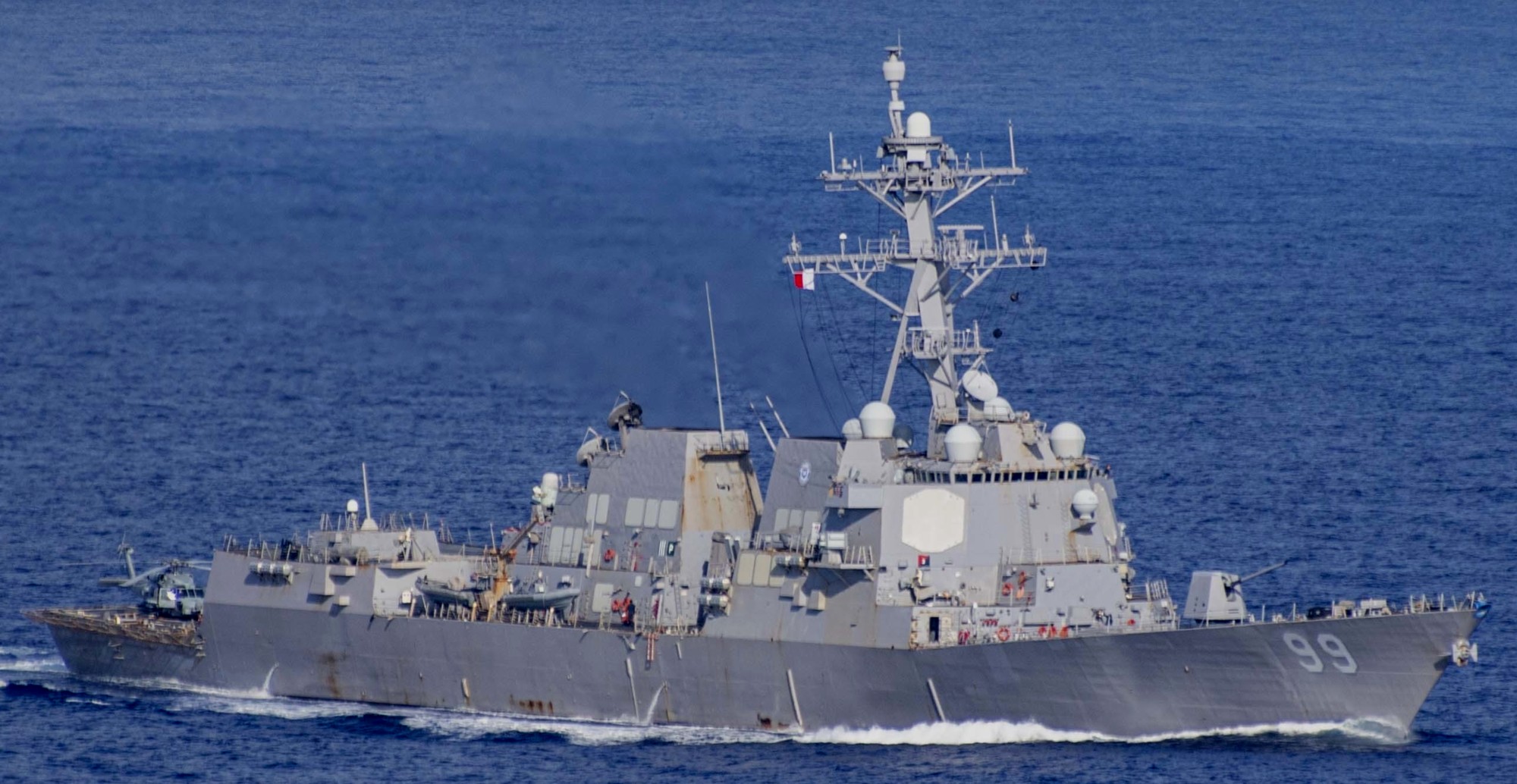 Atlantic Ocean - September 2019 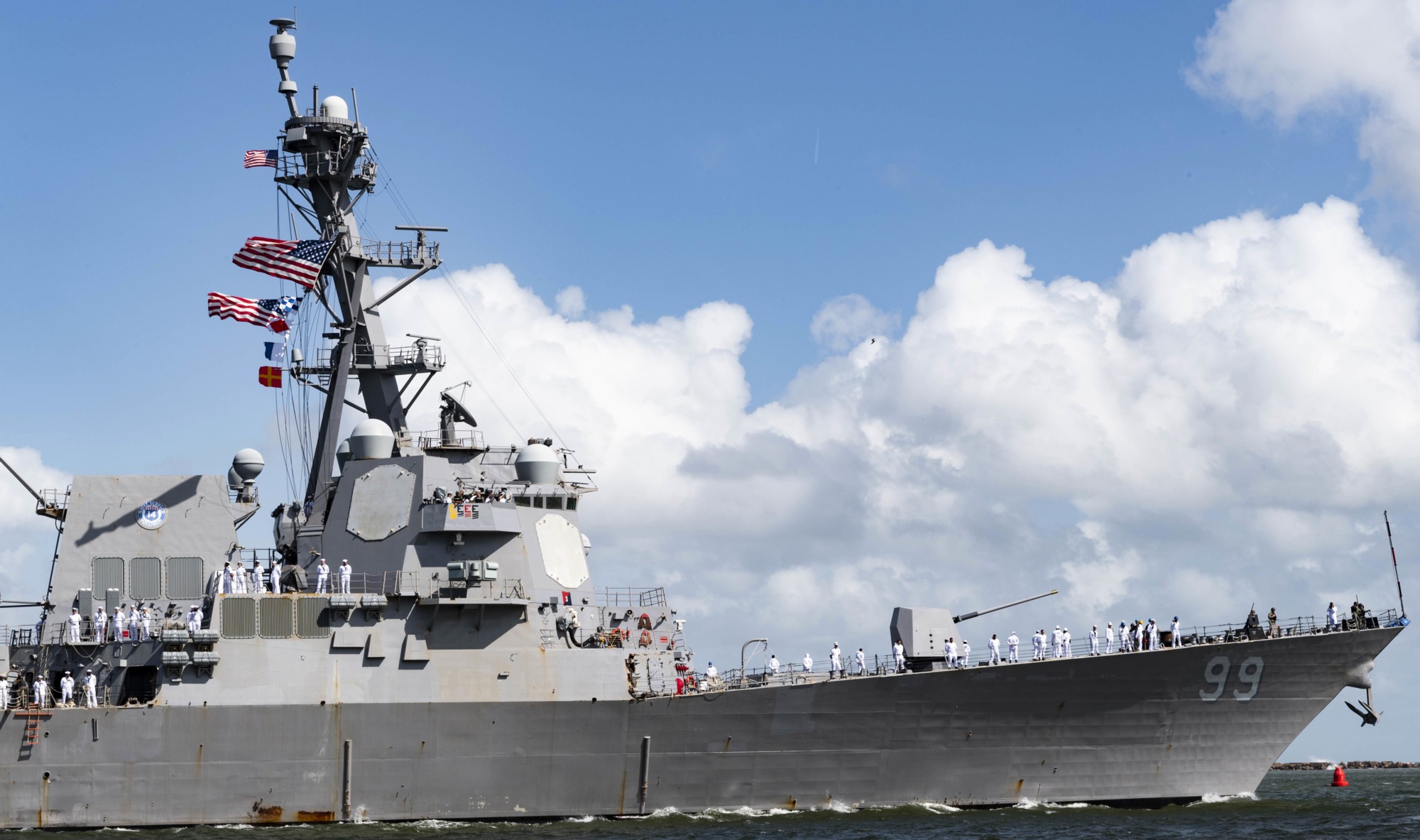 departing Naval Station Mayport, Florida - September 14, 2019 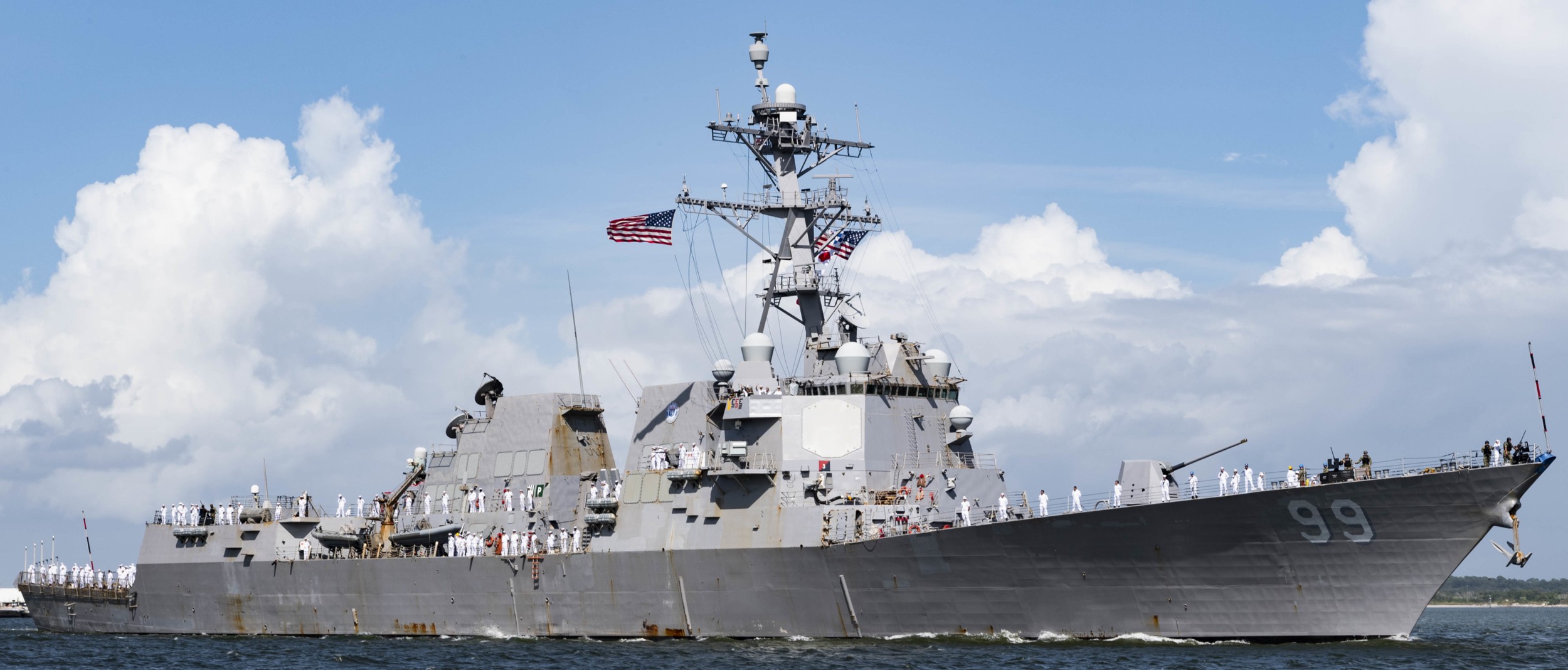 departing Naval Station Mayport, Florida - September 14, 2019  departing Naval Station Mayport, Florida in preparation of Hurricane Dorian - August 2019 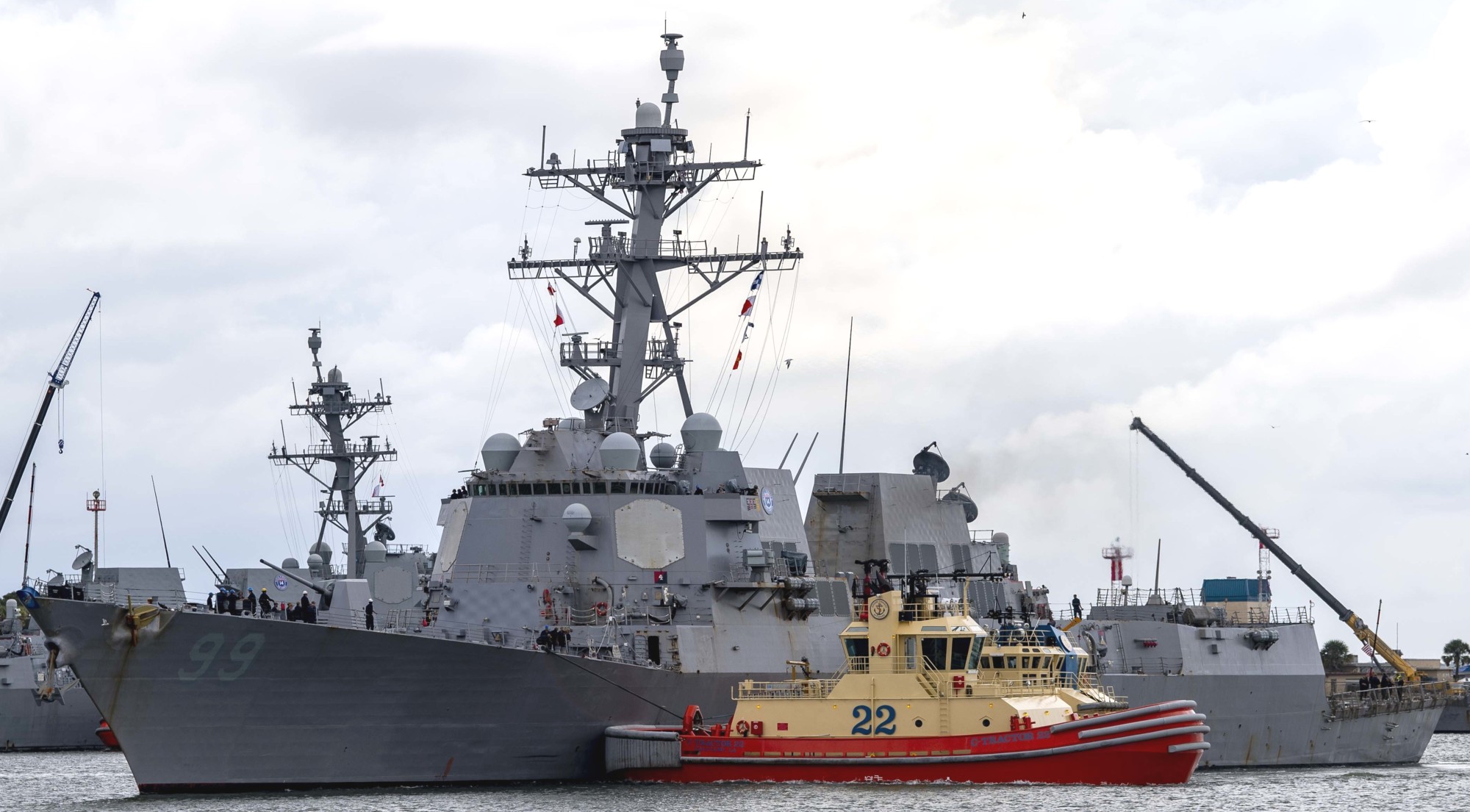 departing Naval Station Mayport, Florida in preparation of Hurricane Dorian - August 2019 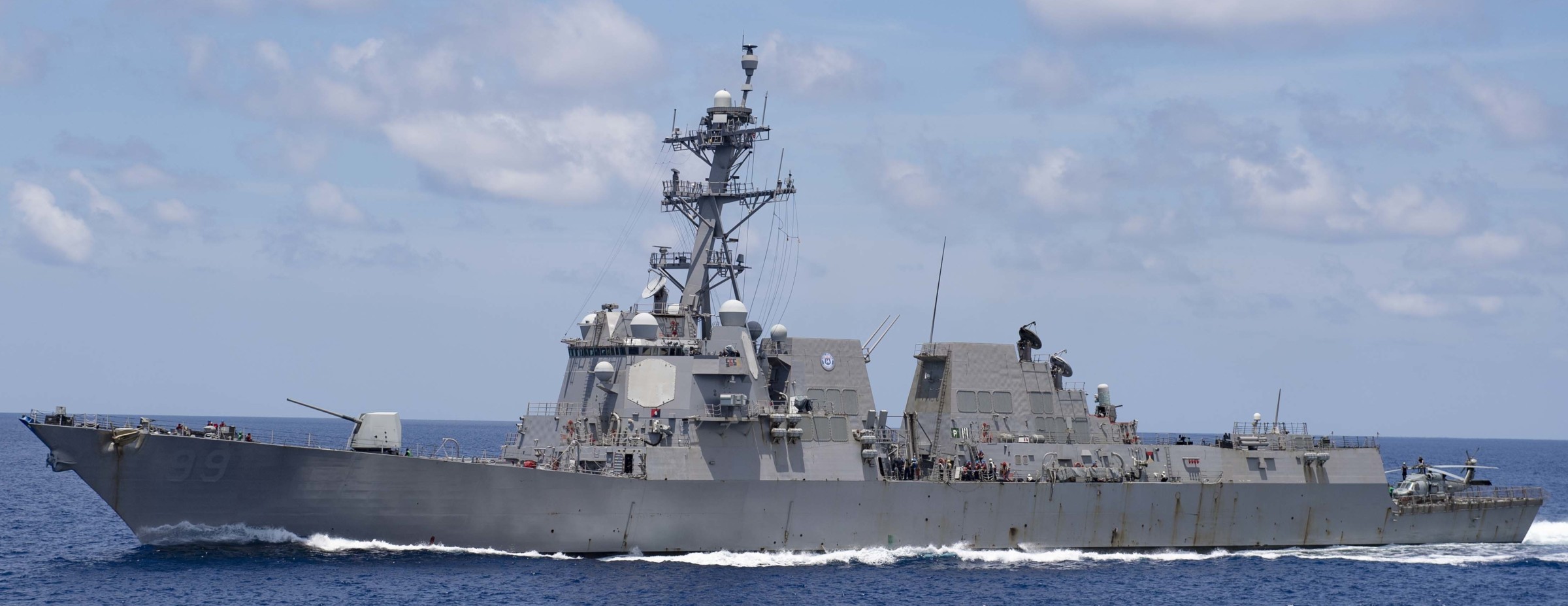 Atlantic Ocean - July 2019 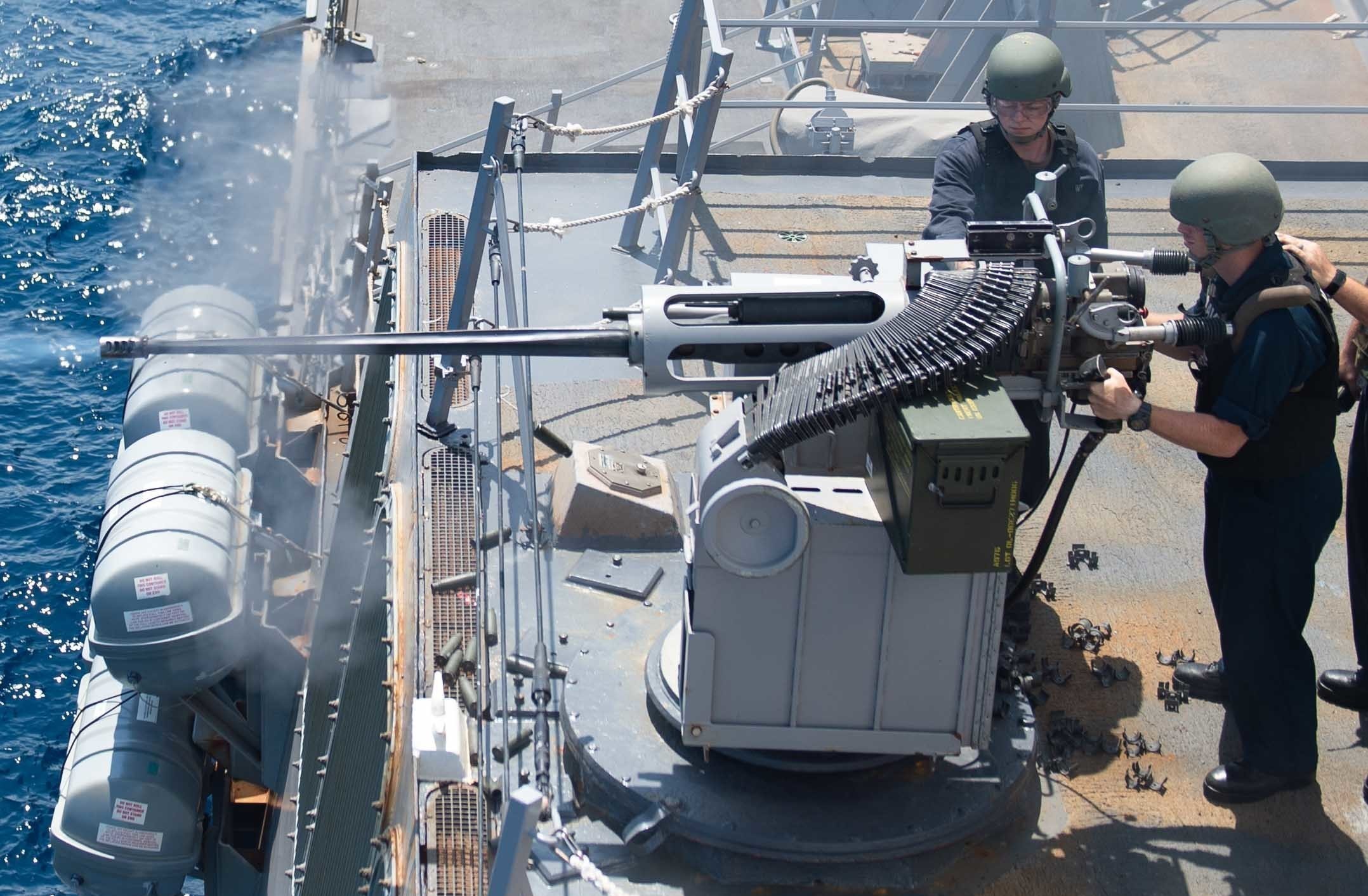 Mk.38 Mod.1 machine gun fire - Atlantic Ocean - July 2019  Mk.45 Mod.4 gun fire - Atlantic Ocean - July 2019 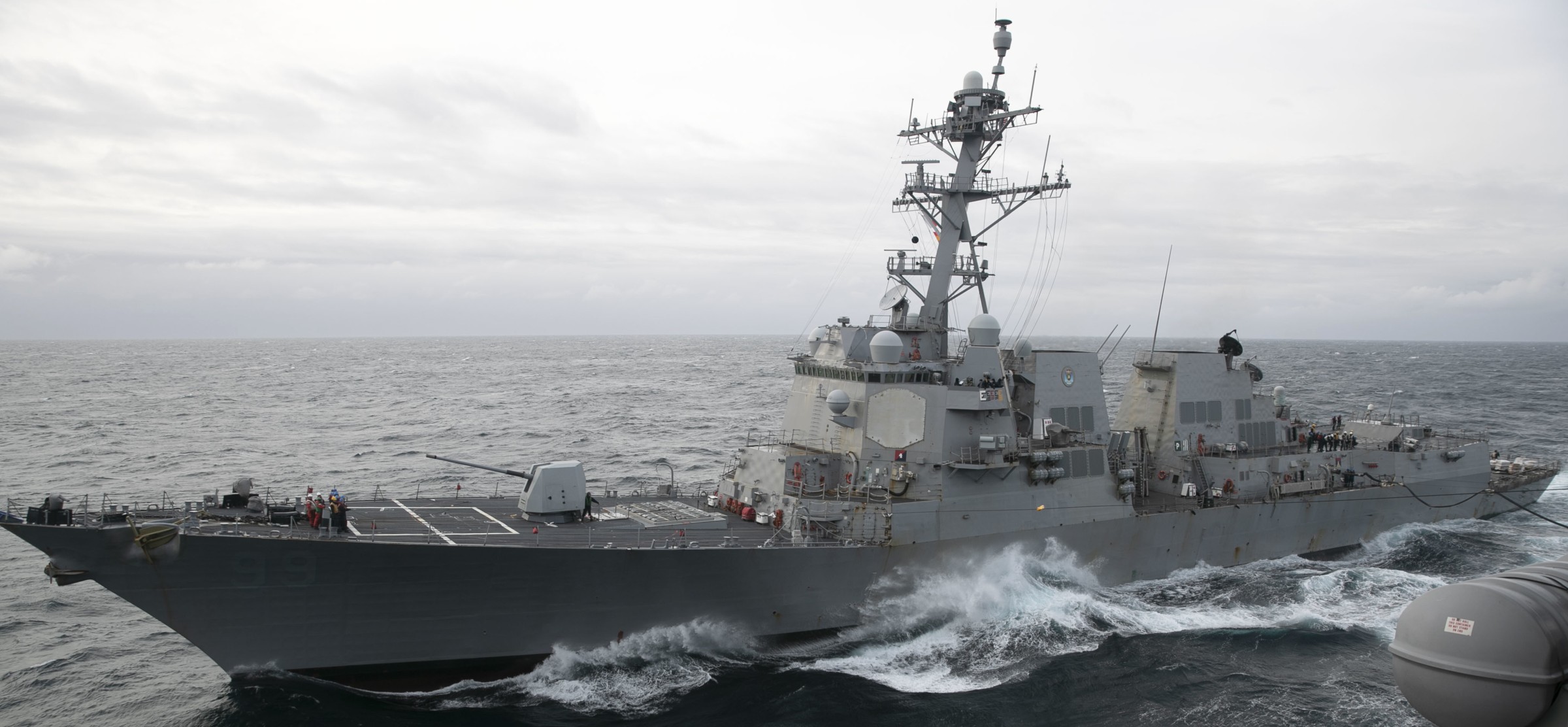 Northern Atlantic Ocean - September 2018 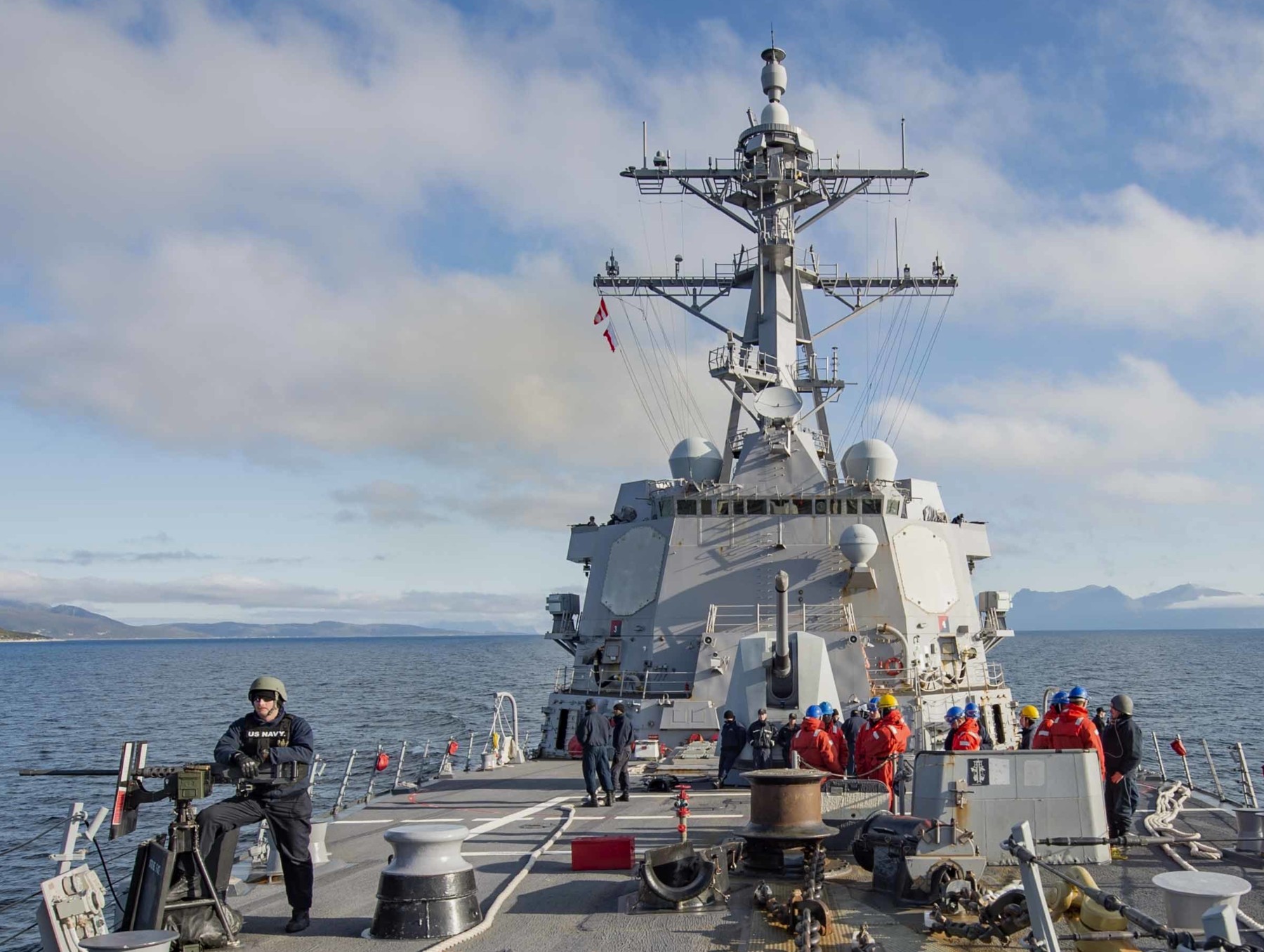 Tromso, Norway - September 2018 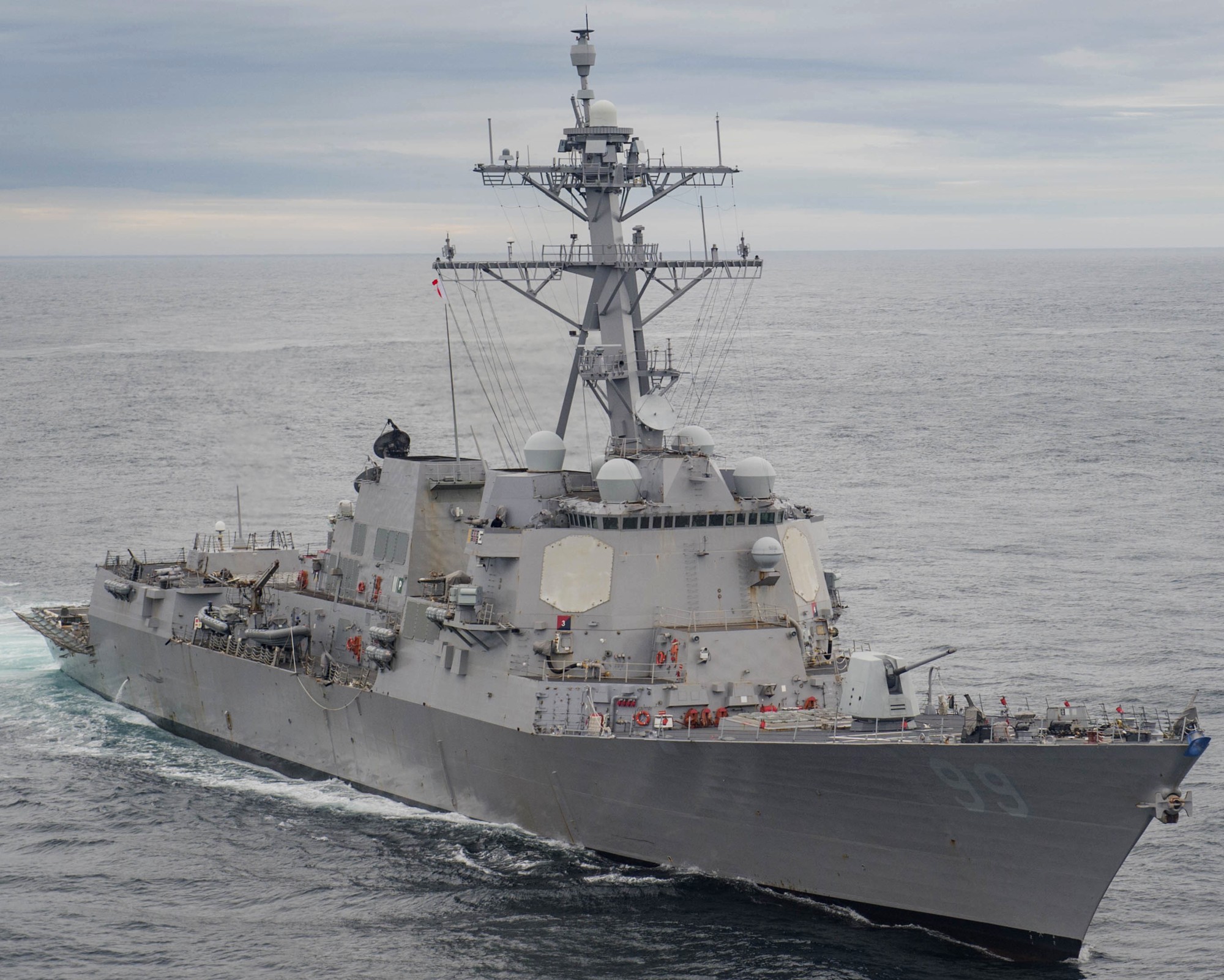 Denmark Strait - August 2018 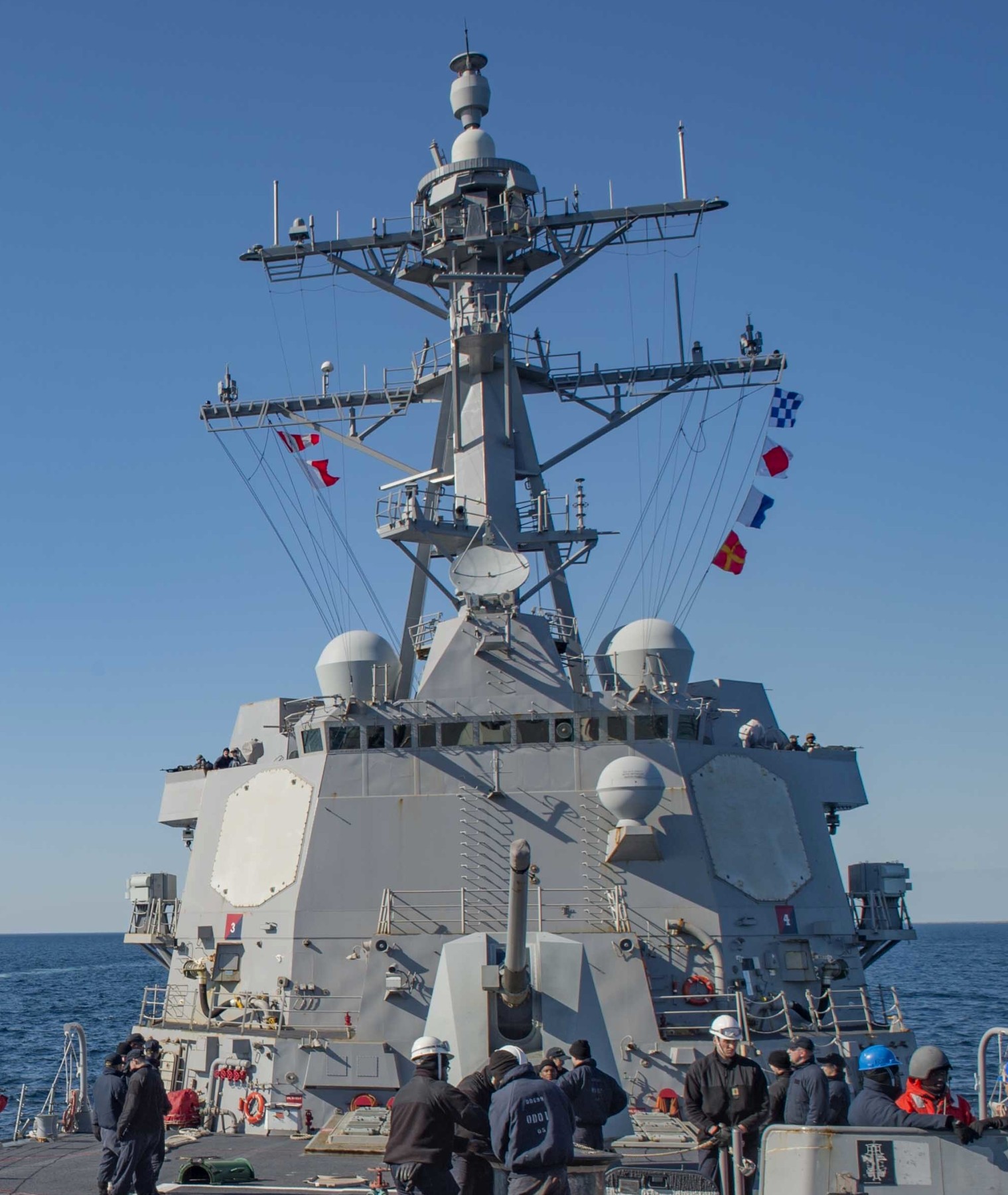 Bodo, Norway - May 2018 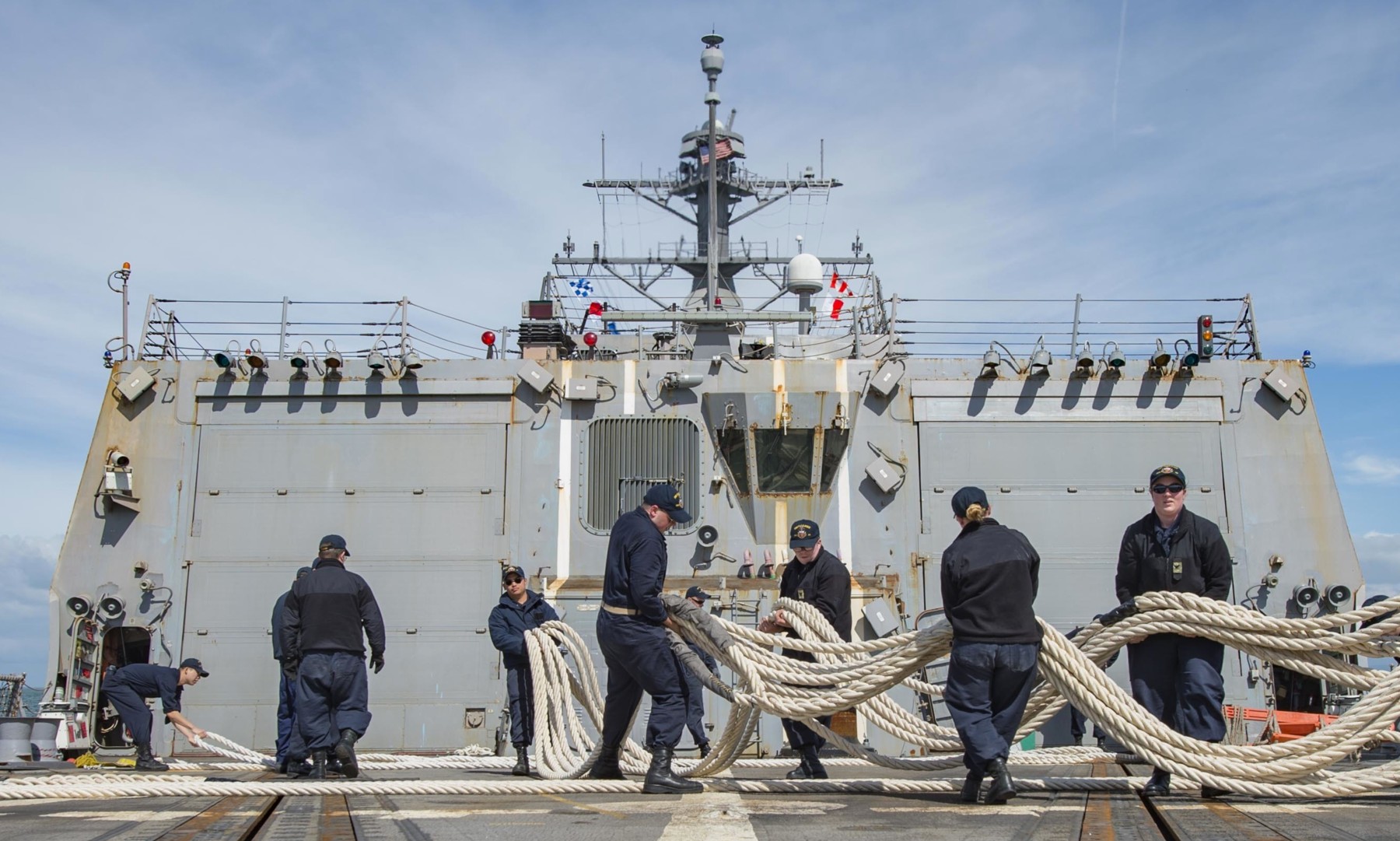 Portsmouth, U.K. - April 2018 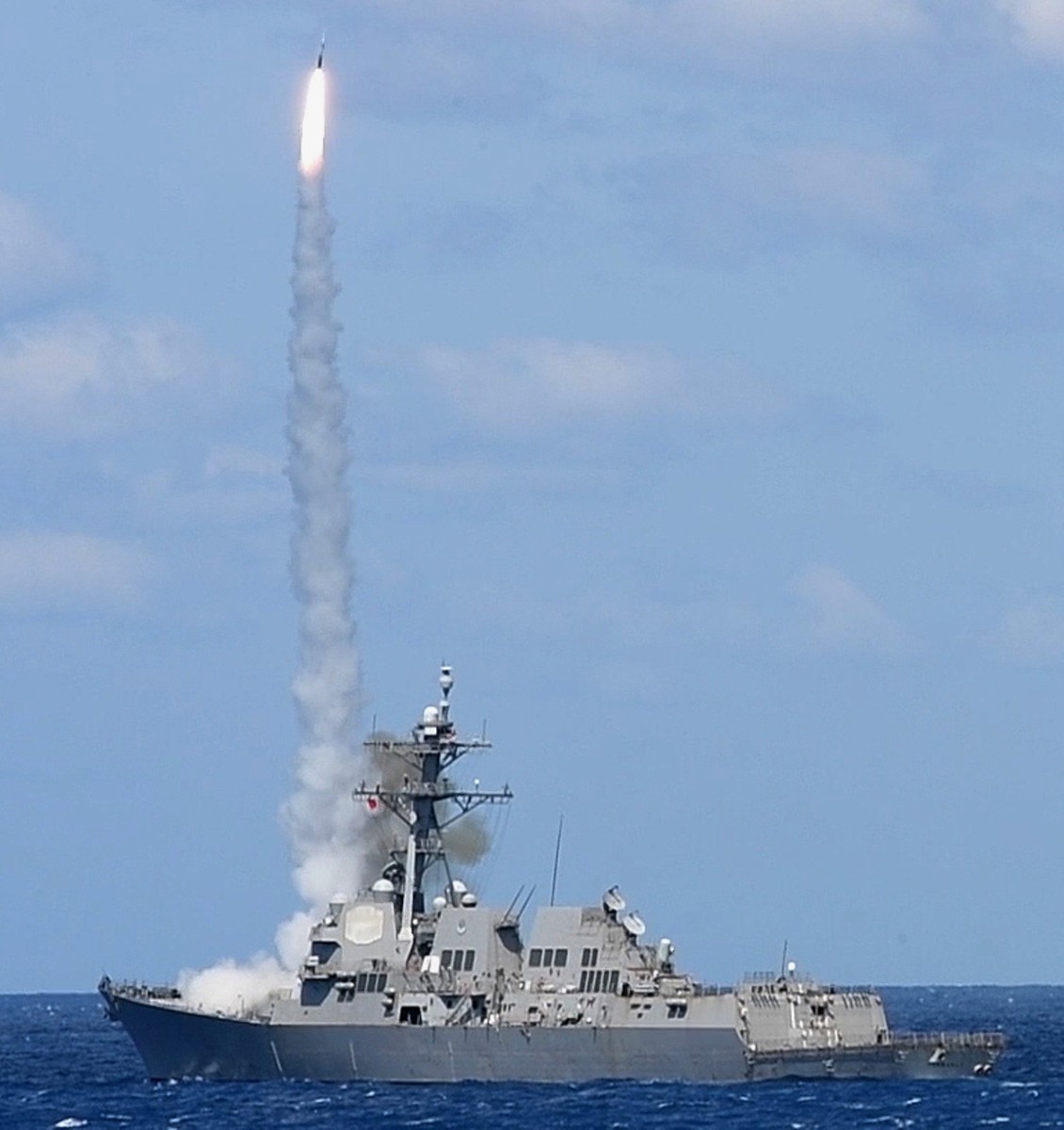 launching a Standard Missile SM-2 - Atlantic Ocean - April 2018 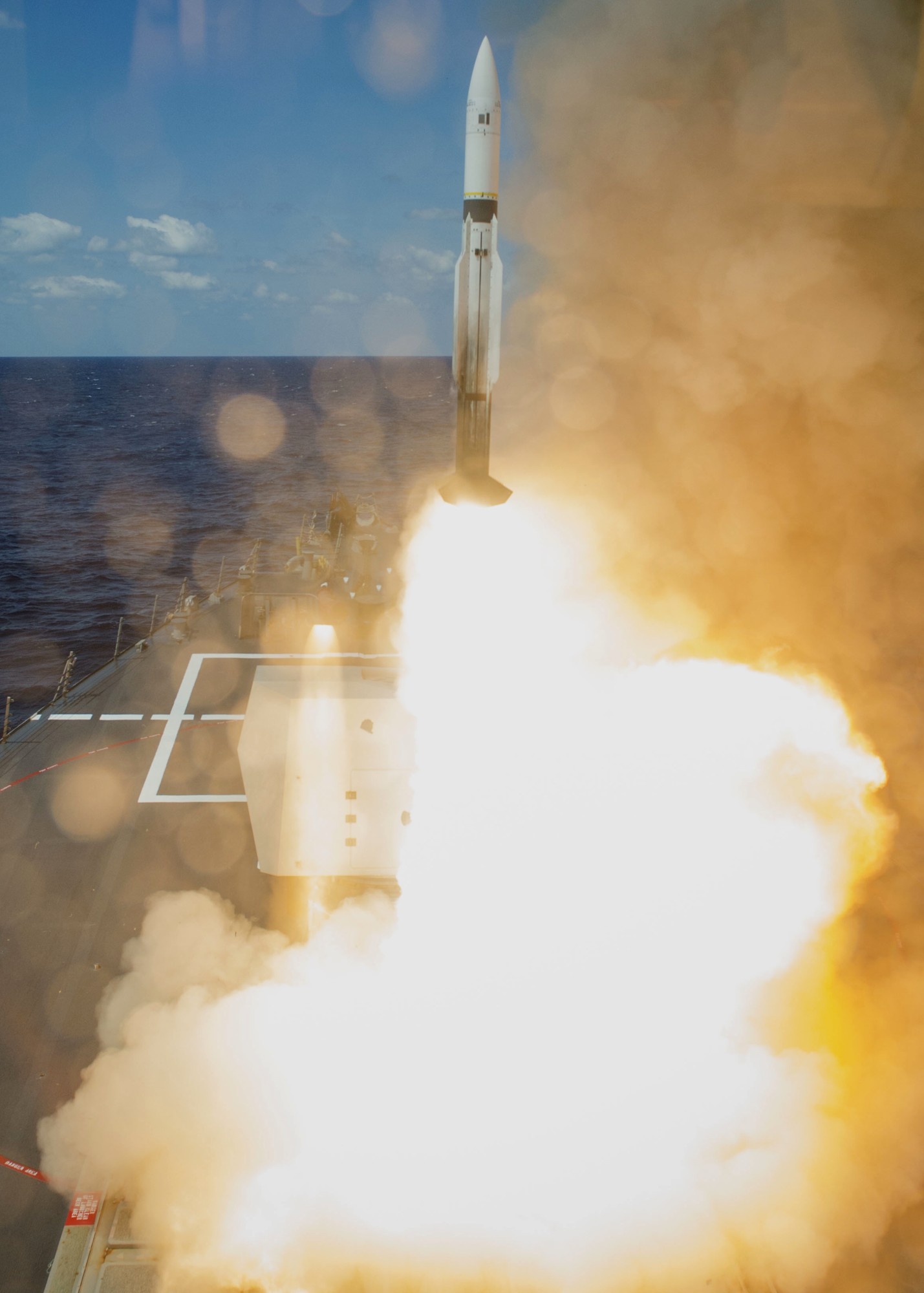 launching a Standard Missile SM-2 - Atlantic Ocean - April 2018 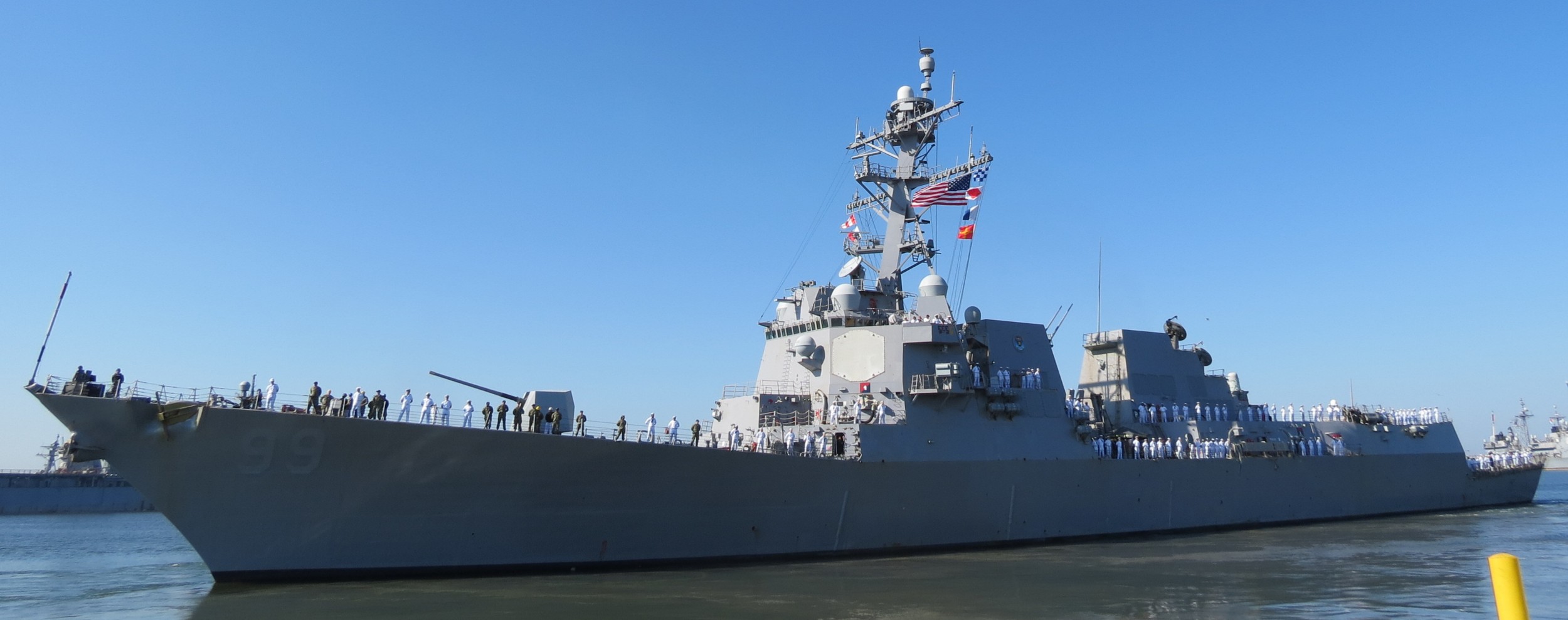 departing Naval Station Mayport, Florida - April 2018 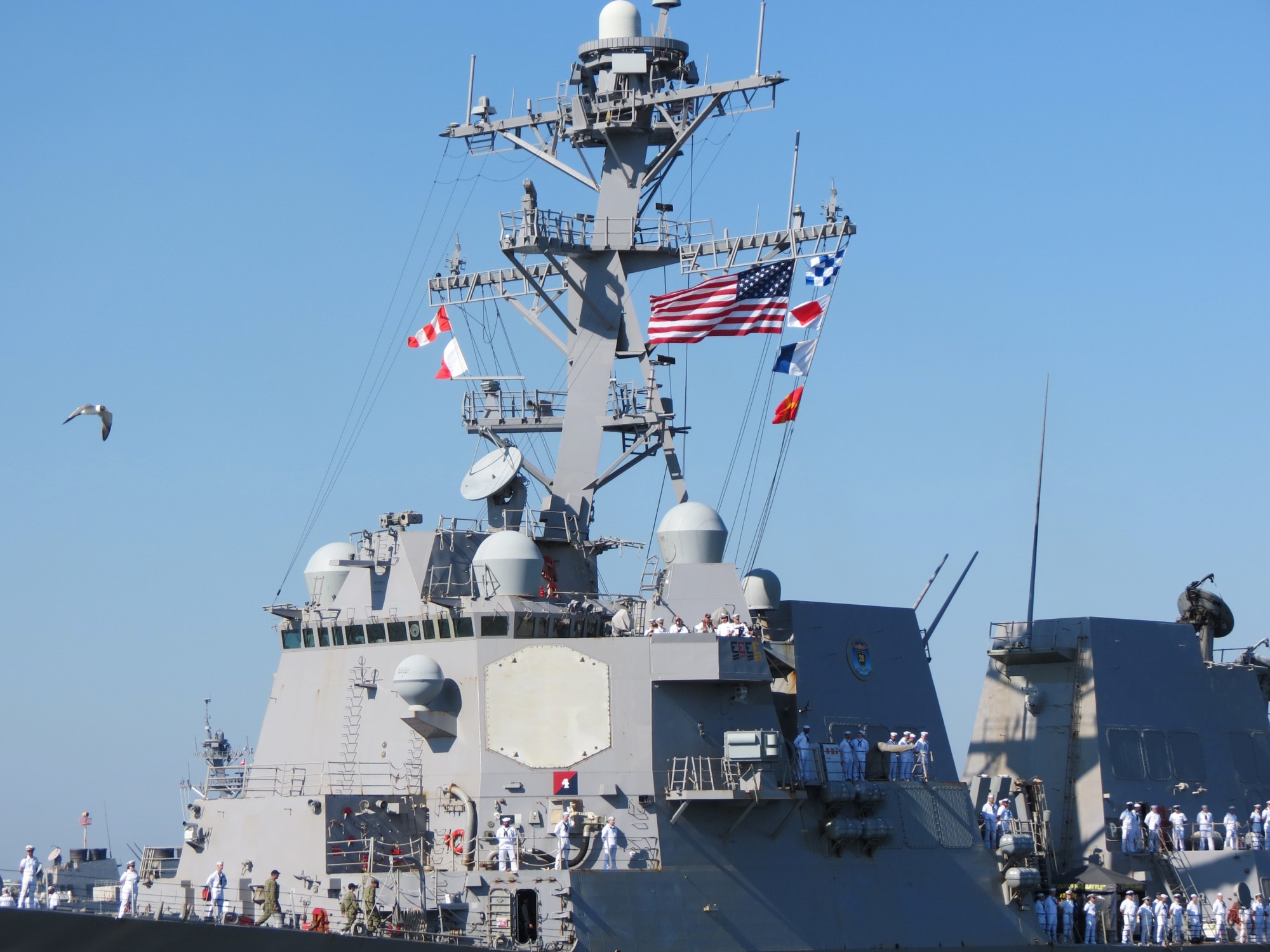 departing Naval Station Mayport, Florida - April 2018 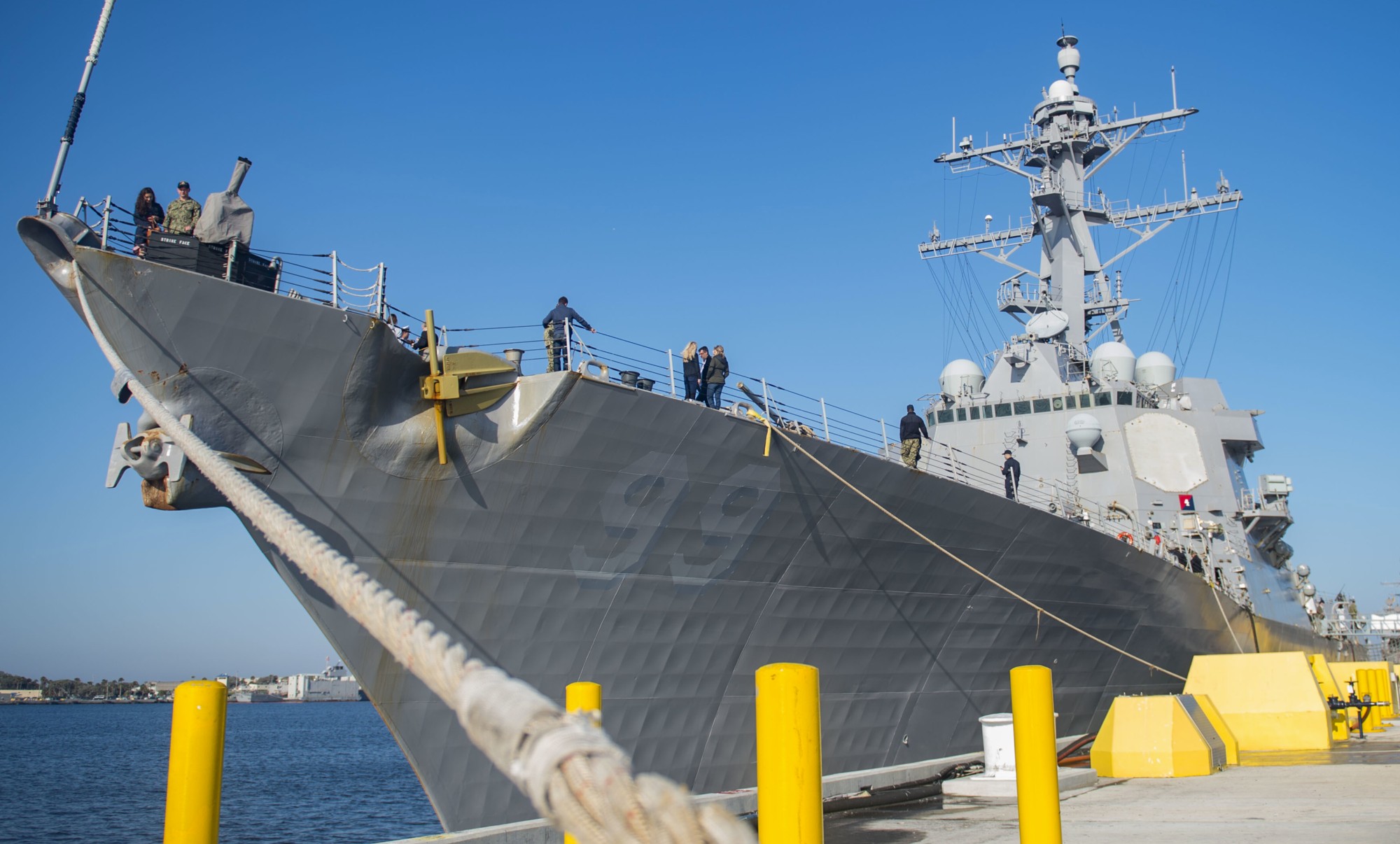 departing Naval Station Mayport, Florida - April 2018 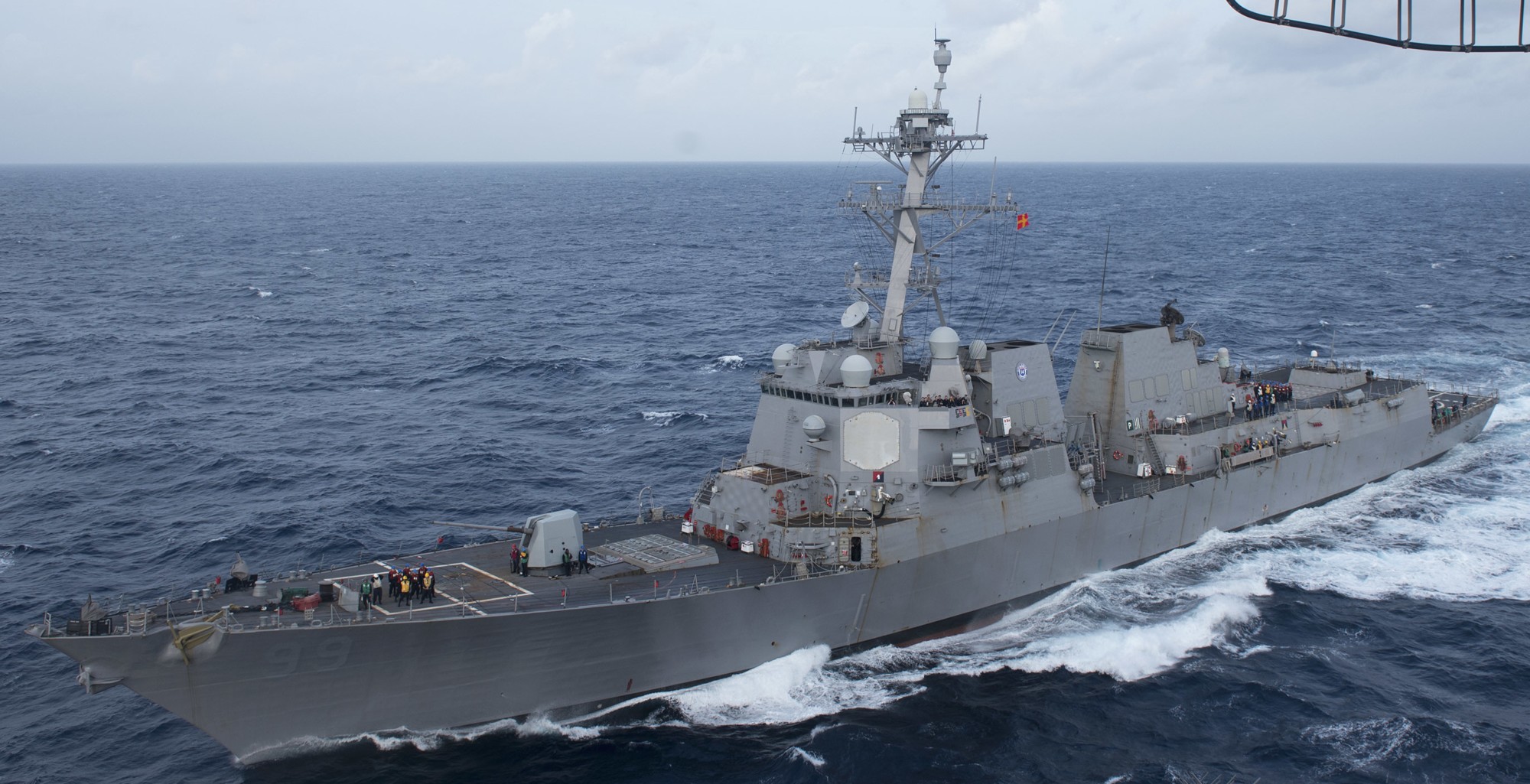 Atlantic Ocean - October 2017 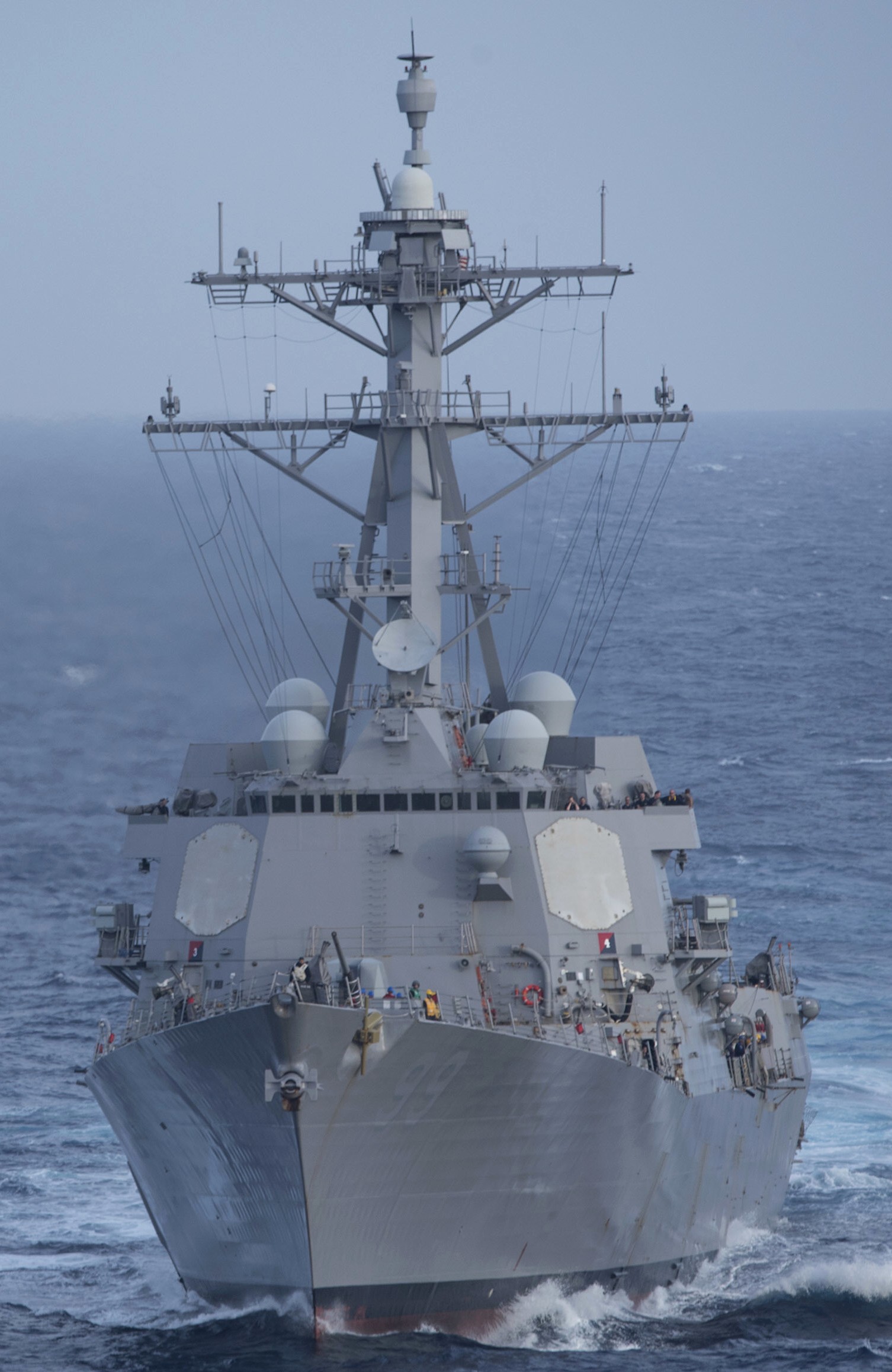 Atlantic Ocean - October 2017 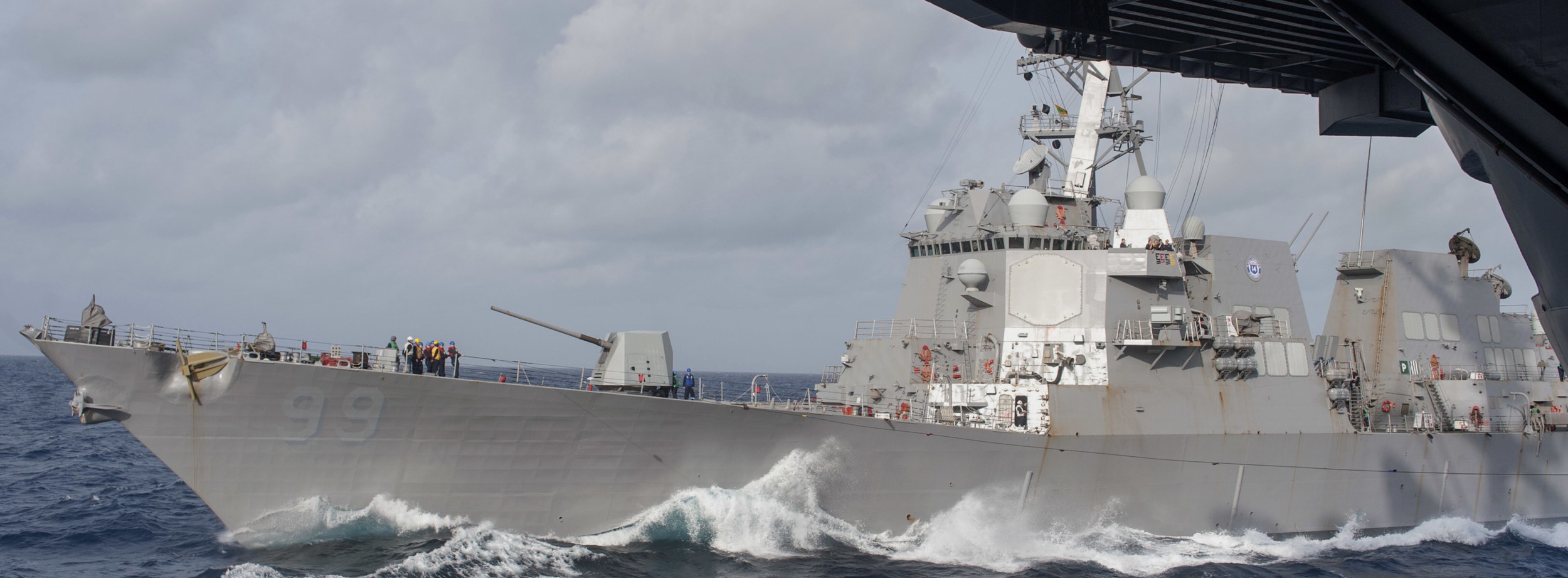 Atlantic Ocean - October 2017 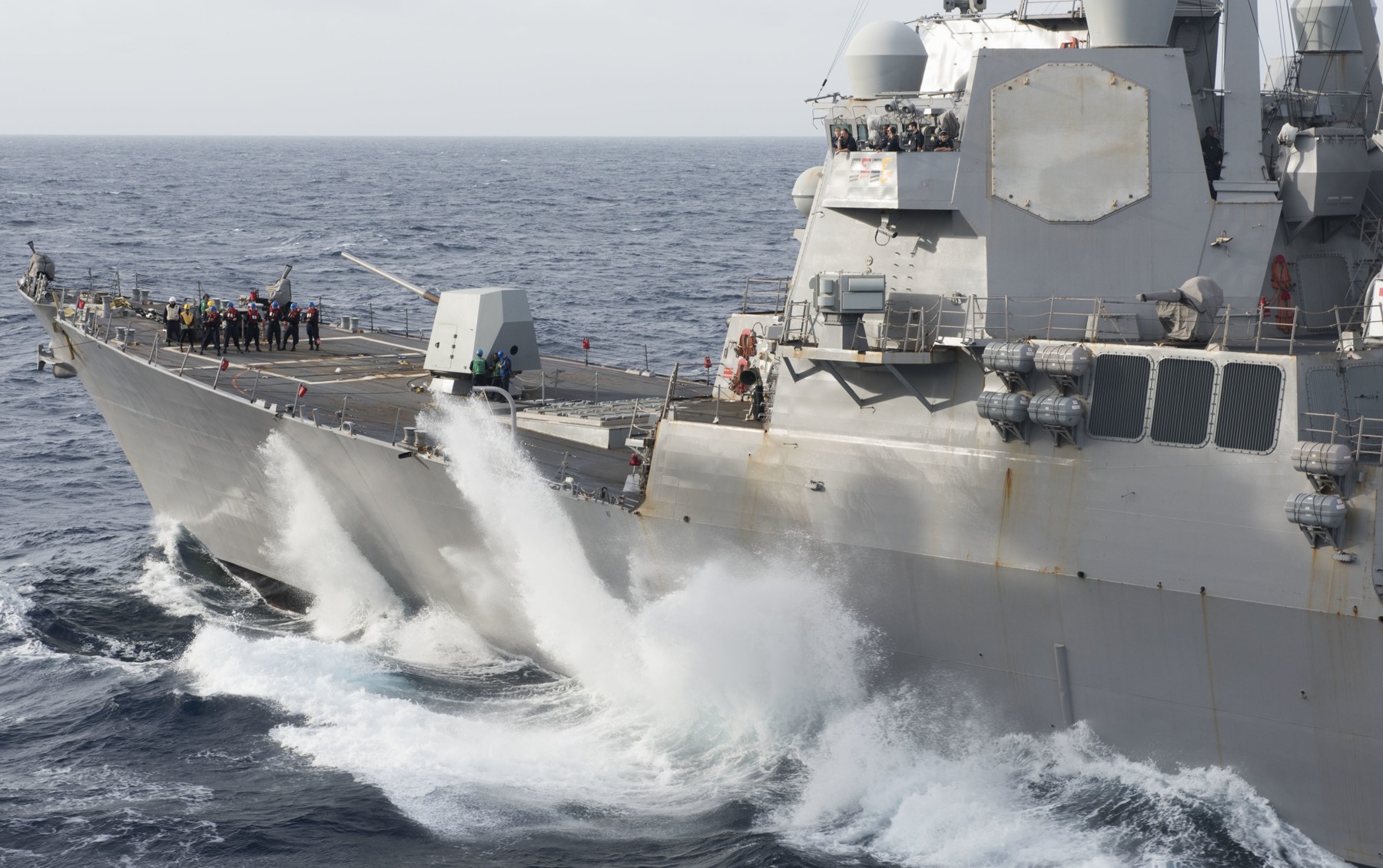 Atlantic Ocean - October 2017 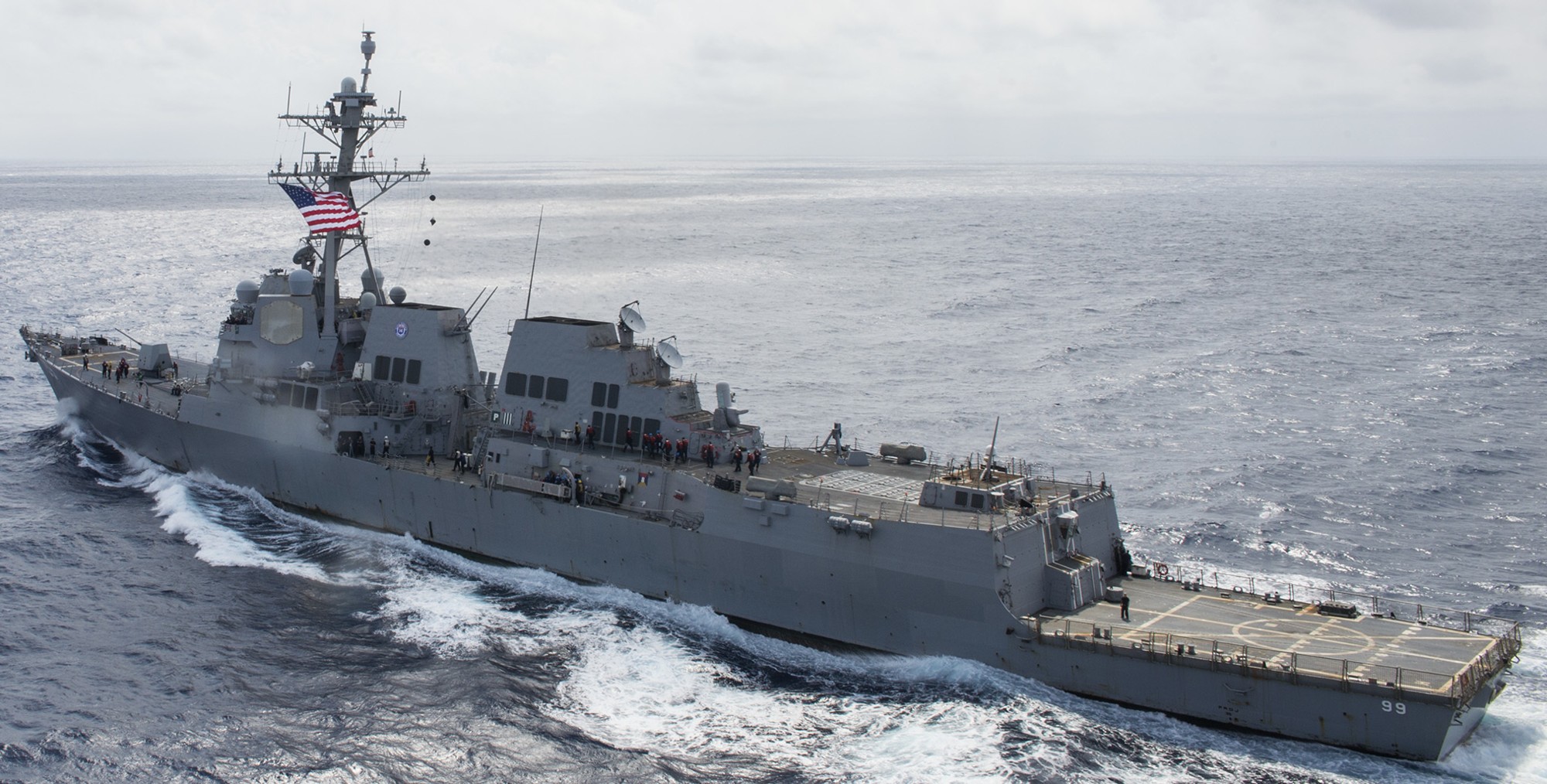 Atlantic Ocean - June 2016 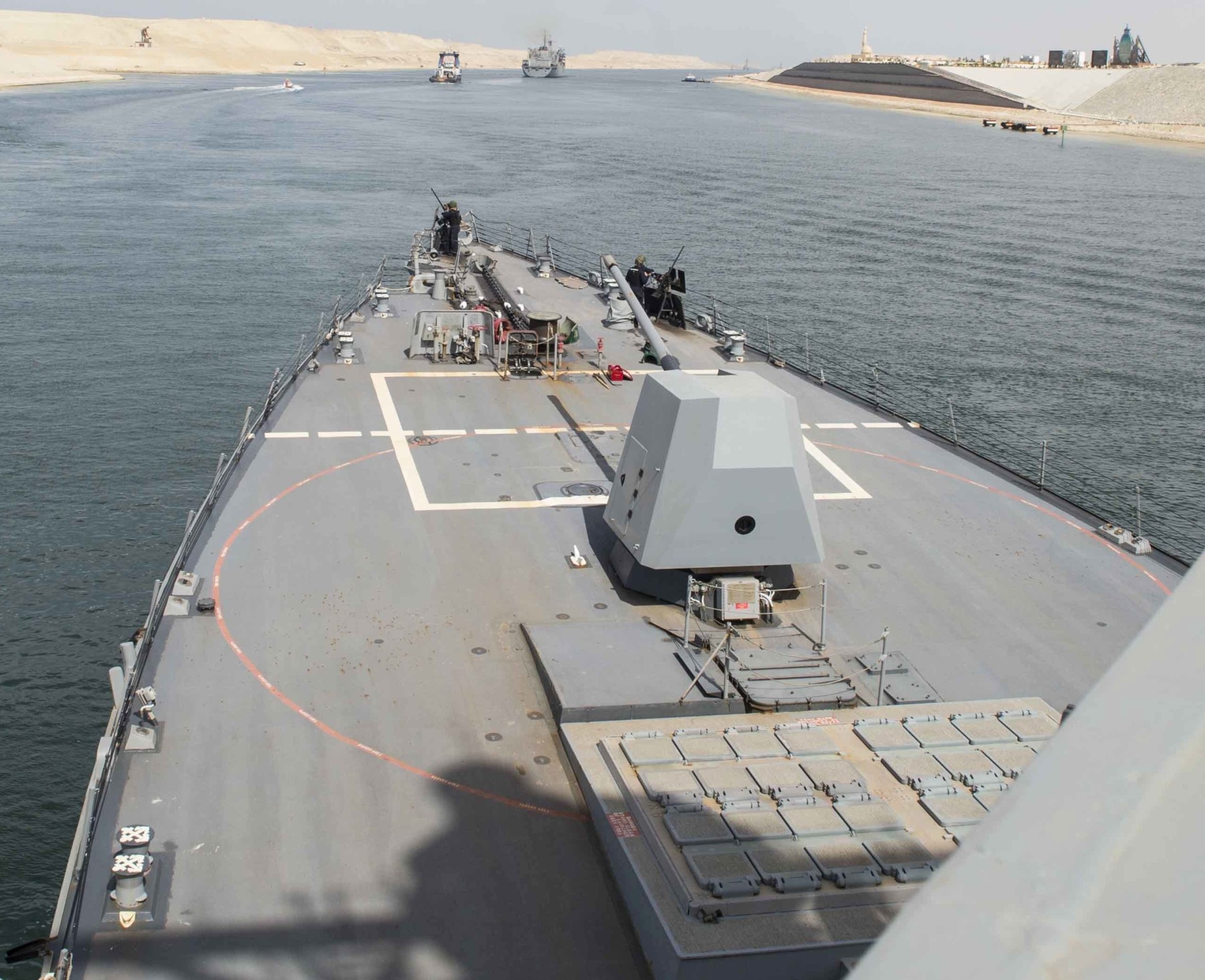 Suez Canal - October 2015 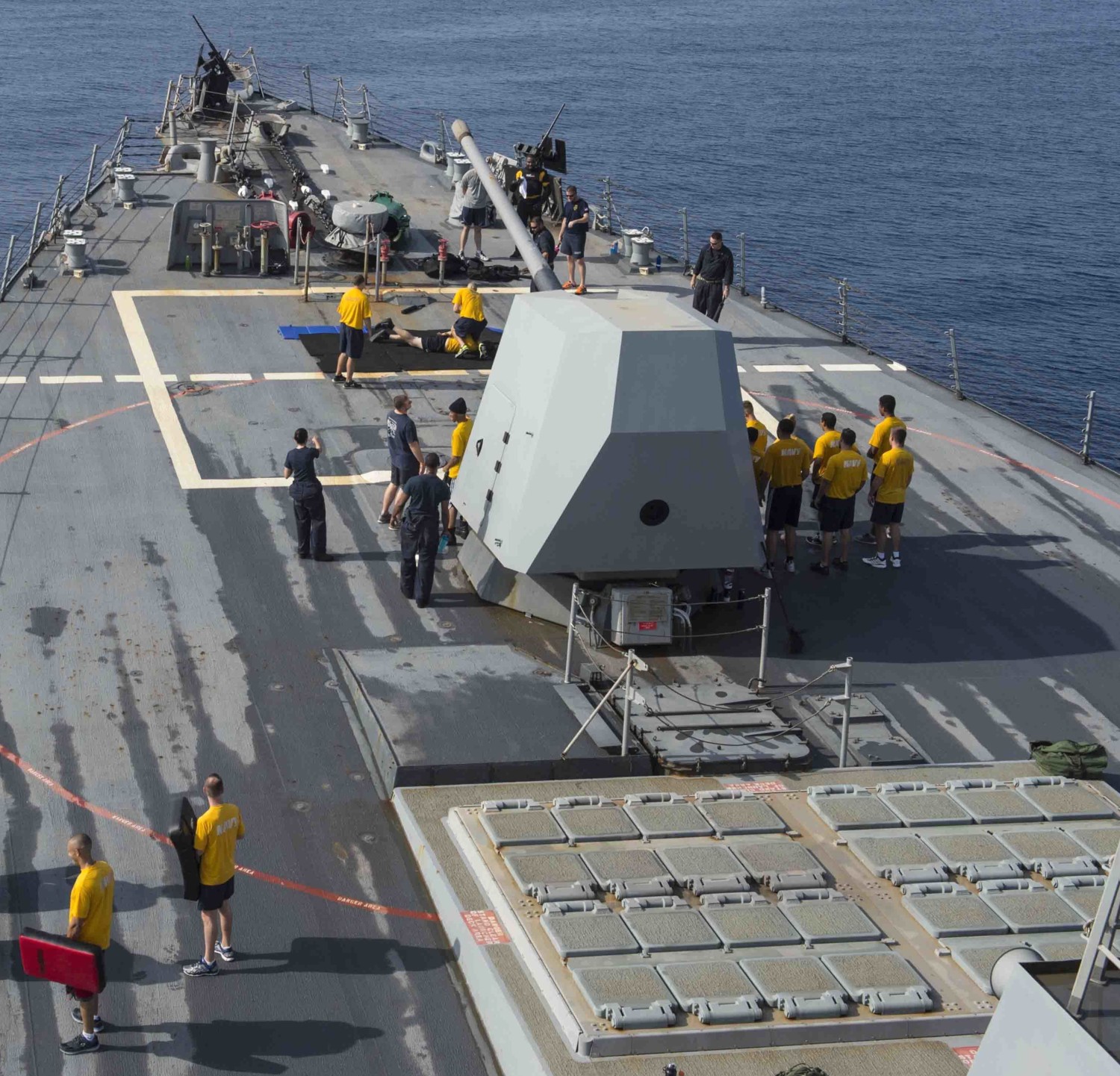 Red Sea - September 2015 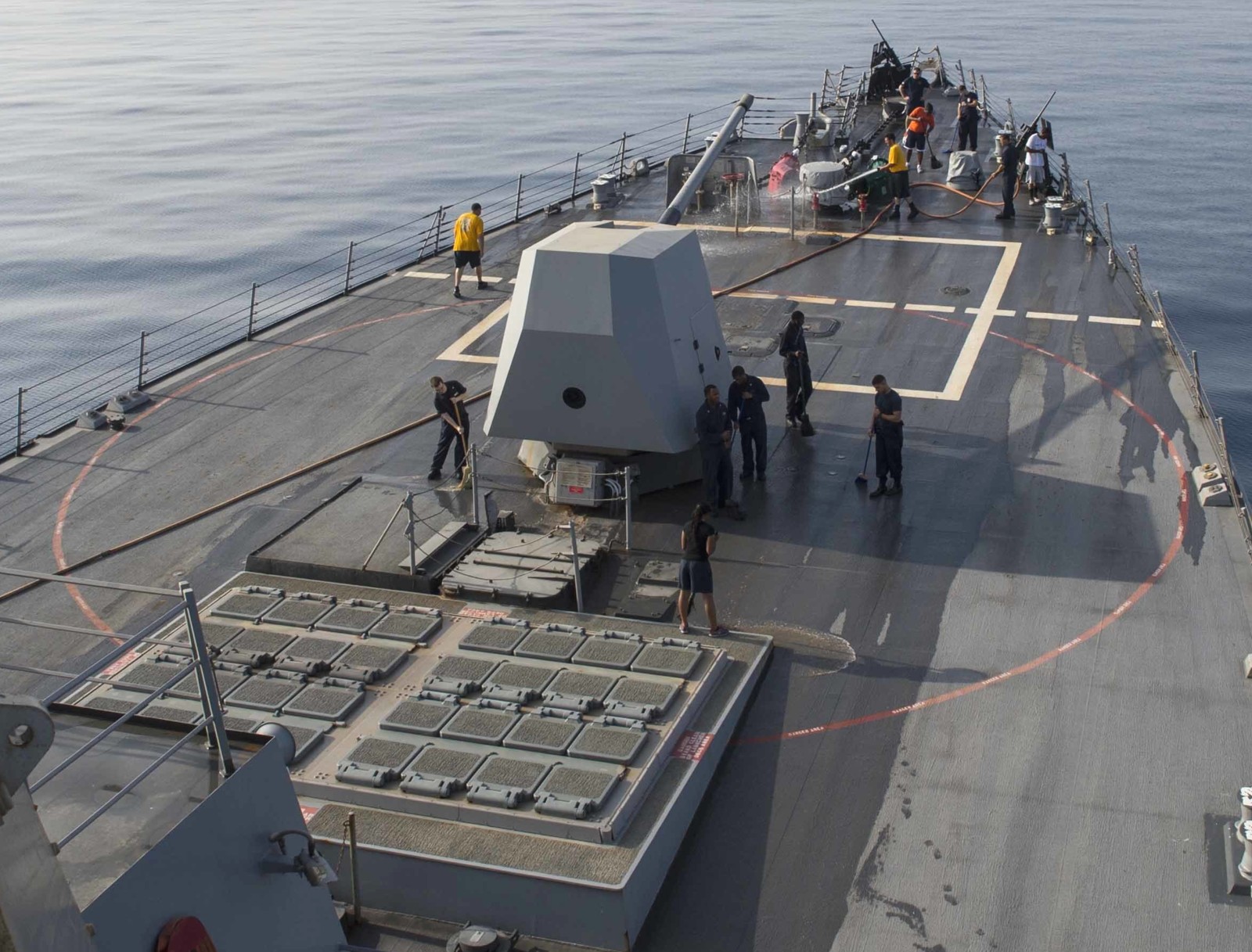 Red Sea - September 2015 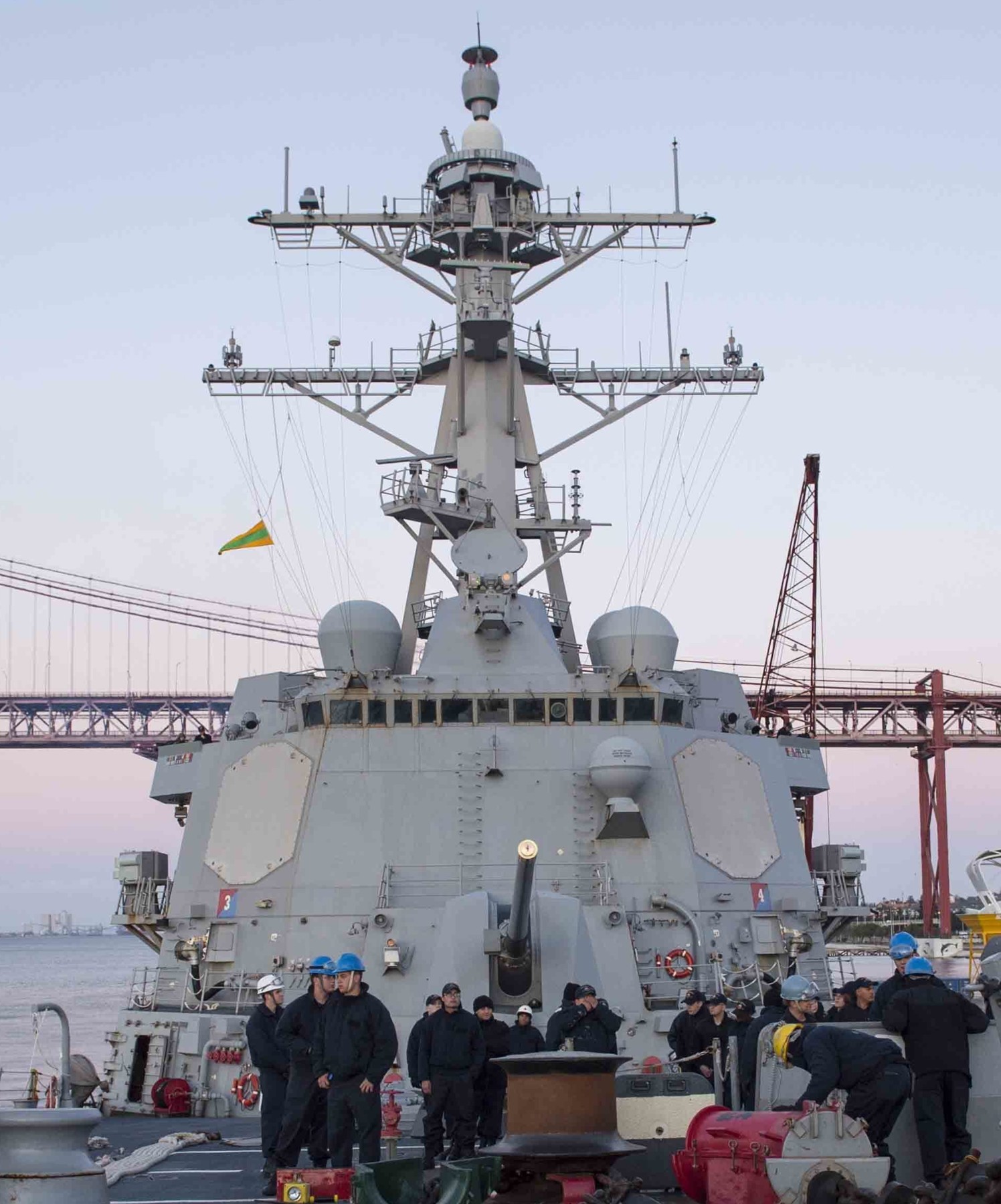 Lisbon, Portugal - March 2015 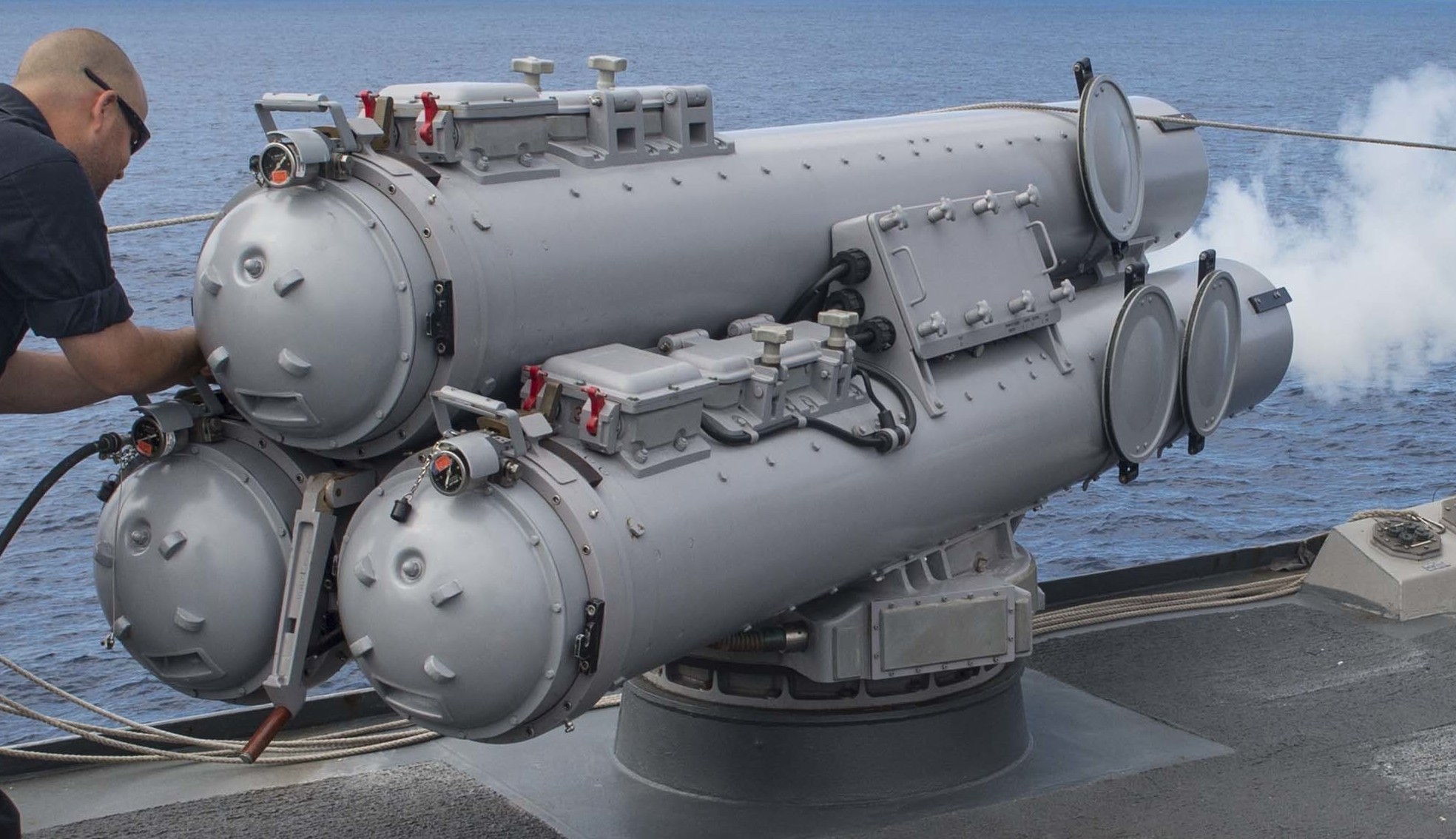 Mk.32 torpedo tubes exercise - Atlantic Ocean - March 2015 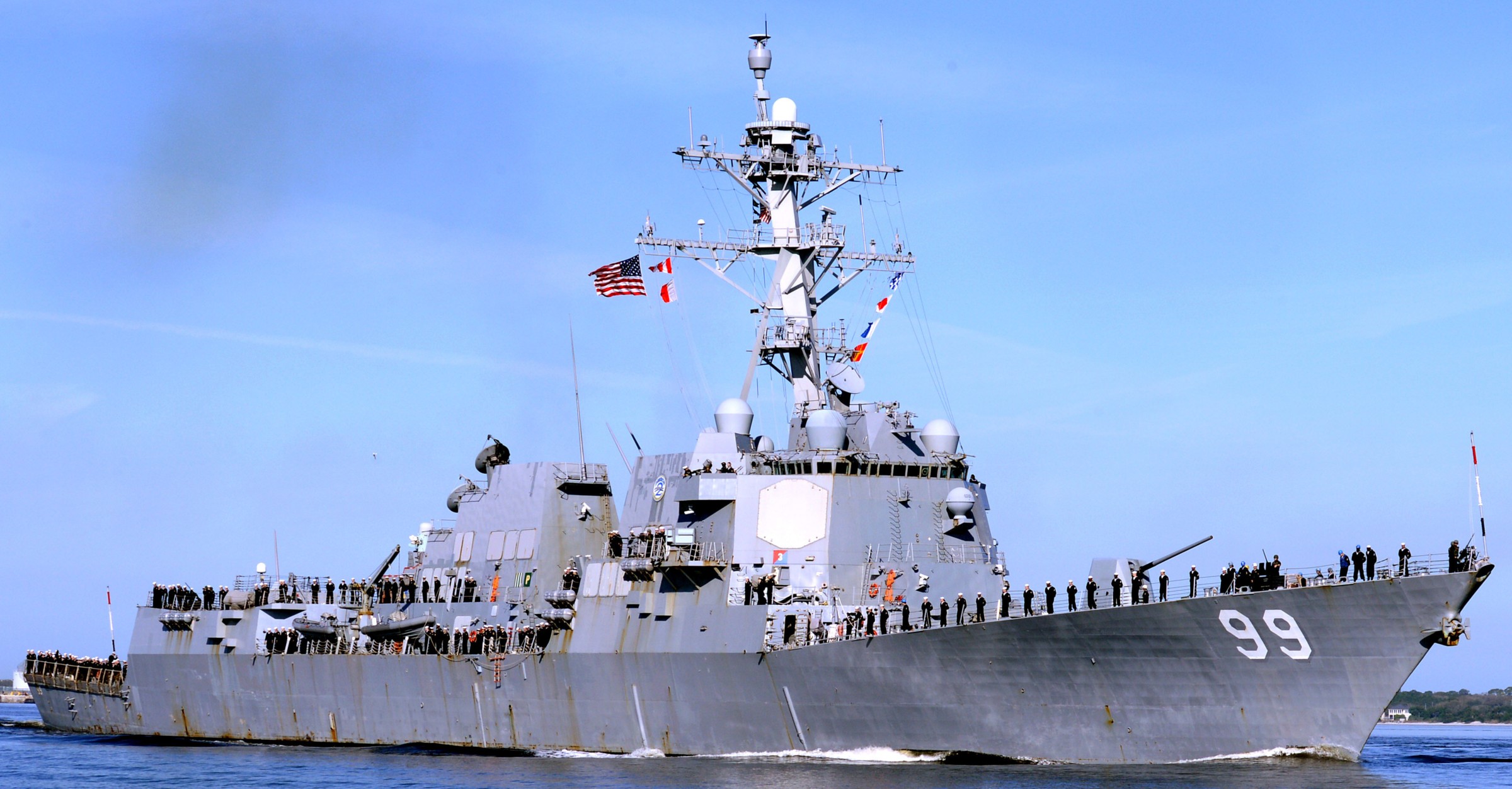 departing Naval Station Mayport, Florida - March 2015 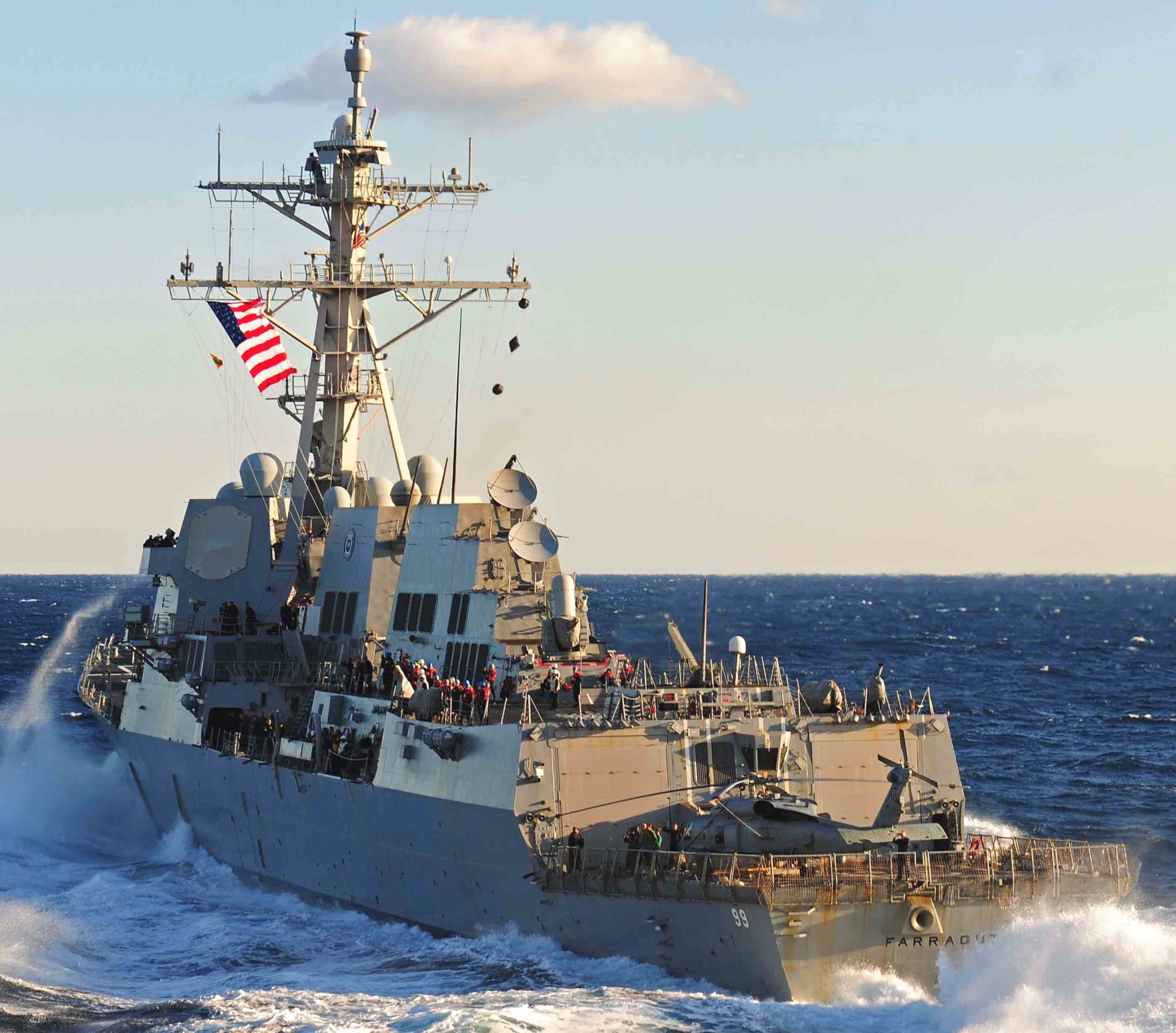 Atlantic Ocean - October 2014  Atlantic Ocean - August 2014  Key West, Florida - May 2014 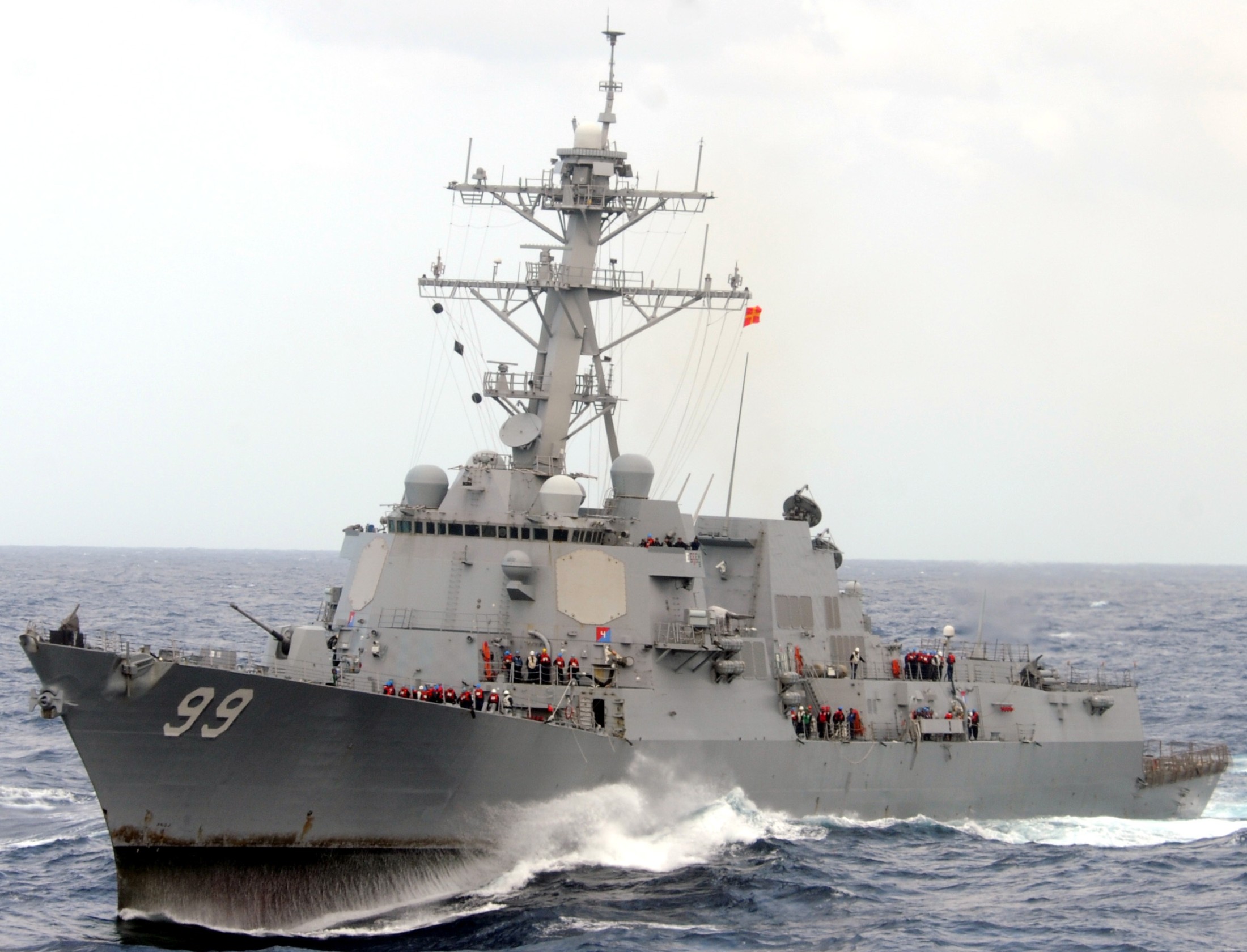 Atlantic Ocean - March 2013 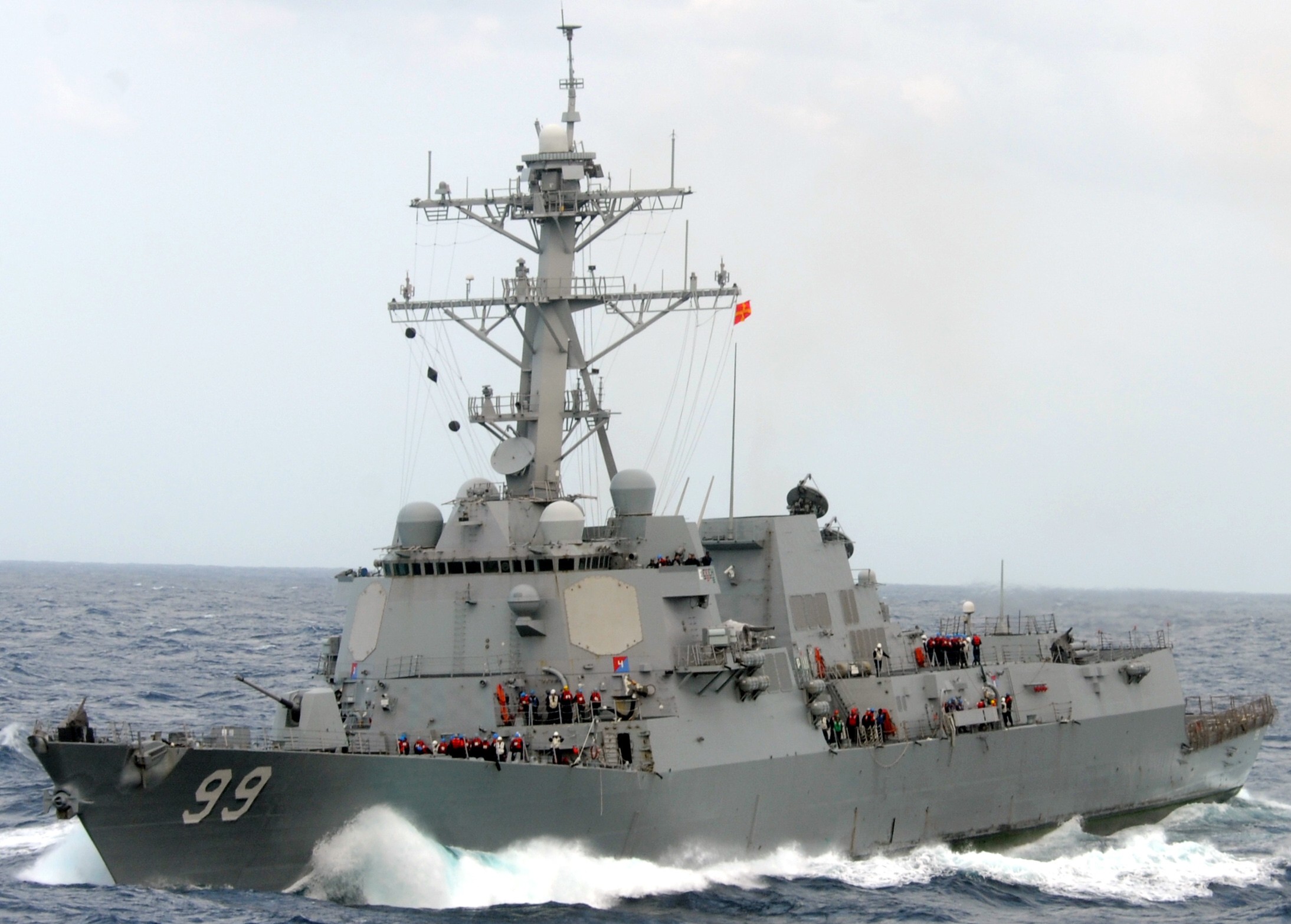 Atlantic Ocean - March 2013 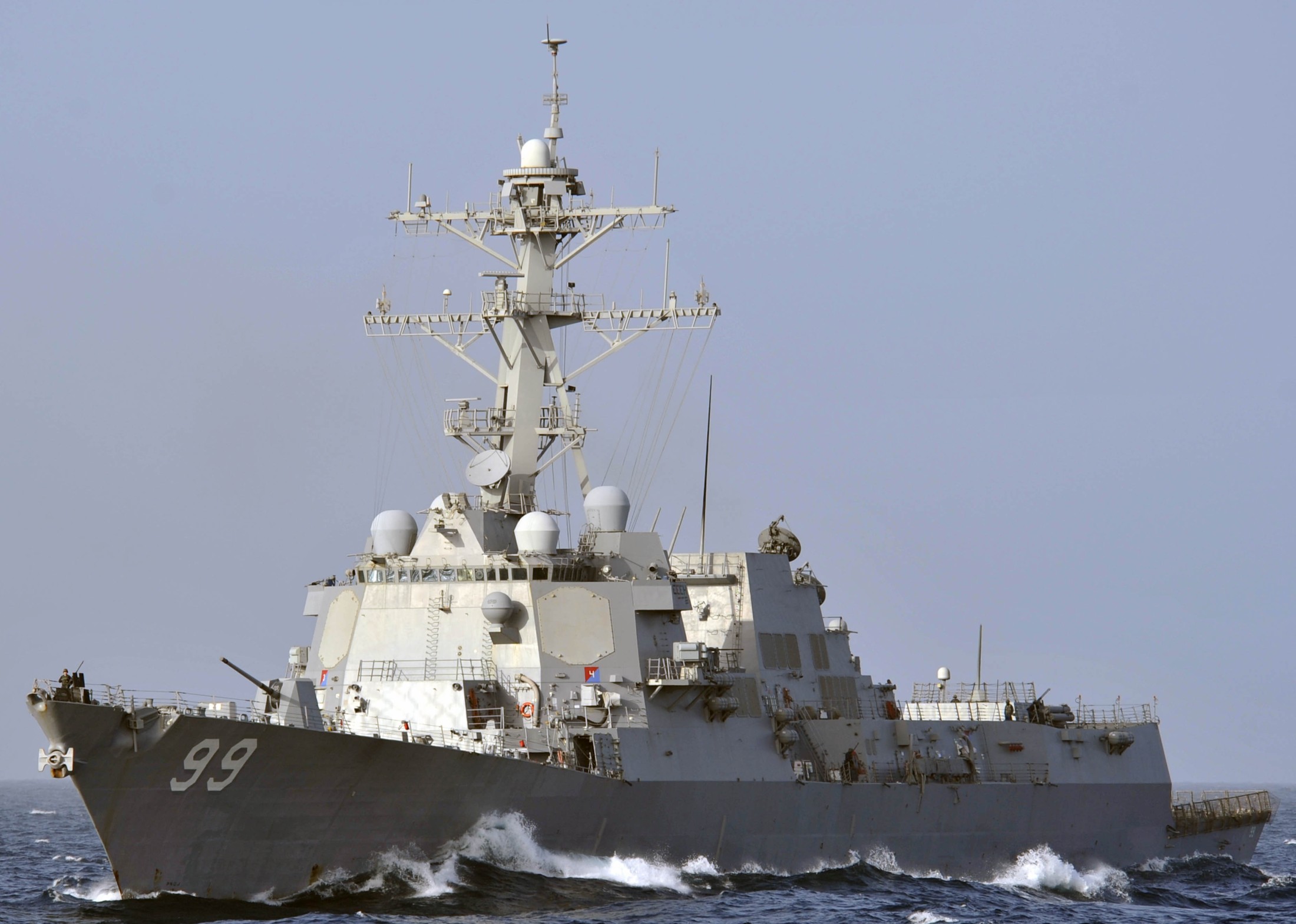 5th Fleet AOR - January 2013 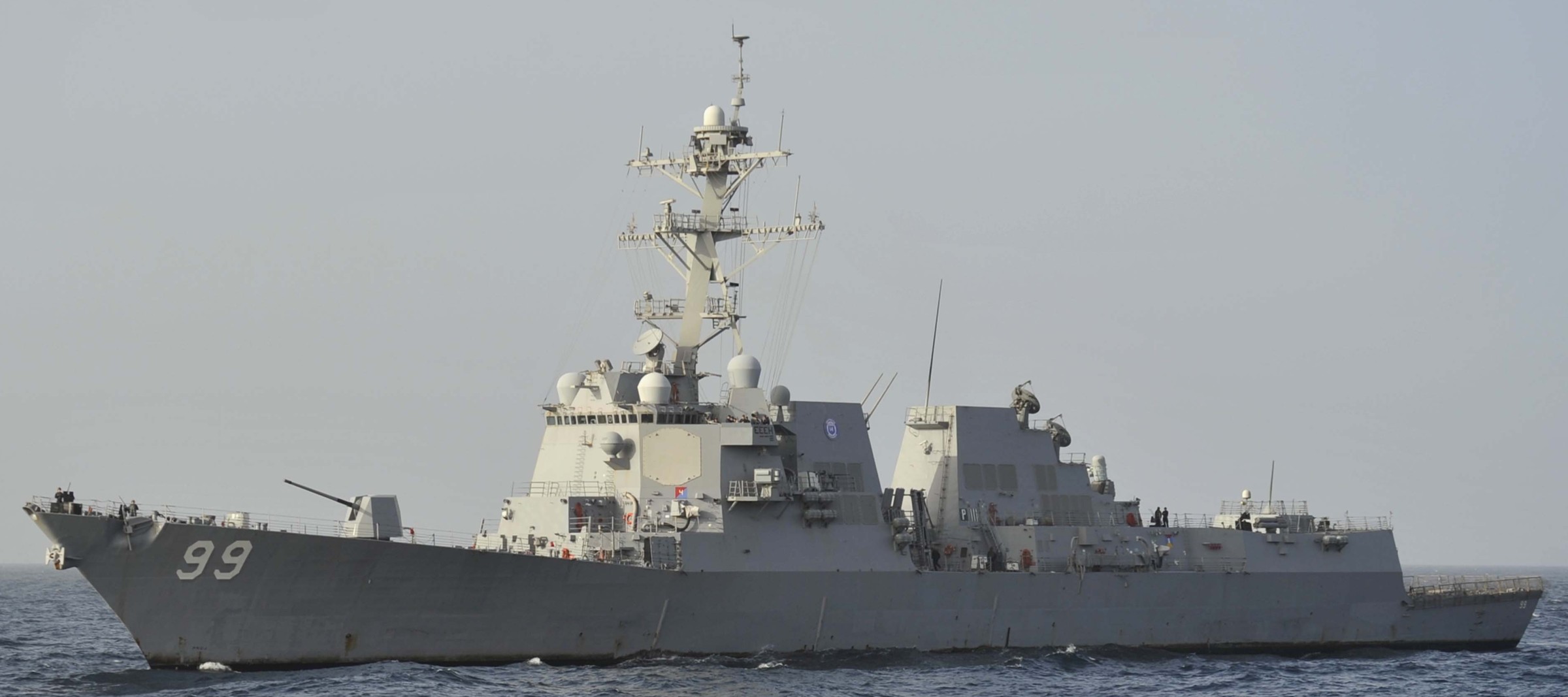 5th Fleet AOR - January 2013 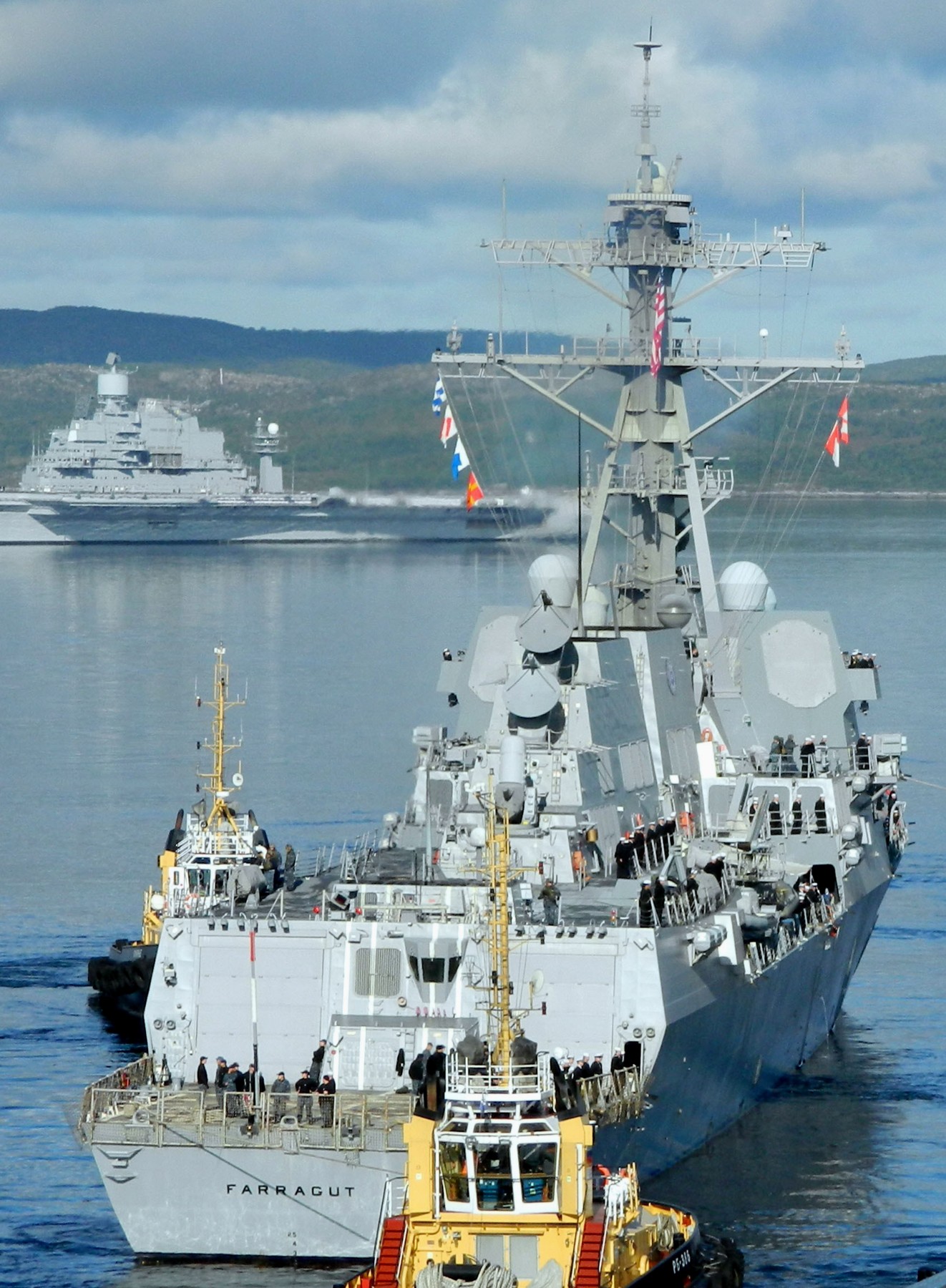 Severomorsk, Russian Federation - August 2012 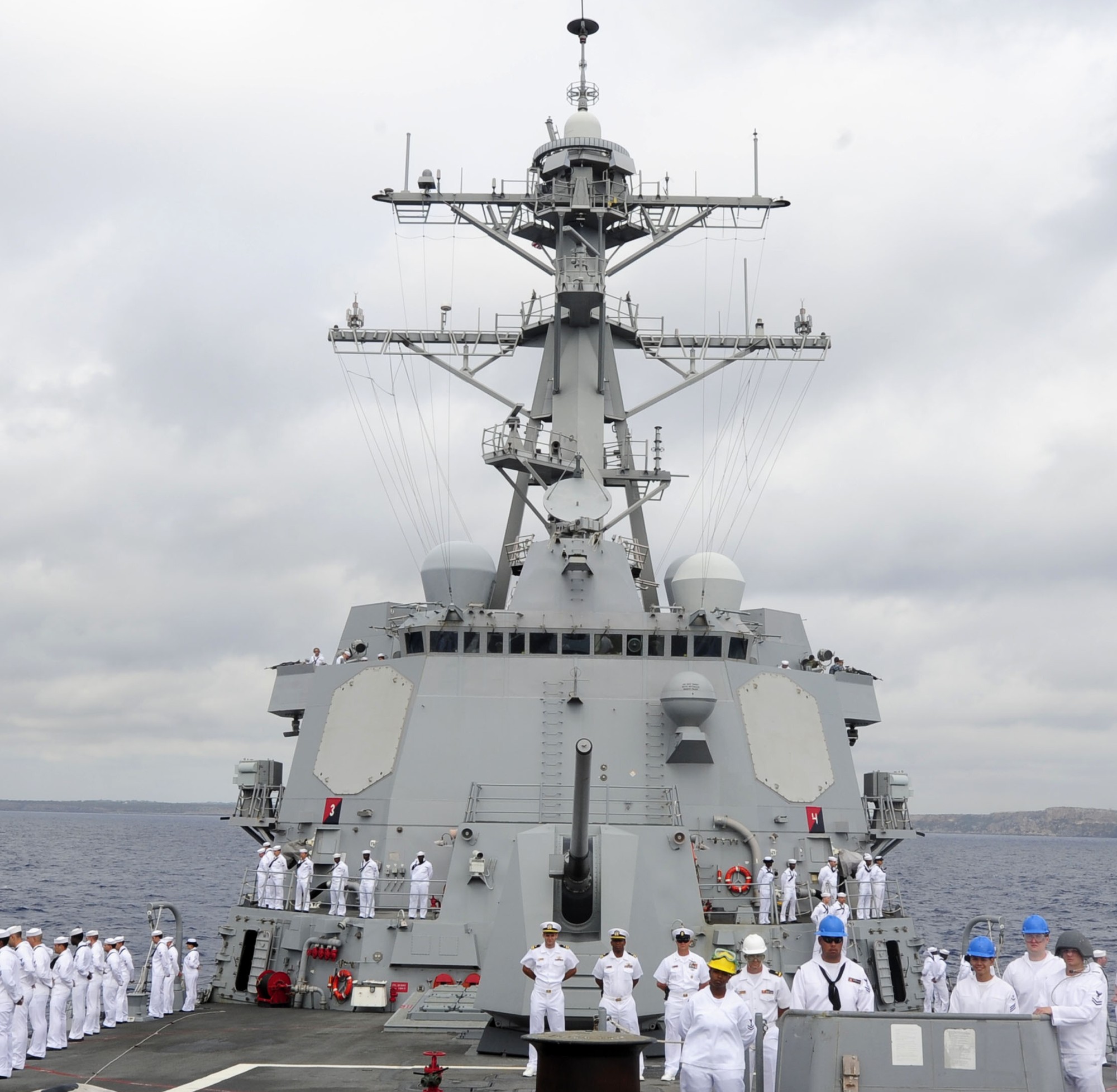 approaching Menorca, Spain - July 2012  Atlantic Ocean - June 2012  Atlantic Ocean - June 2012 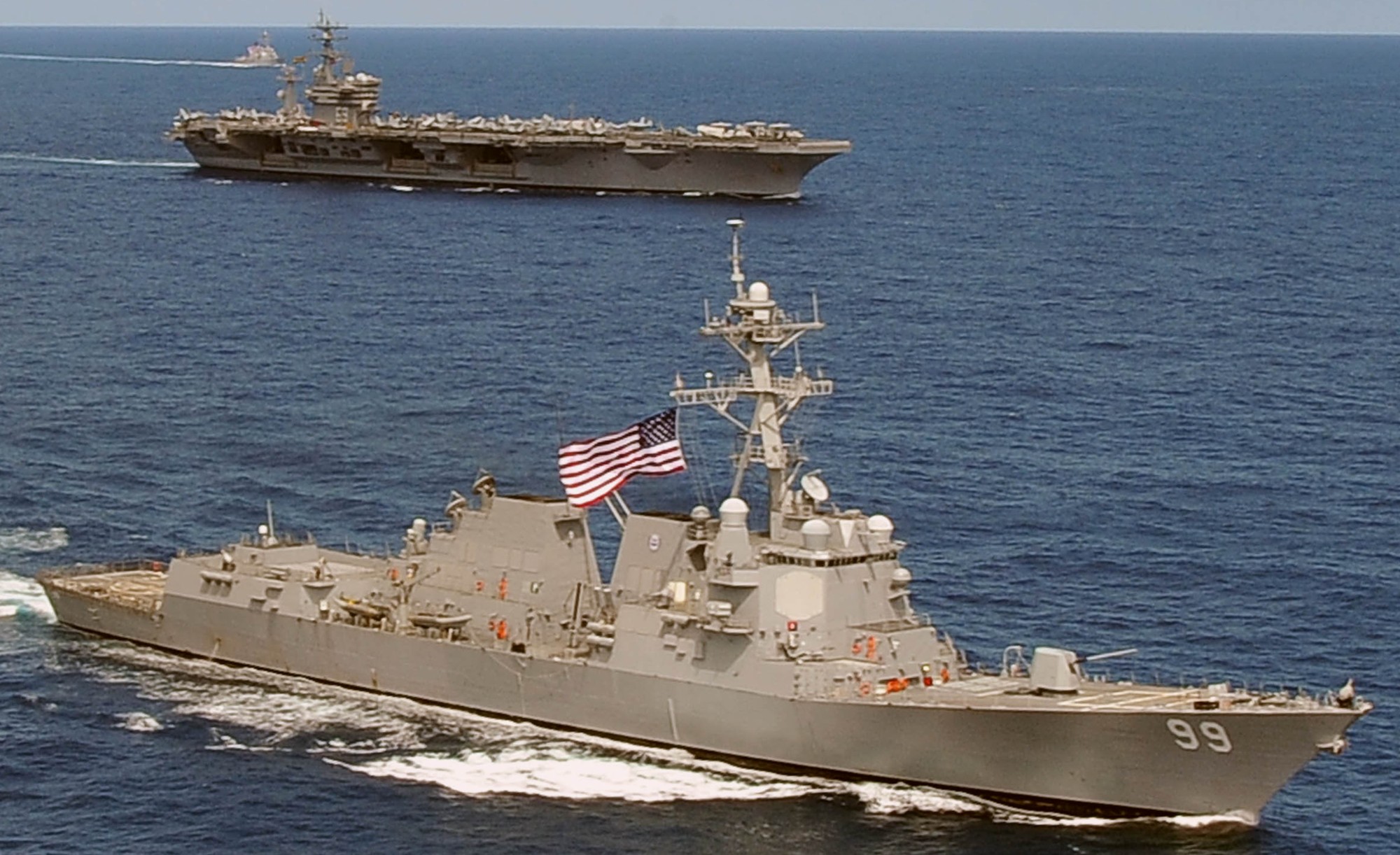 with USS Dwight D. Eisenhower (CVN 69) - Atlantic Ocean - June 2012 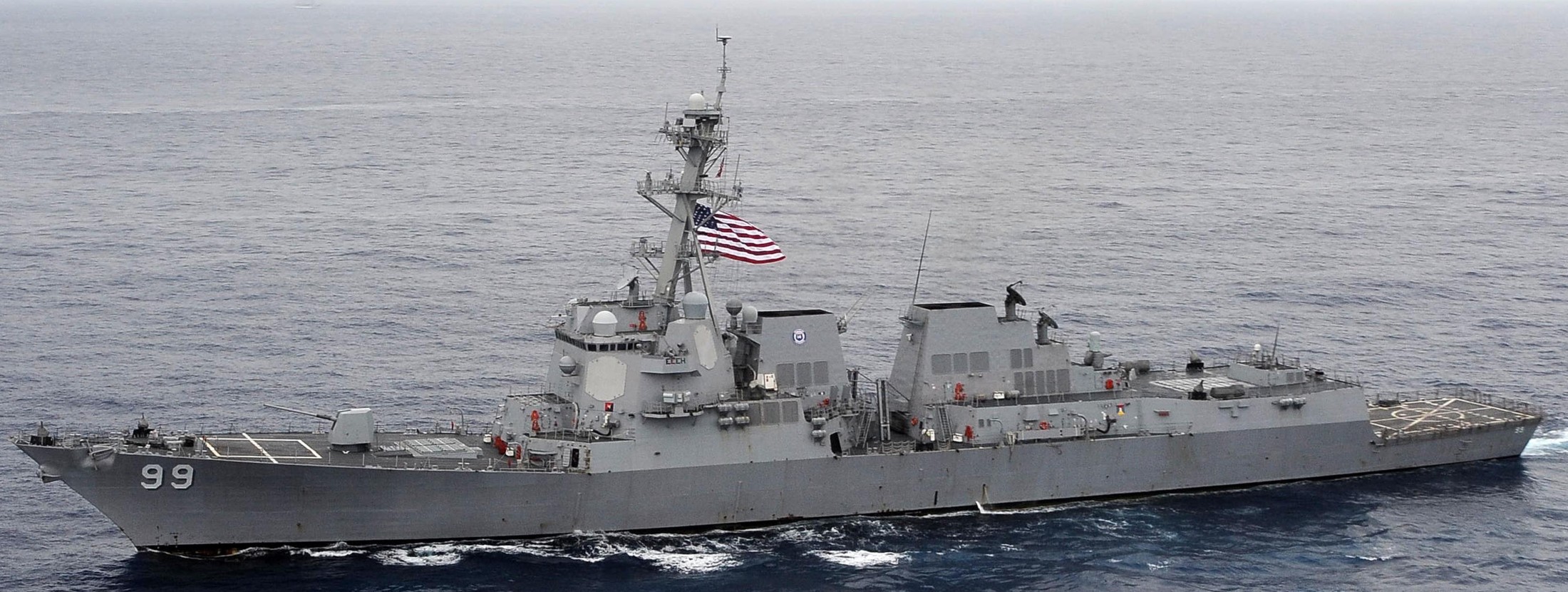 Atlantic Ocean - May 2012  Atlantic Ocean - March 2012 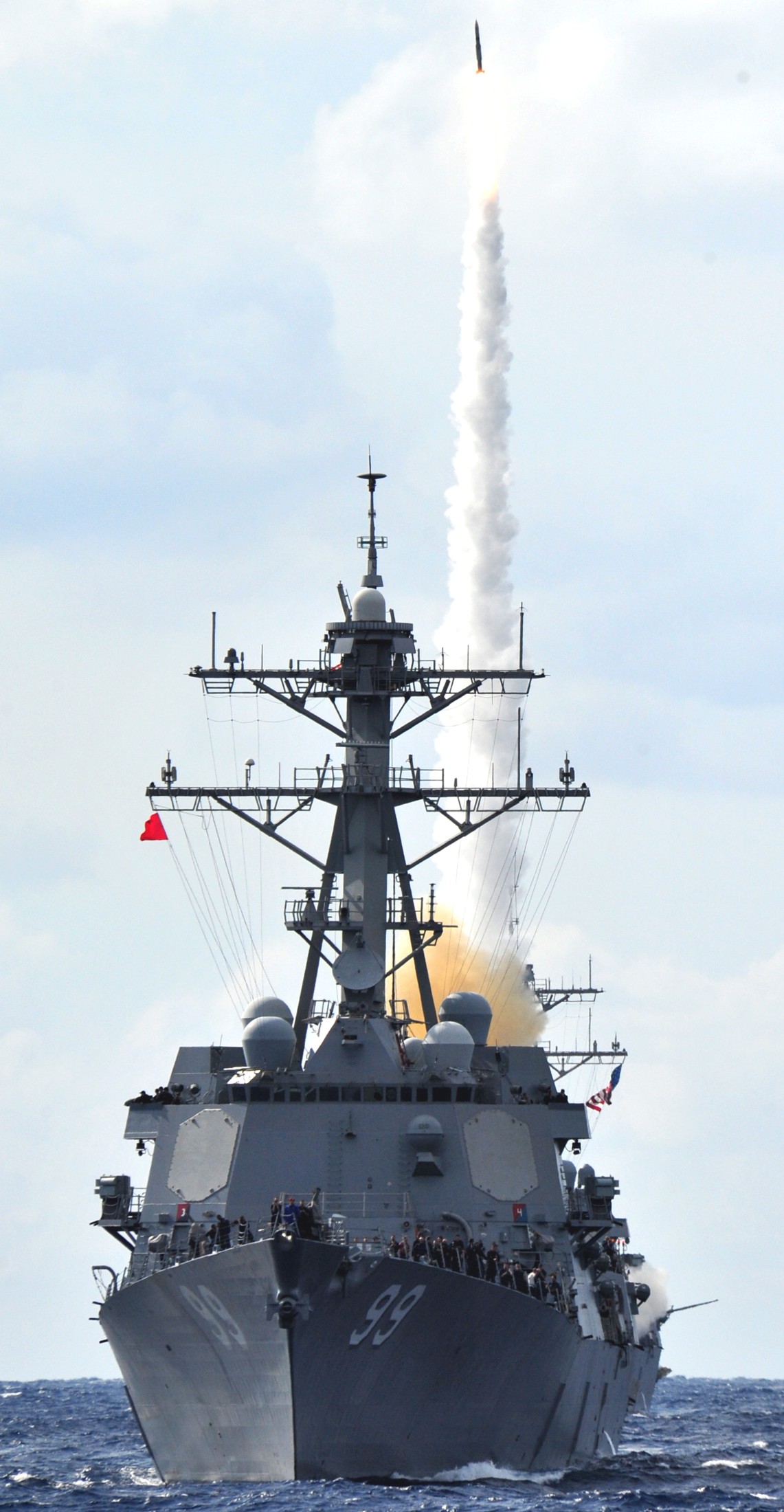 missile firing exercise - Atlantic Ocean - March 2012 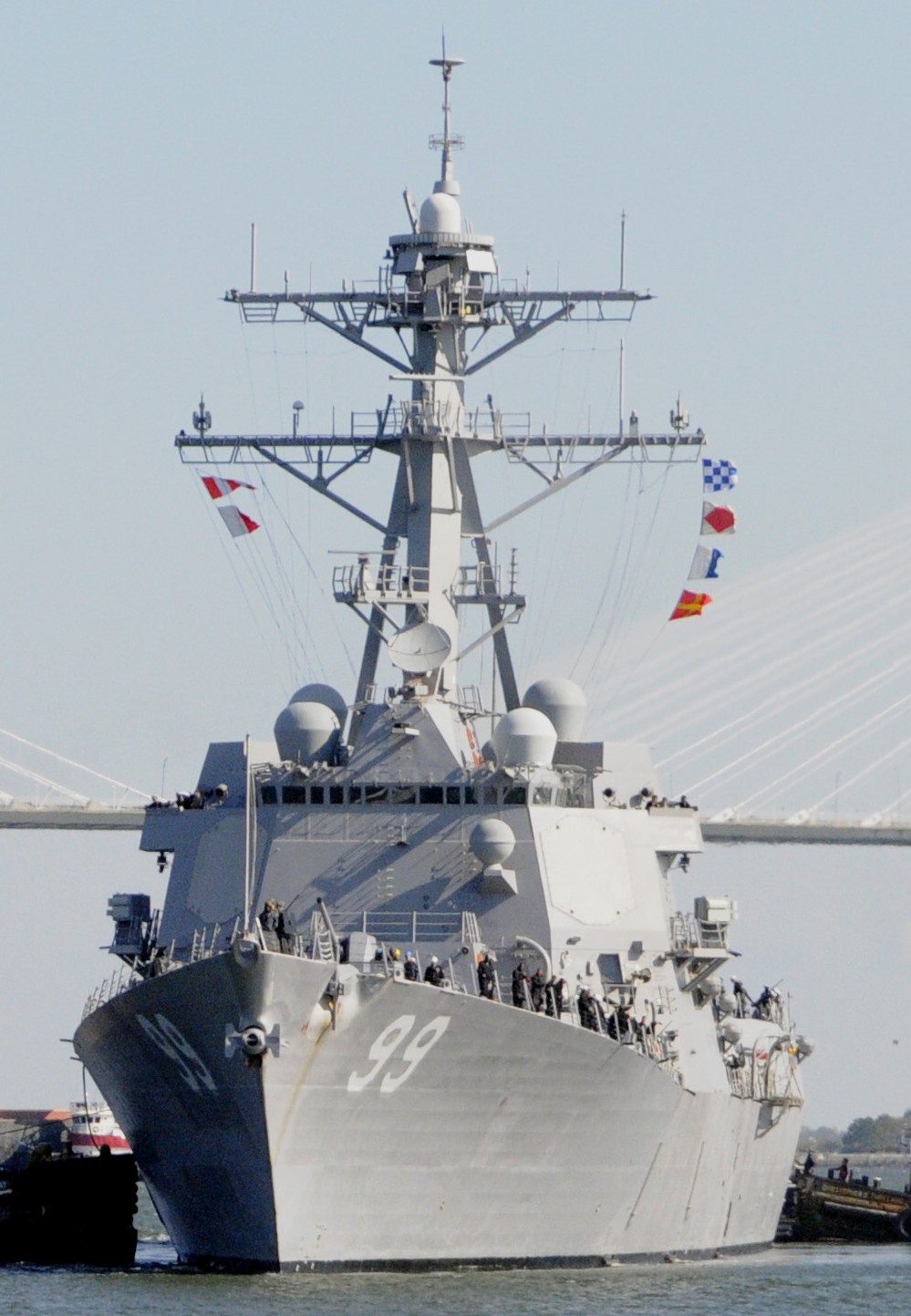 Charleston, South Carolina - March 2011 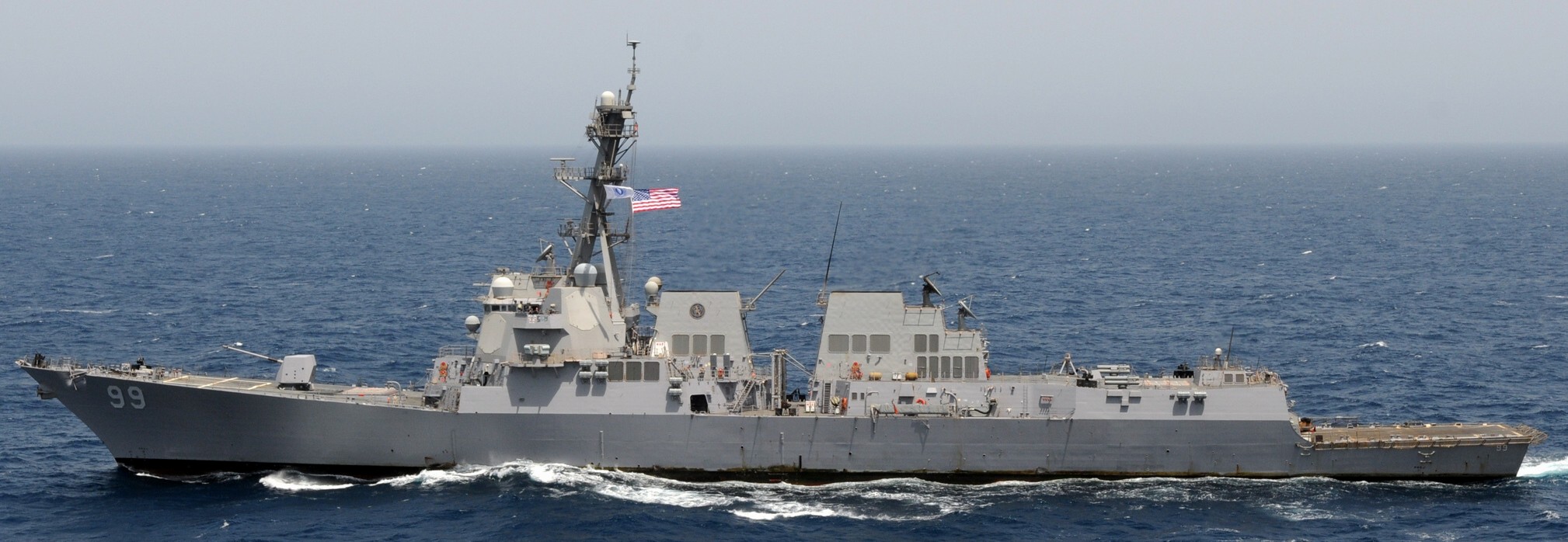 Arabian Sea - May 2010 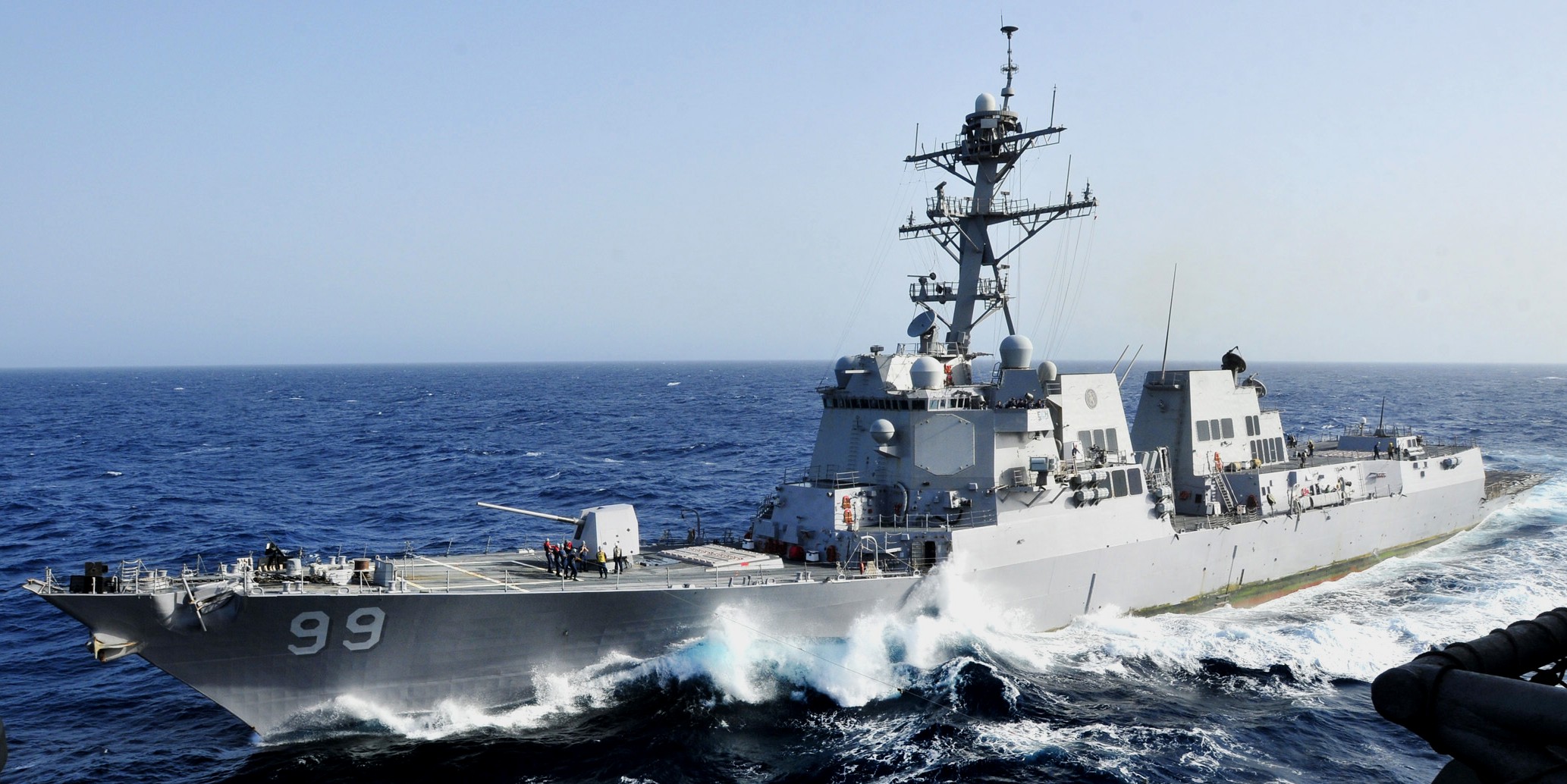 Arabian Sea - May 2010 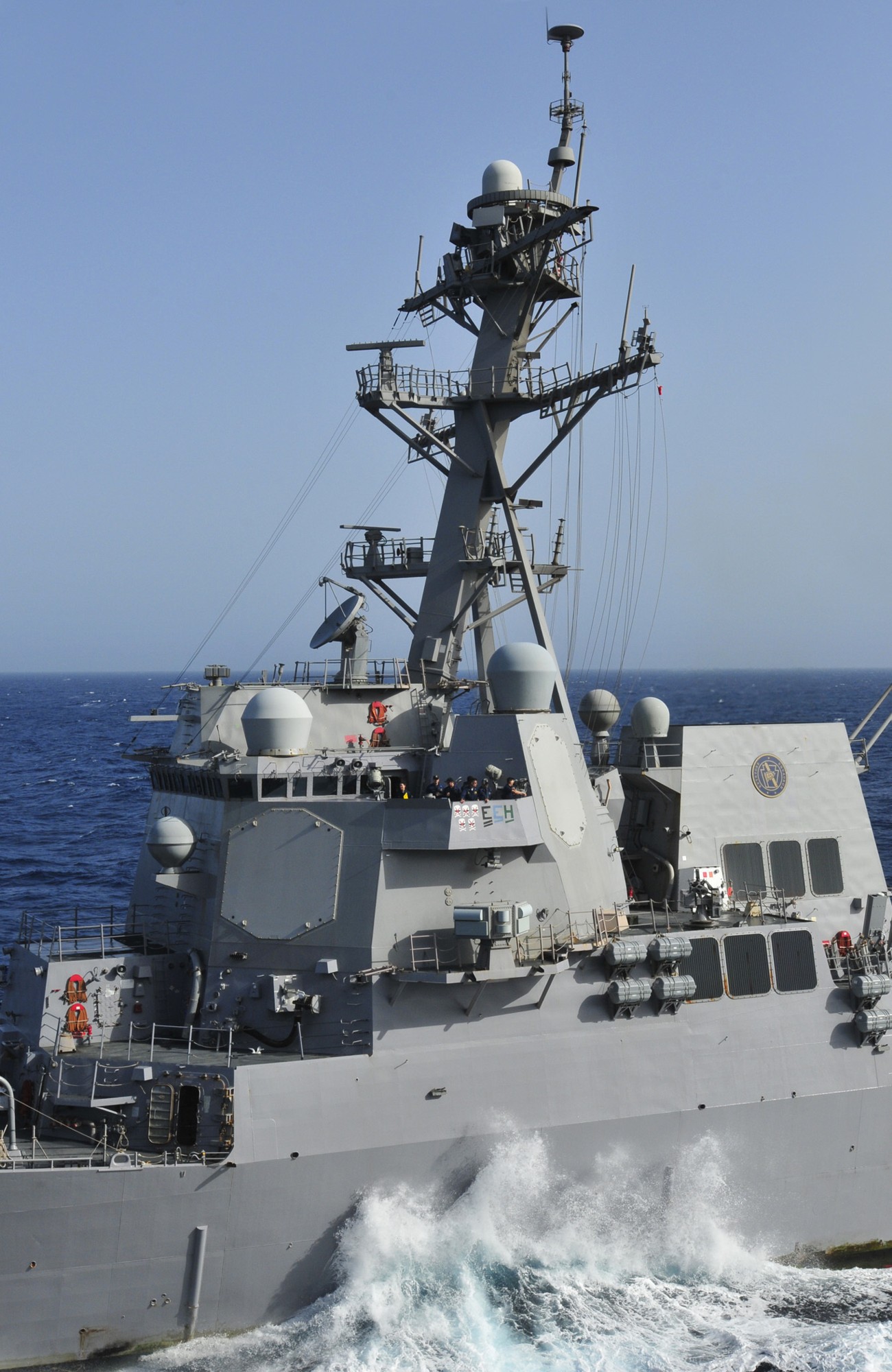 Arabian Sea - May 2010  with USS Dwight D. Eisenhower (CVN 69) - 5th Fleet AOR - May 2010 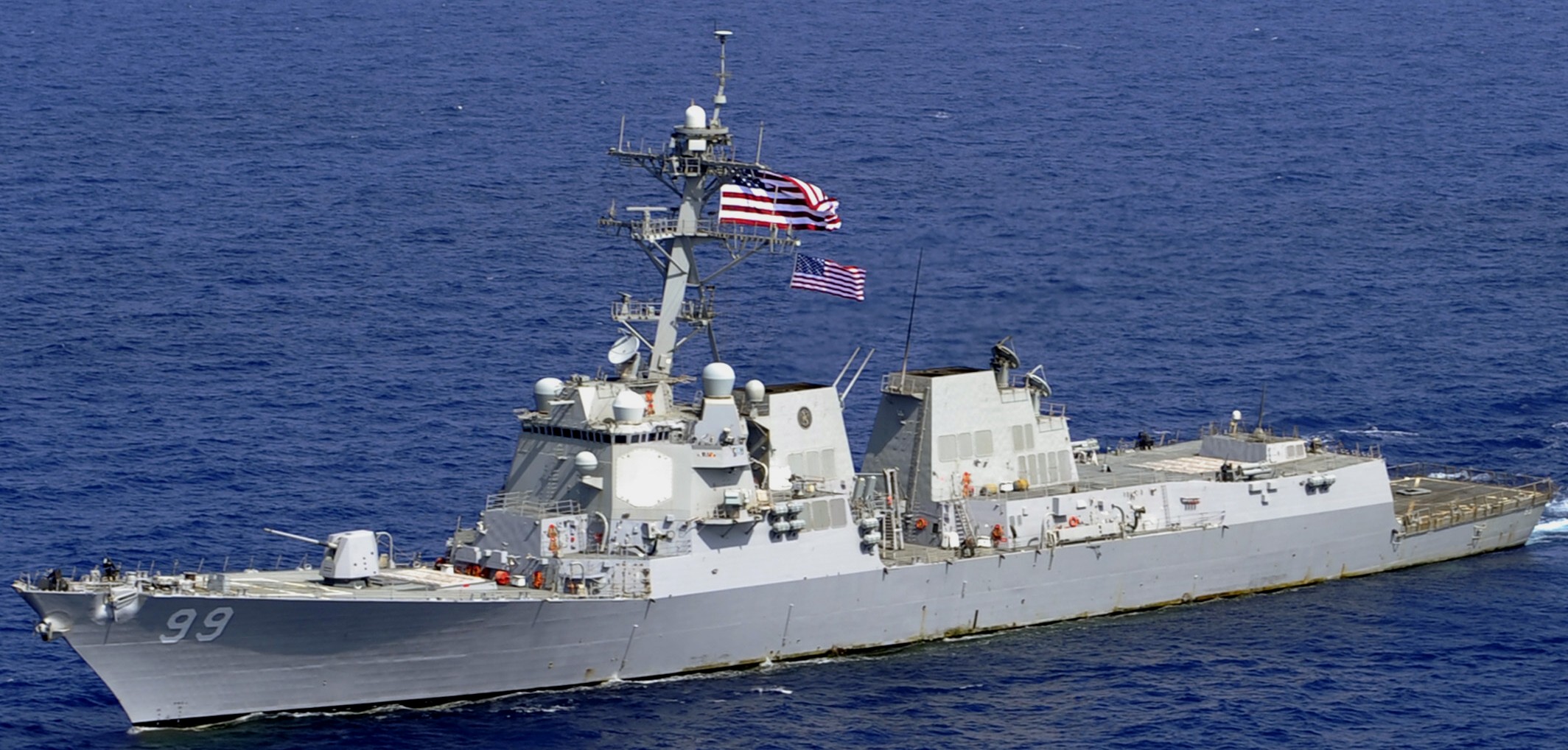 Gulf of Aden - May 2010 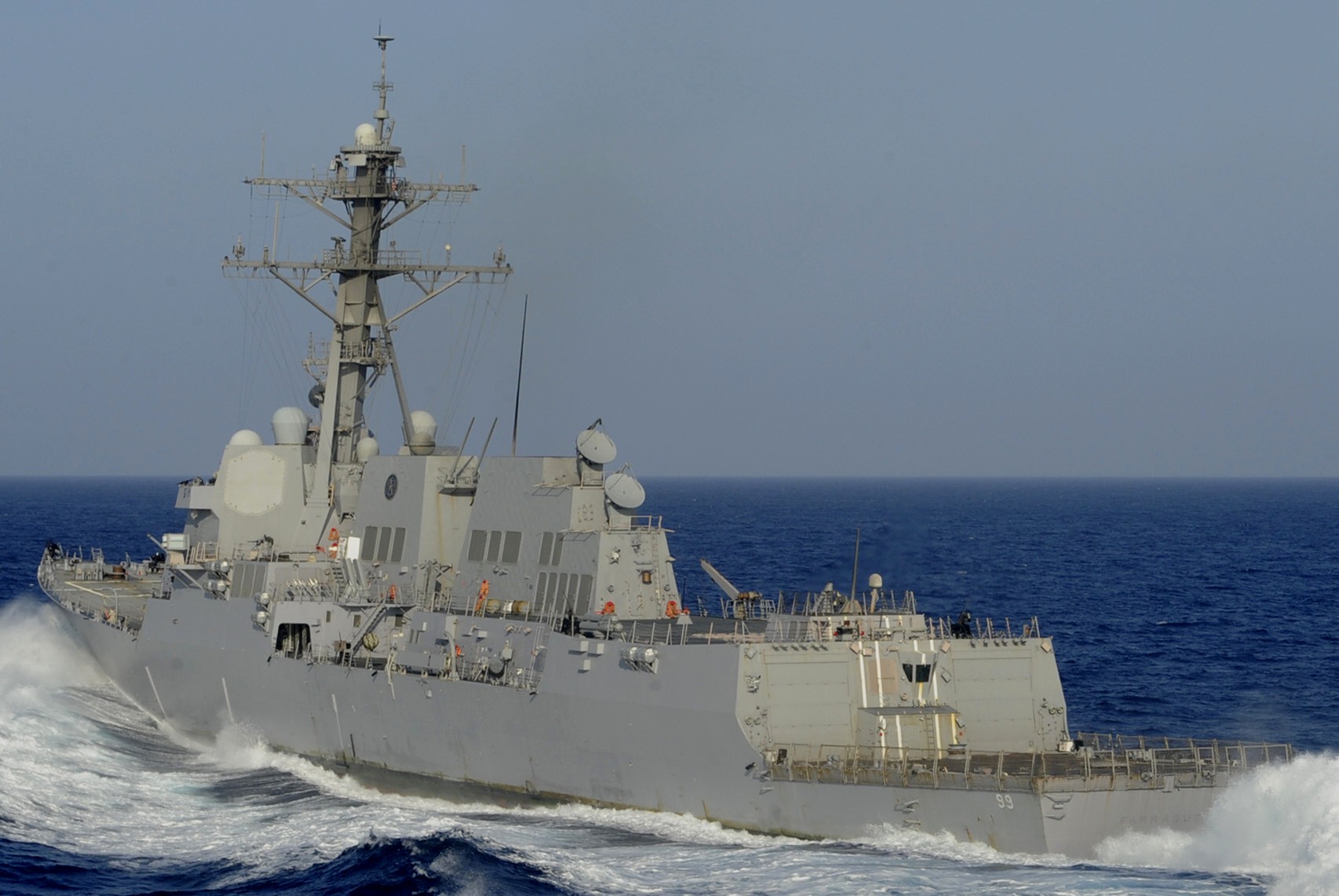 Gulf of Aden - May 2010 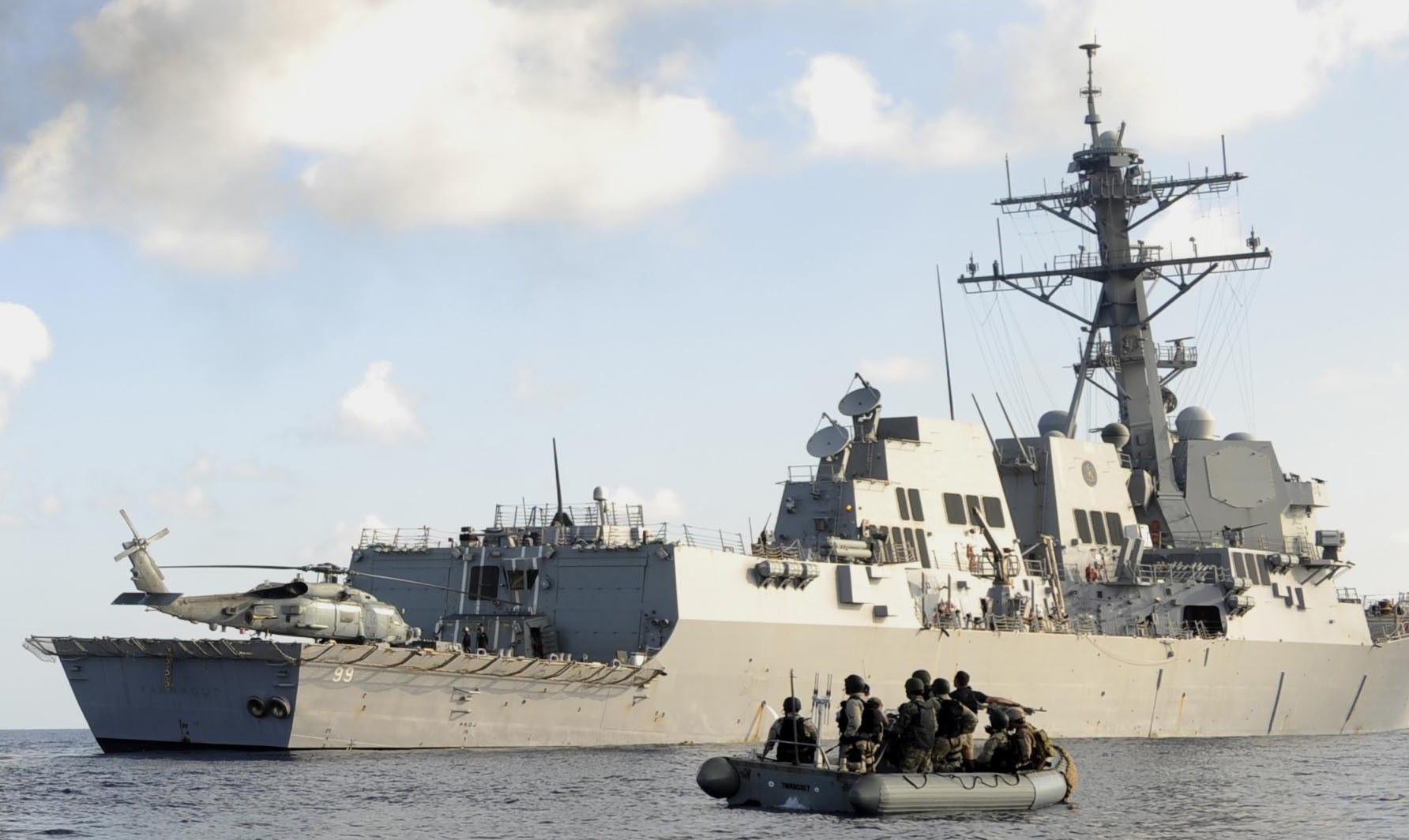 Indian Ocean - March 2010  off Sattahip, Thailand - February 2010 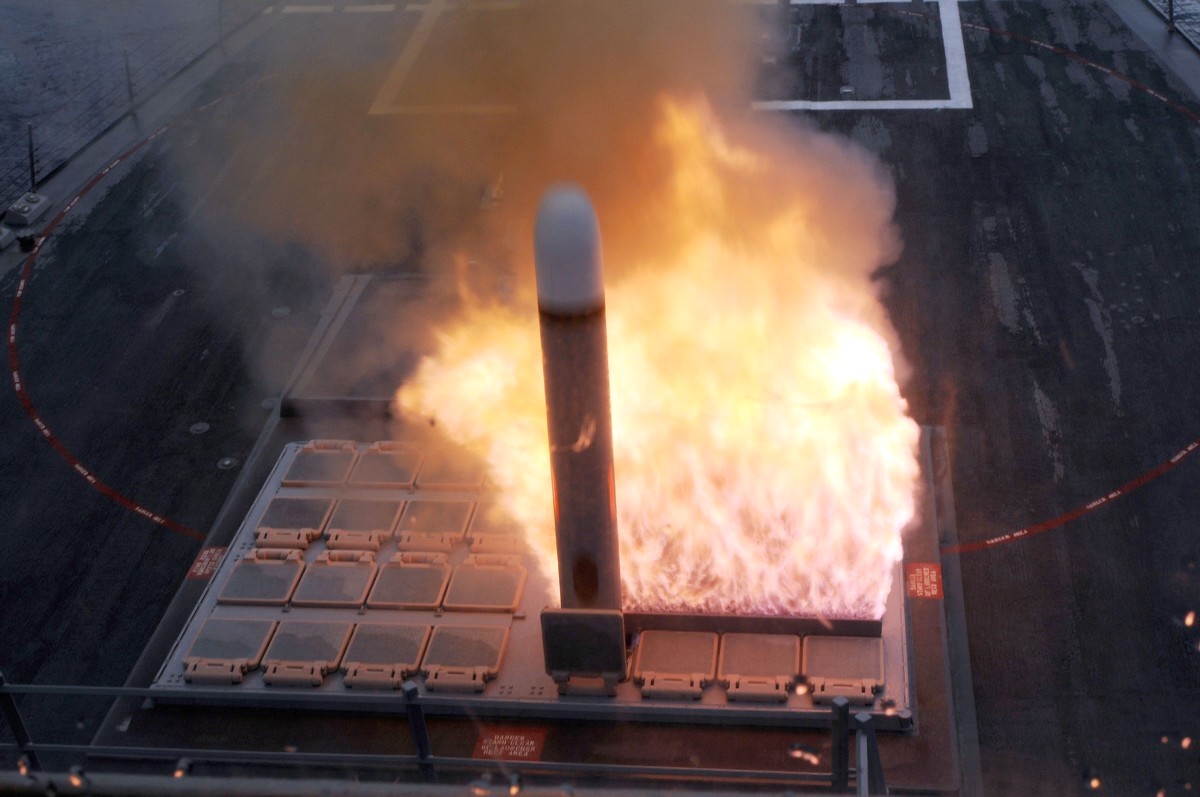 BGM-109 Tomahawk TLAM missile launch - Atlantic Ocean - August 2009 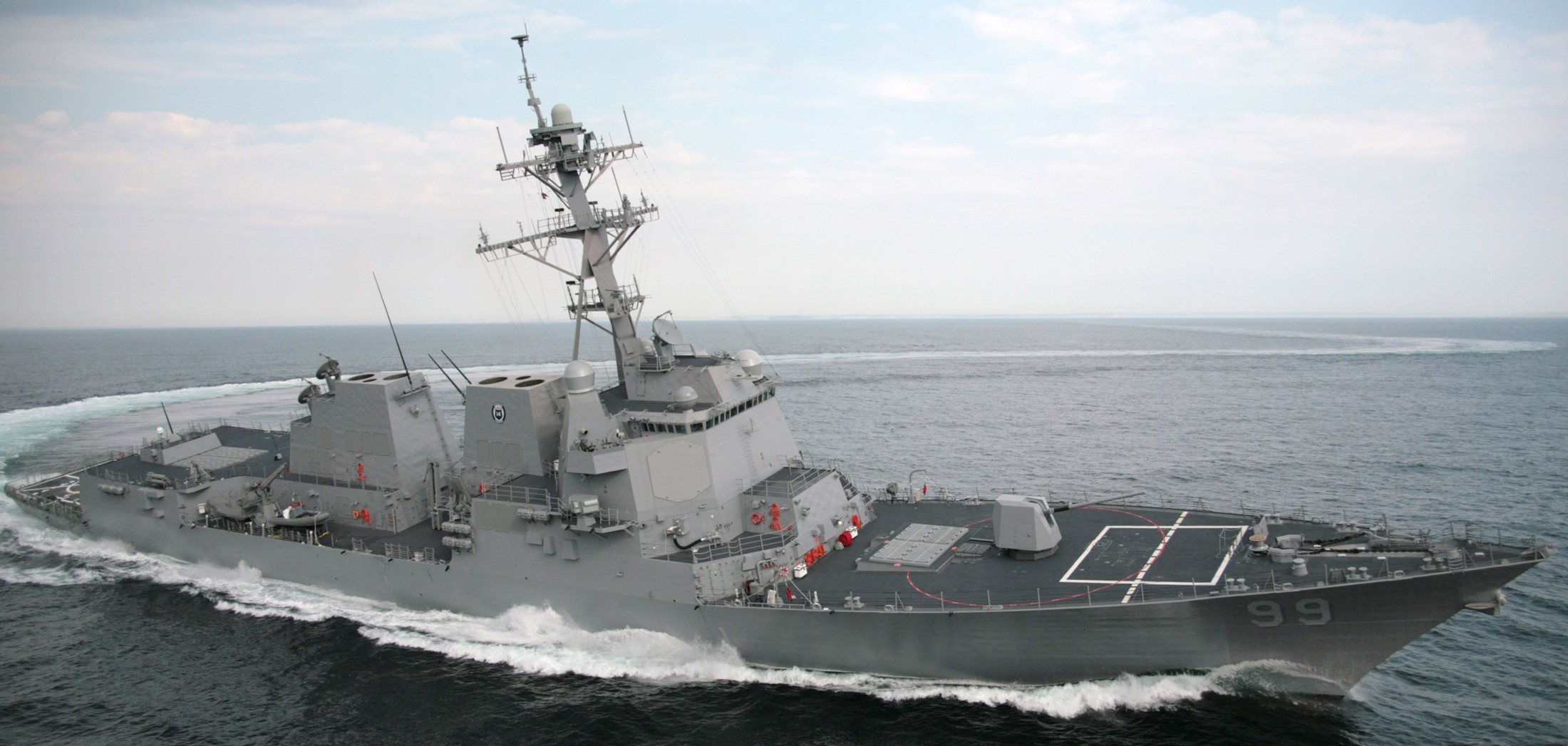 sea trials |
||
|
USS Farragut (DDG 99): Farragut departed Naval Station Mayport for her maiden deployment on 7 April 2008 in support of the Partnership of the Americas 2008 (POA 08). She returned home after six months on 5 October 2008. Farragut departed Naval Station Mayport again in January 2010 for her second deployment, heading for the CENTCOM Area of Responsibility (AOR). After a quick transit through the Mediterranean Sea, she made her way south through the Suez Canal and into the Red Sea en route Djibouti, Djibouti to embark and become the flagship for Combined Task Force 151, the task force responsible for Counter-Piracy in the Gulf of Aden and Indian Ocean. Farragut then enjoyed a port visit to Port Victoria, Seychelles. After turning over the duties of CTF 151, Farragut enjoyed port visits to Salala, Oman and Manama, Bahrain, before rendezvousing with USS Dwight D. Eisenhower to assume shotgun duties for the aircraft carrier. Once complete with all tasking in CENTCOM, Farragut sailed back west through the Red Sea and the Mediterranean Sea to enjoy port visits in Santander, Spain and Lisbon, Portugal, before returning home to Naval Station Mayport in August 2010. Farragut departed Naval Station Mayport once more in June 2012 for her third and latest deployment, to be spent in the Northern Atlantic Ocean, Mediterranean Sea, and CENTCOM AOR. Her first port visit was to Port Mahon, Menorca where the officers and crew visited the Admiral David Farragut Memorial and participated in a ceremony honoring the ship's namesake. From there the ship traveled to Riga, Latvia; Tallinn, Estonia; Bodø, Norway; Severomorsk, Russia; Wilhelmshaven, Germany; and La Rochelle, France. During these port visits, Farragut welcomed over 50 foreign dignitaries on board for seven receptions, crew members provided numerous ship tours to hundreds of visitors, and Sailors took part in ten community relations projects. While in 6th Fleet, Farragut participated in exercises with the French, Italian, Norwegian, and Russian navies. She also embarked 15 foreign midshipmen and naval officers from Bulgaria, Georgia, Greece, Lithuania, and Sweden. When Farragut crossed the Arctic Circle on the way to her port visit in Russia, crew members participated in a very chilly, but memorable, Blue Nose ceremony on board. In the fall of 2012, Farragut transitioned to the 5th Fleet AOR and served with both the Dwight D. Eisenhower Carrier Strike Group and the USS John C. Stennis Carrier Strike Groups. Farragut again served as the Combined Task Force (CTF) 151 flagship and embarked 17 Officers and Sailors for 3 months. As the CTF 151 flagship, Farragut was responsible for providing maritime security against piracy and securing freedom of navigation to vessels in the Gulf of Oman, Gulf of Aden and Somali Basin. While serving in the 5th Fleet, Farragut made port visits to Manama, Bahrain; Jebel Ali, UAE; and Muscat, Oman. She also completed naval exercises with the Saudi Arabian, Russian, and Australian navies. In November 2012, Farragut participated in joint exercises in the Persian Gulf during which she embarked the Combined Task Force 55 staff and provided vital inputs to the development of new surface warfare tactics. Farragut's visit, board, search and seizure (VBSS) team conducted multiple training exercises, supported maritime interdiction operations, and completed rescue and assistance boardings of two vessels in distress. After Farragut departed the 5th Fleet, she made her final port visit to Bar, Montenegro. While in Bar, four "E's" were painted on the bridge wings to signify Farragut's selection for the 2012 Battle Efficiency Award and three Command Excellence Awards. These awards recognized the hard work and dedication displayed by Farragut's crew during the past year. Farragut left Mayport on 6 August 2022 for a deployment with the USS George H.W. Bush Carrier Strike Group. Engagements: On 21 February 2010, a SH-60B Seahawk helicopter from Farragut disrupted two attempts by Somali pirates to attack the Tanzanian vessel MV Barakaale 1. The helicopter then stopped the pirate skiff as it attempted to speed away, by firing warning shots across its bow. A Visit, Board, Search and Seizure (VBSS) team from Farragut boarded the vessel and the eight suspected pirates were taken aboard Farragut. For the majority of her 2010 deployment the CENTCOM AOR, Farragut served as flagship of Combined Task Force 151 (CTF-151), on an anti-piracy mission. On 1 April 2010, three suspected pirate boats fired on a Sierra Leone flagged tanker, MV Evita, north-west of Seychelles. Evita was fired on, but managed to escape, in part by crew firing flares at their attackers. They reported the attack to CTF-151, and Farragut responded. After boarding the pirate skiffs, and moving the pirates to the smaller, less capable skiffs, Farragut destroyed the pirate "mother" skiff. On 29 January 2013 Yemeni authorities working alongside Farragut intercepted a ship in the Arabian Sea carrying an illegal-arms cache. The cache included surface-to-air missiles, C-4 explosives, rocket propelled grenades and other weapons. On 28 April 2015, Farragut responded to a distress call from MV Maersk Tigris, which was travelling through the Strait of Hormuz when she came under fire from an Iranian patrol boat. On 14 January 2020, the Farragut and a Russian warship nearly collided with one another in the North Arabian Sea. source: wikipedia |
||
|
Admiral David Glasgow Farragut (July 5, 1801 - August 14,
1870): A significant contributing factor to the Union success at Vicksburg was the skill of the North's naval commanders. One of the most colorful naval commanders of the Civil War was David Glasgow Farragut. Though he was unsuccessful in early naval operations against Vicksburg, Farragut's success at New Orleans and Mobile Bay secured his place in history as one of America's most celebrated heroes. The man who would become the first Admiral of the United States Navy was born James Glasgow Farragut near Knoxville, Tennessee on July 6, 1801. His father, Jorge Farragut, hailed from a seafaring family and emigrated to this country in 1776 from the island of Minorca, off the east coast of Spain. Before his death in 1817, Jorge Farragut would serve his country gallantly in the revolutionary War and the War of 1812. Young James would soon follow in his father's footsteps. David Porter, one of the Navy's finest officers, befriended the Farragut family through an unusual chain of events in which the Farraguts rescued Porter's unconscious father from the deck of a drifting boat. When the elder Porter passes away, David was grateful to the family for taking care of his father and offered to take young James and train him as a naval officer. Since it was not uncommon then for parents to have a child adopted by someone who could train them in a career, James Glasgow Farragut became the adopted son of David Porter and changed his name to David G. Farragut. David followed his adopted father to the sea at the tender ago of eight and received his first naval appointment as midshipman at large at the age of nine and a half. At age eleven he saw his first combat and even commanded a vessel at age twelve! The young sailor had seen a lot during his four years at sea, but his greatest achievement was yet to come. "I am to have a Flag in the Gulf, and the rest depends on me." Fifty years later at the outbreak of the Civil War, David Farragut had a difficult decision to make. He was born in Tennessee, raised in Louisiana, and lived in Virginia, yet he felt more devoted to the country he had served for more than five decades. He decided to join the Union and moved his family north. In January 1862, Farragut was named Flag Officer in command of the West Gulf Blockading Squadron with instructions to enter the Mississippi and capture New Orleans. He was placed in command of eighteen wooden vessels including his flagship HARTFORD, a fleet of mortar boats, and 700 men. To the objection of his stepbrother David Dixon Porter, who was in charge of the mortar boat flotilla, Flag Officer Farragut made the decision to run past Forts Jackson and St. Philip to take the city of New Orleans. To prepare the ships to run past the forts, the crews crisscrossed the hulls with great chains until they were almost as well protected as the ironclads. Further, since he planned to pass the forts at night, Farragut had the hulls covered with mud from the Mississippi to make them less visible from the shore and had the decks painted white so that needed objects would stand out clearly. He even had tall trees lashed to the masts of his vessels so that the enemy would think they were trees on the opposite bank! Farragut's strategy worked. The commander described the intense passage: "The smoke was so dense that it was only now and then we could see anything but the flash of the cannon ... The passing of Forts Jackson and St. Philip was one of the most awful sights I ever saw." His own vessel, the HARTFORD, was disabled when a raft set afire rammed the flagship and flames damaged the masts and rigging. Nevertheless, the fleet safely reached New Orleans and took possession of the city on April 28, 1862. "I mean to be whipped or to whip my enemy, and not be scared to death" In May of 1862, Farragut attempted to subdue the city of Vicksburg, located about 400 river miles above New Orleans but his bombardment was unsuccessful. He did not have enough guns in his fleet to overwhelm the city. Plus, Vicksburg's 200-foot river bluffs were so high that many of his guns could not get sufficient elevation to hit the Confederate defenses. Fearing the receding waters of the Mississippi might strand his oceangoing warships in the summer months, Farragut reluctantly decided to withdraw from the river city. He left six gunboats below Vicksburg and returned to New Orleans. Upon his return to the Crescent City, Farragut began organizing a second, stronger expedition against the "Gibraltar of the West." His fleet arrived below the Vicksburg bluffs once again on June 25, 1862 and began preparations for a second bombardment. Farragut then received news that Charles H. Davis, commander of the Western Flotilla, had finally captured Fort Pillow and Memphis and was now only 20 miles north of Vicksburg. Consequently, Farragut decided to run his fleet north past Vicksburg, just as he had done at Forts Jackson and St. Philip, and rendezvous with Davis. At the appointed hour of 0200 on June 28, 1862, Farragut raised two red lanterns on the mast of the HARTFORD as a signal for the fleet to proceed. The ships were spotted at 0400 and Vicksburg's 29 heavy guns were answered by the guns of Farragut's fleet. All of Farragut's ships but three made it through and none were sunk; however, some were badly hit, including the HARTFORD. The captain's cabin was blown apart by a shell just seconds after Farragut had moved to another part of the ship! Although running the batteries was a gallant act, Farrgut's juncture with Davis did little to bring about the subjugation of Vicksburg. It was clear a combined naval and land attack would be necessary to subdue the "Gibralter of the West." Before Farragut withdrew his fleet from Vicksburg a second time, he had an encounter with the Confederate ironclad ARKANSAS. Launched at Yazoo City and commanded by Isaac Brown, the ARKANSAS bravely plunged into the midst of the thirty-eight Union warships anchored above Vicksburg in mid-July 1862. Brown's attack was aided by an element of surprise, and the fact there were so many Union ships they had very little room in which to maneuver. As a result, Farragut's warships were only able to bring a few guns to bear at a time against the formidable ironclad. During the fighting, the ARKANSAS caused serious damage to the HARTFORD and Farragut was furious that a makeshift enemy ironclad had steamed right through his fleet. He had enough of the pesky ironclad. Fearing once again his vessels would be stranded due to dropping river levels, Farragut decided to withdraw from Vicksburg and sailed south. The withdrawal of the Union fleet from Vicksburg in July of 1862 closed the first phase of Union naval operations against the city. "Damn the torpedoes! Full speed ahead!" Two years later In 1864, Rear Admiral Farragut was summoned from his Now York home to serve his country once more in leading an attack on Mobile Bay, the last Confederate stronghold in the Gulf of Mexico. Mobile Bay was not only protected by Fort Morgan and a fleet of wooden vessels, but also by the formidable Confederate Ram TENNESSEE and a field of explosive mines called torpedoes. Undaunted, Farragut readied his fleet for battle. Using a strategy that had worked before, he ordered his wooden ships lashed together in pairs, one large and one small. In this manner, if the larger frigate was disabled in battle, the smaller vessel could tow it into safety. Farragut's fleet of wooden ships, along with four small ironclad monitors, began the attack on Mobile Bay early in the morning of August 5, 1864. When the smoke of battle became so thick that he couldn't see, Farragut climbed the rigging of the HARTFORD and lashed himself near the top of the mainsail to get a better view. It wasn't long before the TECUMSEH, one of the monitors leading the way, struck a torpedo and sank in a matter minutes. In a state of confusion, the fleet came to a halt in front of the powerful guns of Fort Morgan. Realizing the fleet was reluctant to move forward due to the "infernal machines," Rear Admiral Farragut rallied his men to victory, shouting: "Damn the torpedoes! Full speed ahead!" The Union fleet steamed ahead through the minefield, blasted Fort Morgan, and captured the Confederate ironclad TENNESSEE. Thus, Mobile Bay fell into Union hands in one of the most decisive naval victories of the Civil War. The Battle of Mobile Bay would be Farragut's last. Overcome with fatigue he returned to New York in December 1864 a national hero. In 1866, Farragut became the first person in the history of the United States Navy to be awarded the rank of Admiral. Two years later In 1868, he was even asked run for the office of President of the United States, but replied, "I hasten to assure you that I have never for one moment entertained the idea of political life." Farragut would have only two years to live. The first Admiral of the Navy died on August 14, 1870 it the age of 69. His funeral procession in New York City included 10,000 soldiers and sailors and was headed by President Ulysses S. Grant. A statue of Admiral Farragut was erected in the heart of our nation's capital known as Farragut Square. It remains a lasting tribute to the most distinguished naval officer of the Civil War. source: US Navy |
||
David Glasgow Farragut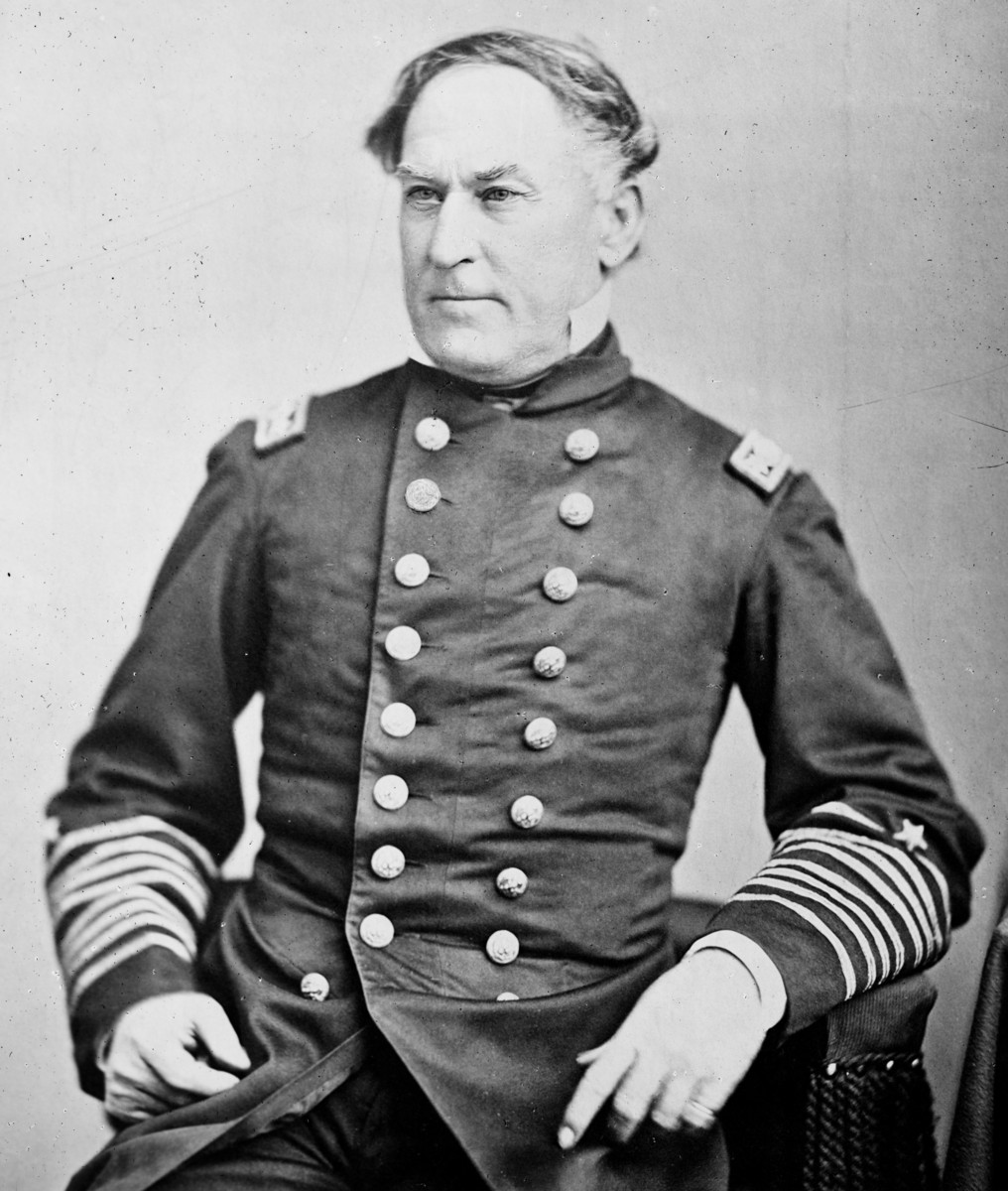
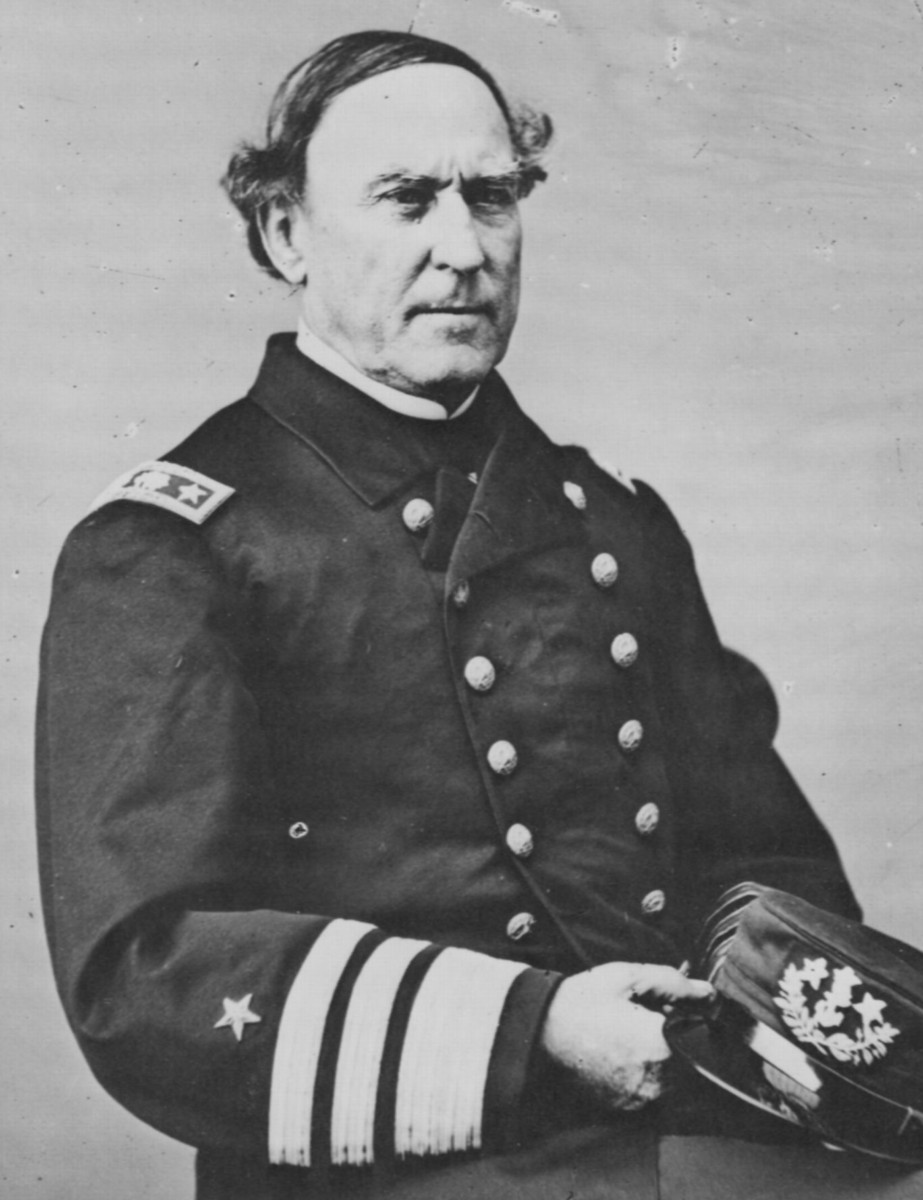 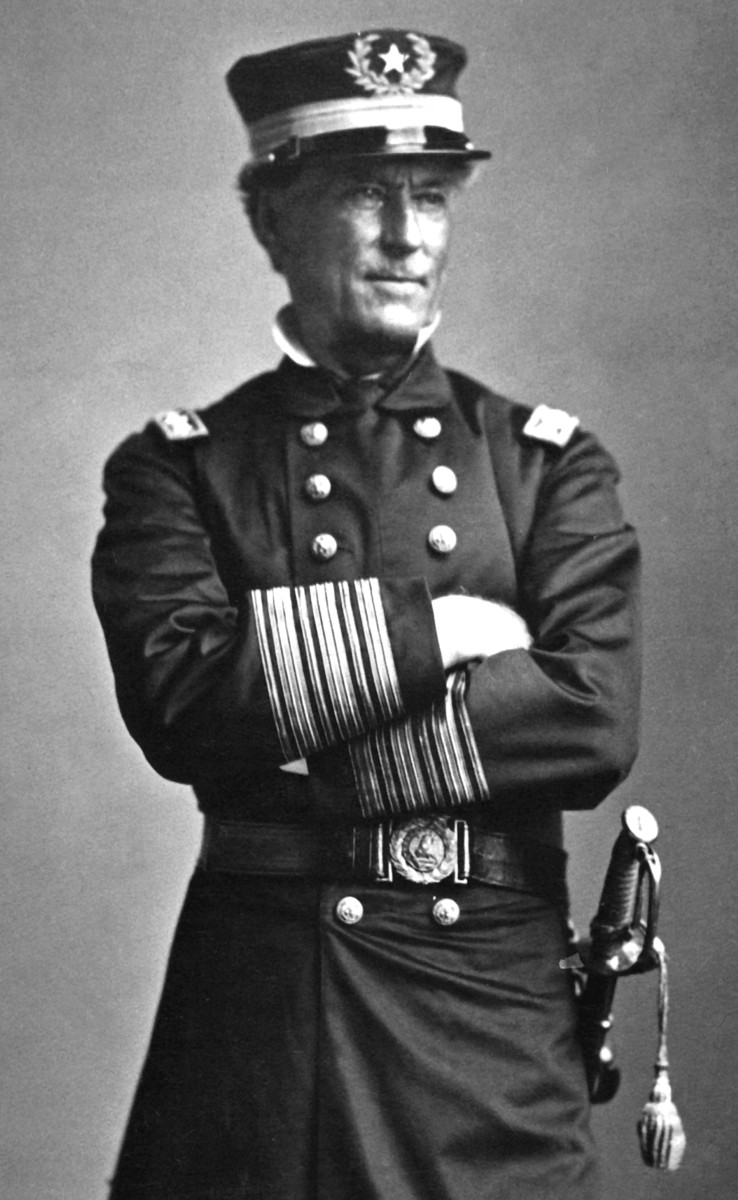
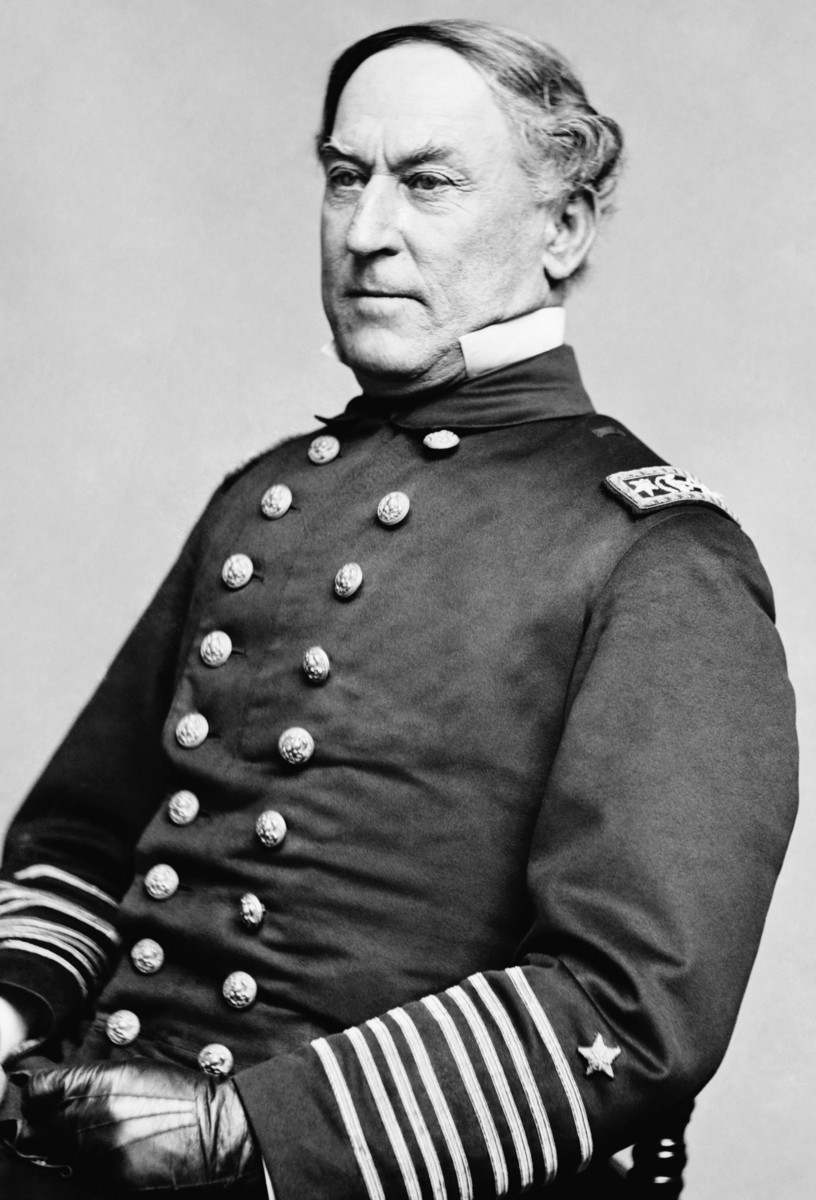 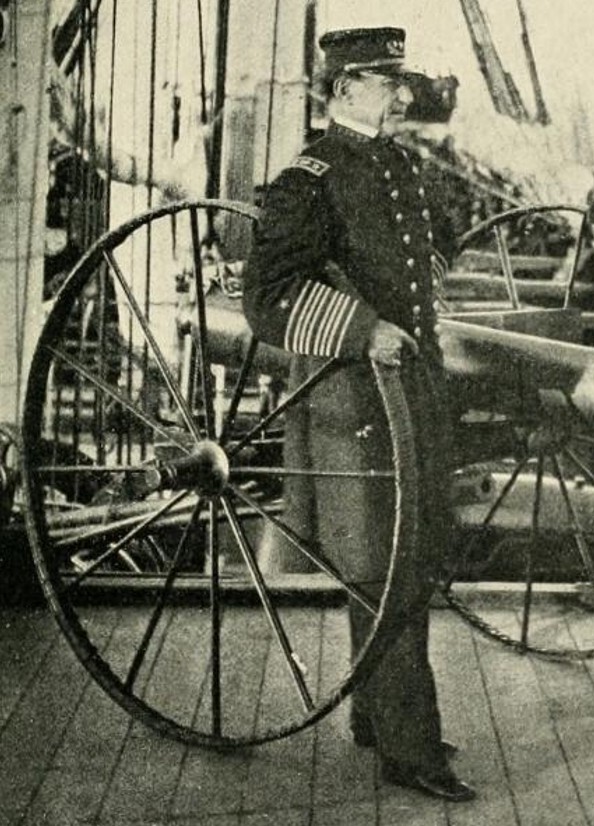 aboard USS Hartford |
||
| patches + more | ||
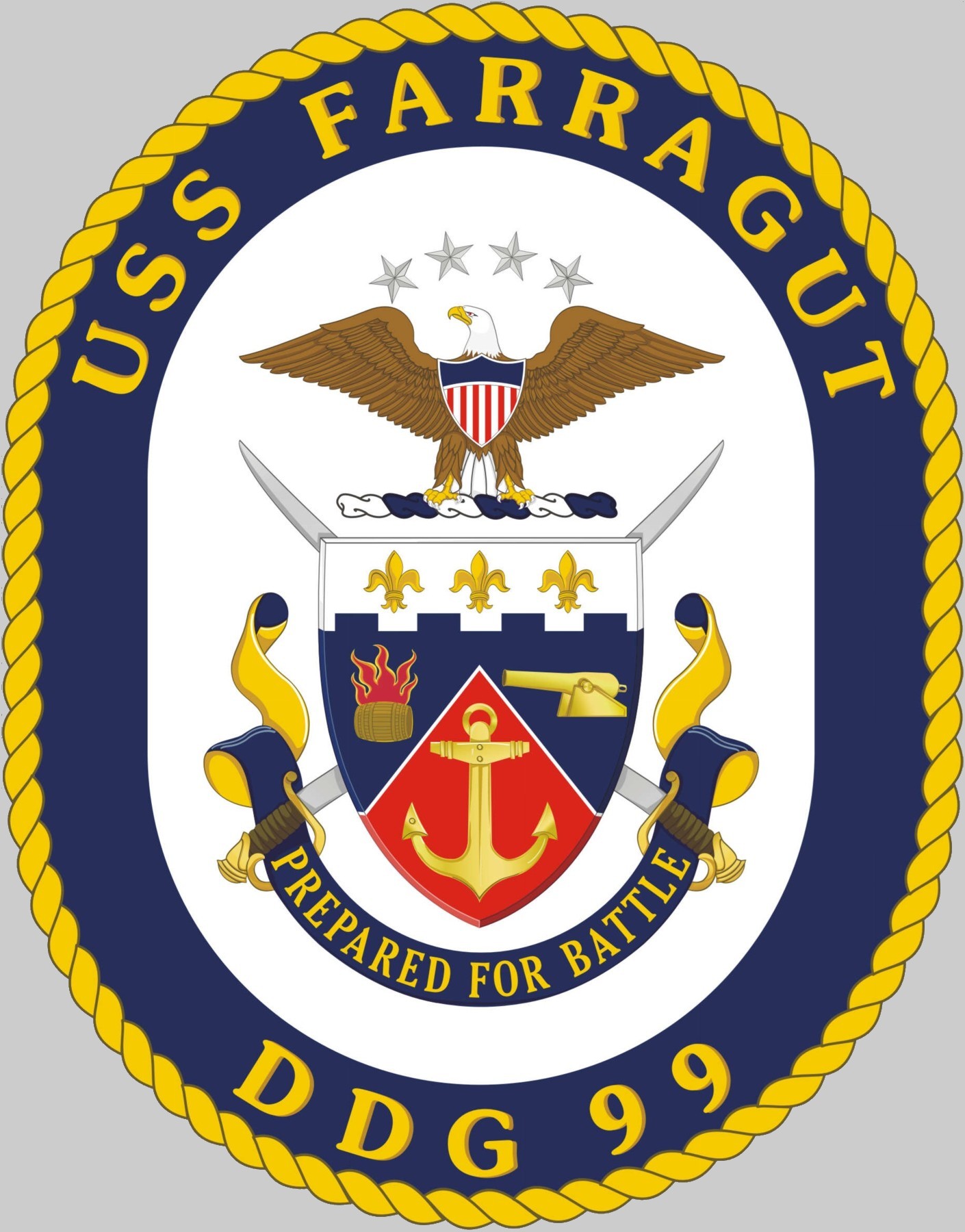 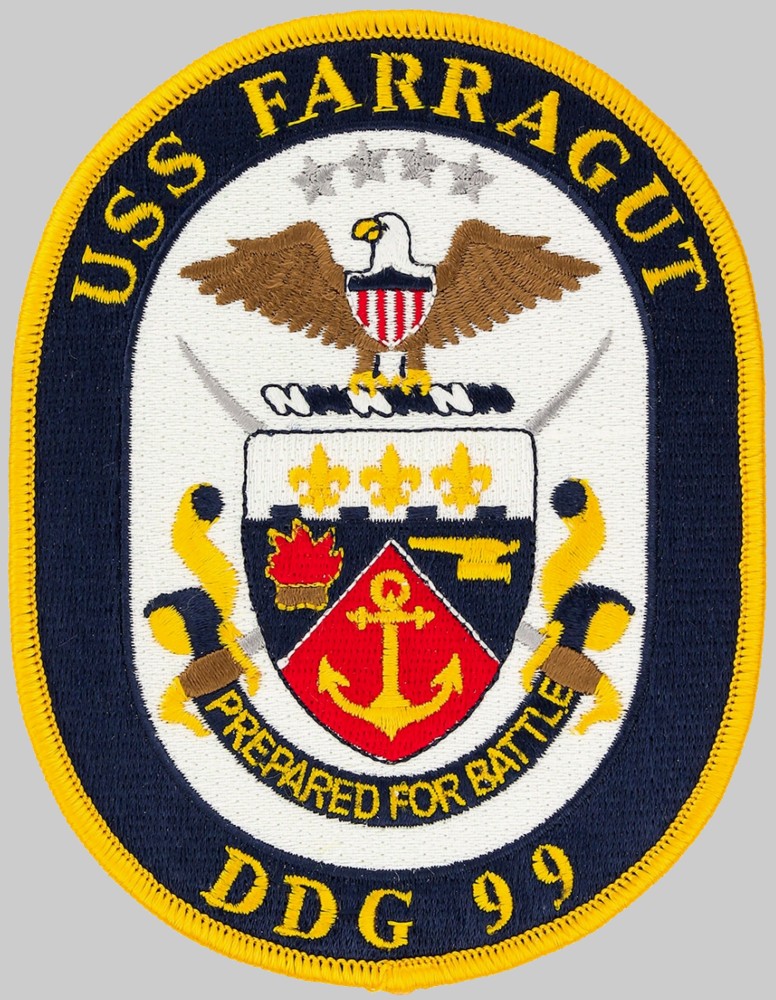 |
||
|
|
seaforces.org
|
USN ships
start page | |